Abraham Maslow
description: American psychologist, creator of Maslow's hierarchy of needs
158 results

Transcend: The New Science of Self-Actualization
by
Scott Barry Kaufman
Published 6 Apr 2020
—Adam Grant, New York Times–bestselling author of Originals and Give and Take, and host of the WorkLife podcast “In this book Kaufman studies the legacy of Abraham Maslow’s life’s work in humanistic psychology and expands on this with his own insights and studies. The book gives us a path to self-actualization, to becoming the best person we can possibly become. In the process we discover we do this connected to others and all reality.” —Sharon Salzberg, author of Lovingkindness and Real Happiness “Transcend is rich, deep, and brilliant, a pleasure to read. Scott Barry Kaufman is the new generation’s leading voice in humanistic psychology, a modern-day Abraham Maslow. Updating Maslow’s hierarchy of needs with modern psychology research, Transcend will help readers embark upon a journey to the upper reaches of their potential.”
…
Science and education, being too exclusively abstract, verbal and bookish, do not have enough place for raw, concrete, esthetic experience, especially of the subjective happenings inside oneself. —Abraham Maslow, Toward a Psychology of Being (1962) The concept of “openness to experience” played a central role in the thinking of the founding humanistic psychologists. For both Carl Rogers and Abraham Maslow, the height of self-actualization was creativity, and one of the key drivers of creativity was openness to experience. Carl Rogers simply defined openness to experience as “the opposite of psychological defensiveness.”59 Rogers conceptualized openness to experience as a mode of cognitive processing where one is open to all of one’s personal experiences, receiving conflicting information without forcing closure, tolerating ambiguity, and seeing reality clearly without imposing predetermined categories onto the world.60 In the eighties, when personality psychologists started systematically investigating the fundamental dimensions of personality, they found a specific cluster of traits that people differ on which they labeled “openness to experience.”
…
INTELLECT: FINDING YOUR WAY BACK TO SHORE Slipping into “craziness” is frightening only for those who are not fully confident of their sanity. —Abraham Maslow, Toward a Psychology of Being (1962) [Knowledge and understanding make] the person bigger, wiser, richer, stronger, more evolved, more mature. [They represent] the actualization of a human potentiality, the fulfillment of that human destiny foreshadowed by human possibilities. —Abraham Maslow, Toward a Psychology of Being (1962) While openness to experience is essential for entertaining the possibilities of creative potential, the human intellect is essential for finding your way back to shore.
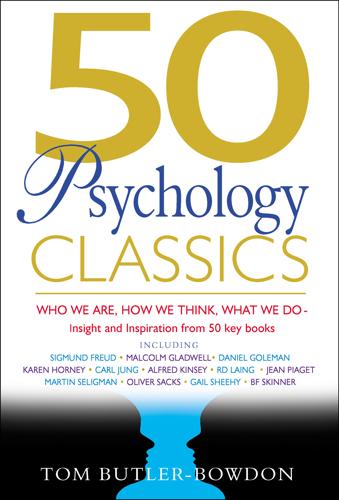
50 Psychology Classics
by
Tom Butler-Bowdon
Published 14 Oct 2007
Harris I’m OK—You’re OK (1967) 27 Eric Hoffer The True Believer: Thoughts on the Nature of Mass Movements (1951) 28 Karen Horney Our Inner Conflicts: A Constructive Theory of Neurosis (1945) 29 William James The Principles of Psychology (1890) 30 Carl Jung The Archetypes and the Collective Unconscious (1968) 31 Alfred Kinsey Sexual Behavior in the Human Female (1953) 32 Melanie Klein Envy and Gratitude (1957) 33 R. D. Laing The Divided Self: A Study of Sanity and Madness (1960) 34 Abraham Maslow The Farther Reaches of Human Nature (1971) 35 Stanley Milgram Obedience to Authority: An Experimental View (1974) 36 Anne Moir & David Jessel Brainsex: The Real Difference Between Men and Women (1989) 37 Ivan Pavlov Conditioned Reflexes: An Investigation of the Physiological Activity of the Cerebral Cortex (1927) 38 Fritz Perls Gestalt Therapy: Excitement and Growth in the Human Personality (1951) 39 Jean Piaget The Language and Thought of the Child (1923) 40 Steven Pinker The Blank Slate: The Modern Denial of Human Nature (2002) 41 V.
…
A more recent development in the cognitive field is “positive psychology,” which has sought to reorient the discipline away from mental problems to the study of what makes people happy, optimistic, and productive. To some extent this area was foreshadowed by pioneering humanistic psychologist Abraham Maslow, who wrote about the self-actualized or fulfilled person, and Carl Rogers, who once noted that he was pessimistic about the world, but optimistic about people. In the last 30 years, both behavioral and cognitive psychology have been increasingly informed by advances in brain science. The behaviorists thought it wrong to merely surmise what happened inside the brain, but science is now allowing us to see inside and map the neural pathways and synapses that actually generate action.
…
Most of the time we take it for granted, but it is only when it is lost that we can fully appreciate our brain’s ability to create the feeling of selfpossession, or be comfortable with who we are. Why we do what we do: Great thinkers on human motivation Alfred Adler, Understanding Human Nature Viktor Frankl, The Will to Meaning Eric Hoffer, The True Believer Abraham Maslow, The Farther Reaches of Human Nature Stanley Milgram, Obedience to Authority Ivan Pavlov, Conditioned Reflexes B. F. Skinner, Beyond Freedom and Dignity Alfred Adler was a member of Freud’s original inner circle, but broke away because he disagreed that sex was the prime mover behind human behavior.

Make Your Own Job: How the Entrepreneurial Work Ethic Exhausted America
by
Erik Baker
Published 13 Jan 2025
As Fromm defined it in Escape from Freedom (1940), authoritarianism was “the tendency to give up the independence of one’s own individual self and to fuse one’s self with somebody or something outside oneself in order to acquire the strength which the individual self is lacking.”11 Fromm’s friend, the young psychologist Abraham Maslow, put the point similarly in 1943: authoritarians were characterized above all by “the tendency to avoid responsibility for one’s own fate.”12 Despite the personal rift that emerged between Adorno and Fromm in the late 1930s, Adorno and his Authoritarian Personality coauthors agreed with Fromm on this count.
…
In authoritarian societies, they wrote, citizens’ “ego weakness,” their “certain lack of personal identity,” manifested in a pathological “desire to ‘conform.’”13 If authoritarianism was ultimately an expression of ego weakness, then “democracy” described an environment of ego strength and full psychological health—what Abraham Maslow, following the Gestalt psychologist Kurt Goldstein, called “self-actualization.” The counterpart to the “neurotic” authoritarian subject, Karen Horney wrote, was the individual who was “strong, courageous, independent, capable of dealing with all sorts of situations.”14 Adorno and his coauthors devoted much of The Authoritarian Personality to describing the “democratic” individuals who recorded low scores on the F-scale, the personality test they developed to gauge subjects’ predisposition to fascism.
…
Cole, director of the Harvard Research Center in Entrepreneurial History, in 1954.34 Like the business entrepreneur (and the “charismatic leader” of Weberian social theory, despite that concept’s association in the interwar period with far-right politics), the democratic leader had a mission, something compelling that he wanted to accomplish, and he was able to enlist his followers in pursuing this mission as their own. In the democratic group, organization, or society, as in the entrepreneurial firm, subordinates did not perceive conflict or tension between their freedom and that of the leader. Rather they experienced “synergy,” in the sense that Abraham Maslow and the anthropologist Ruth Benedict used that term.35 The leader exercised initiative by establishing goals, structure, and shared values for the group; the followers exercised initiative by taking the group’s goals to heart and pursuing them actively and creatively. “Leadership indeed is one manifestation of the creative proclivity,” the sociologist Robert Nisbet wrote in 1950, echoing theorists of entrepreneurial management from Chester Barnard to Werner Sombart.
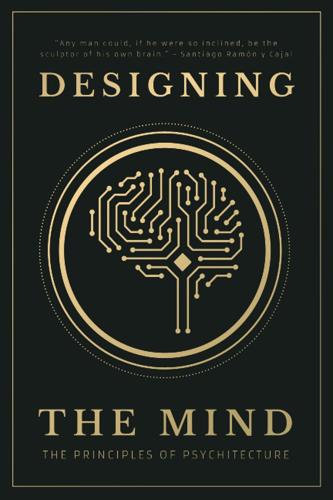
Designing the Mind: The Principles of Psychitecture
by
Designing The Mind
and
Ryan A Bush
Published 10 Jan 2021
The Value System This inner nature is not strong and overpowering and unmistakable like the instincts of animals. It is weak and delicate and subtle and easily overcome by habit, cultural pressure, and wrong attitudes toward it. - Abraham Maslow, Toward a Psychology of Being There is one area of our minds which we must understand deeply in order to live great lives - or even to know what that means. One of the great psychitectural guides, Abraham Maslow, thought each person had a biologically inscribed inner core in his mind, guiding him in the same way an acorn is guided toward becoming an oak tree. This inner core was partially unique to the individual and partially shared among all humans.
…
I don’t tend to focus on myself in this book because I find the ancient teachers, practical philosophers, and cognitive scientists who have inspired it to be far more interesting. My philosophical mentors have included Lao Tzu, Siddhārtha Gautama, Aristotle, Epicurus, Diogenes, Marcus Aurelius, Epictetus, Seneca, Michel de Montaigne, Rene Descartes, Friedrich Nietzsche, Abraham Maslow, Victor Frankl, Aaron Beck, and many more. My contemporary influences are too many to name here, but you will be introduced to them along the way. Though they did not use the term themselves, I will refer to many of these individuals as psychitectural thinkers or visionaries. I’m no more a teacher of their wisdom than a student.
…
When you insist on finding the real truth first and learning to love it second, you can become the master of your own cognition. Chapter 3: Values and the Methods of Introspection Do You Want What You Want? It isn't normal to know what we want. It is a rare and difficult psychological achievement. - Abraham Maslow, Motivation and Personality So maybe our beliefs about the external world are flawed, but if there is one thing we know, surely it is what is best for us, right? We tend to take for granted that we know what we want. Much like the beliefs we examined in the previous chapter, we all like to think we are directing our lives well.

Stealing Fire: How Silicon Valley, the Navy SEALs, and Maverick Scientists Are Revolutionizing the Way We Live and Work
by
Steven Kotler
and
Jamie Wheal
Published 21 Feb 2017
See also Paul Marko, “Exploring Facilitative Agents That Allow Ego Development to Occur,” in Pfaffenberger, ed., The Postconventional Personality, p. 99. For another survey of the role of peak states and advanced development, see Allan Badiner’ and Alex Grey’, Zig Zag Zen: Buddhism and Psychedelics (San Francisco: Chronicle Books, 2002). 34. Fifty years ago, psychologist Abraham Maslow: Abraham Maslow, Toward a Psychology of Being (Princeton, NJ: Princeton University Press, 1962). 35. A 2012 study published in Cognitive Processing took it further: Referenced in Pfaffenberger, ed. The Postconventional Personality, p. 27. Primary citations: S. Harung, F. Travis, A. M. Pensgaard, R.
…
He also found a way to study this phenomenon in regular subjects: This experiment was really a variation on earlier work done by Olaf Blanke (Arzy’s Ph.D. thesis advisor). See Olaf Blanke, Bigna Lenggenhager, and Jane Aspel, “Keeping in Touch with One’s Self: Multisensory Mechanisms of Self Consciousness,” PloS One, August 5, 2009, http://dx.doi.org/10.1371/journal.pone.0006488. 22. Abraham Maslow once famously said: Abraham Maslow, The Psychology of Science: A Reconnaissance (Chapel Hill, NC: Maurice Bassett, 2004), p. 15 23. the one in four Americans now on psychiatric medicines: “Total Number of People Taking Psychiatric Drugs in the United States,” CCHR International, https://www.cchrint.org/psychiatric-drugs/people-taking-psychiatric-drugs/. 24. the escalating rate of suicide: Sally Curtin, Margaret Warner, and Holly Hedegaard, “Increases in Suicide in the United States, 1999–2014,” NCHS Data Brief No. 241, April 2016, http://www.cdc.gov/nchs/products/databriefs/db241.htm. 25.
…
So, unlike the slog of our to-do lists, once an experience starts producing these neurochemicals, we don’t need a calendar reminder or an accountability coach to make sure we keep doing it. The intrinsically rewarding nature of the experience compels us. “So many people find this so great and high20 an experience,” wrote psychologist Abraham Maslow in his book Religion, Values, and Peak Experiences, “that it justifies not only itself, but living itself.” This explains why Silva “couldn’t live without access to these states” and left a great job at Current TV for the uncertain prospect of making more videos. It’s why action and adventure athletes routinely risk life and limb for their sports and why spiritual ascetics willingly trade creature comforts for a chance to glimpse God.

The Gifted Adult: A Revolutionary Guide for Liberating Everyday Genius(tm)
by
Mary-Elaine Jacobsen
Published 2 Nov 1999
Hoffman, Edward. (1988) The Right to Be Human: A Biography of Abraham Maslow. Los Angeles: Jeremy Tarcher, Inc., p. 187. 4. Maslow, Abraham. (1987) Motivation and Personality. New York: Harper & Row, pp. 160–161 (third edition). 5. Roeper, “Gifted Adults.” 6. Wertheimer, Max. (1959) Productive Thinking. Published posthumously and edited by Michael Wertheimer. New York: Harper & Bros., pp. 218–219. CHAPTER TEN 1. Shnayerson, Michael. (1994) “A Star is Reborn.” Vanity Fair, November, pp. 153, 194. 2. Hoffman, Edward. (1988) The Right to Be Human: A Biography of Abraham Maslow. Los Angeles: Jeremy Tarcher, p. 32. 3. von Greiffenberg, Catharina Regina. (1978) “On the Ineffable Inspiration of the Holy Spirit.”
…
It is the First Nature traits that give rise to the Intensity, Complexity, and Drive that are the more visible characteristics of giftedness. The only way to manifest what is the norm for someone with such a highly sensitive sensory apparatus and vision of how things ought to be in a world that seems radically out of sync (think of John’s colleagues’ slow-motion mouths) is to be intense, complex, and driven. As Abraham Maslow pointed out, we are all driven by the urge to meet our needs. What if one of our most fundamental needs is to have things be just so? What do we do if our precise sense of proportion sets off an alarm in our heads when the figures we’ve drawn are slightly skewed? We stop, assess, and start over, again and again, until we get it right.
…
If we look logically at our characteristics without getting bogged down with worries about being too self-congratulatory or fearful of overshooting the mark, then we can relax into who and what we are. A part of this quest toward self-acceptance comes in a change in our self-concept and understanding the depth and breadth of our abilities. In recent years, noted humanistic psychologist Abraham Maslow theorized about the human need for meaningful endeavor at the higher levels of human evolution. His famous “hierarchy of needs” suggests that well-being begins with aspects of survival (for example, food, shelter, water, procreation) and progresses through a system of needs that includes such things as a sense of belonging to a group.

The Gifted Adult: A Revolutionary Guide for Liberating Everyday Genius(tm)
by
Mary-Elaine Jacobsen
Published 18 Feb 2015
Hoffman, Edward. (1988) The Right to Be Human: A Biography of Abraham Maslow. Los Angeles: Jeremy Tarcher, Inc., p. 187. 4. Maslow, Abraham. (1987) Motivation and Personality. New York: Harper & Row, pp. 160–161 (third edition). 5. Roeper, “Gifted Adults.” 6. Wertheimer, Max. (1959) Productive Thinking. Published posthumously and edited by Michael Wertheimer. New York: Harper & Bros., pp. 218–219. CHAPTER TEN 1. Shnayerson, Michael. (1994) “A Star is Reborn.” Vanity Fair, November, pp. 153, 194. 2. Hoffman, Edward. (1988) The Right to Be Human: A Biography of Abraham Maslow. Los Angeles: Jeremy Tarcher, p. 32. 3. von Greiffenberg, Catharina Regina. (1978) “On the Ineffable Inspiration of the Holy Spirit.”
…
It is the First Nature traits that give rise to the Intensity, Complexity, and Drive that are the more visible characteristics of giftedness. The only way to manifest what is the norm for someone with such a highly sensitive sensory apparatus and vision of how things ought to be in a world that seems radically out of sync (think of John’s colleagues’ slow-motion mouths) is to be intense, complex, and driven. As Abraham Maslow pointed out, we are all driven by the urge to meet our needs. What if one of our most fundamental needs is to have things be just so? What do we do if our precise sense of proportion sets off an alarm in our heads when the figures we’ve drawn are slightly skewed? We stop, assess, and start over, again and again, until we get it right.
…
If we look logically at our characteristics without getting bogged down with worries about being too self-congratulatory or fearful of overshooting the mark, then we can relax into who and what we are. A part of this quest toward self-acceptance comes in a change in our self-concept and understanding the depth and breadth of our abilities. In recent years, noted humanistic psychologist Abraham Maslow theorized about the human need for meaningful endeavor at the higher levels of human evolution. His famous “hierarchy of needs” suggests that well-being begins with aspects of survival (for example, food, shelter, water, procreation) and progresses through a system of needs that includes such things as a sense of belonging to a group.
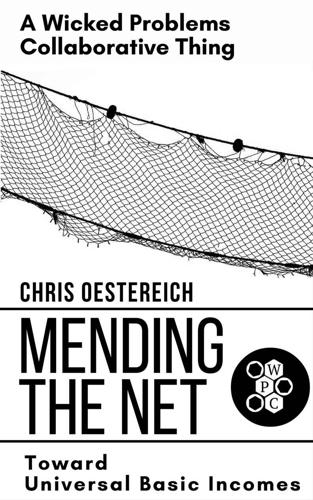
Mending the Net: Toward Universal Basic Incomes
by
Chris Oestereich
Published 20 Oct 2016
Chris Oestereich chris@wickedproblemscollaborative.com Publisher of the Wicked Problems Collaborative 1. Food, Water, & Shelter – From Basic Needs to Basic Income "Moved on to another town tried hard to settle down for every job, so many men so many men no one needs." -Peter Gabriel and Kate Bush "Don't Give Up" (1986) Abraham Maslow was an American psychologist who rose to prominence in the early part of the 20th century. He's primarily remembered for developing a framework that attempted to explain human motivation. Maslow’s “Hierarchy of Needs” is often visually represented as a pyramidal diagram of successive layers: physiological, safety, love, esteem, and self-actualization.
…
Chris brings a strong desire to learn, a bent towards keeping an open mind, and a compulsive reading habit to bear on whatever tickles his fancy. He and his wife Eileen are currently raising their kids in Thailand, but they’re always on the lookout for the next adventure. Chris can be reached at: chris@wickedproblemscollaborative.com References * * * [1] Abraham Maslow, “A Theory of Human Motivation,” Psychological Review, Vol 50(4), Jul 1943, 370-396, http://psycnet.apa.org/journals/rev/50/4/370/. [2] Julianna W. Miner, “Why 70 percent of kids quit sports by age 13,” The Washington Post, June 1, 2016, https://www.washingtonpost.com/news/parenting/wp/2016/06/01/why-70-percent-of-kids-quit-sports-by-age-13/
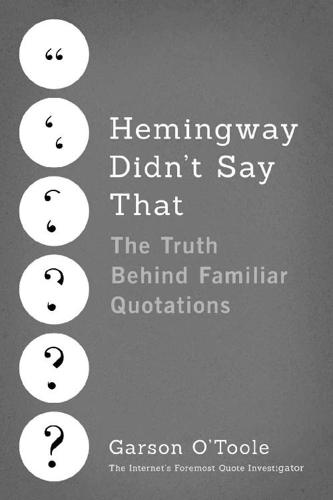
Hemingway Didn't Say That: The Truth Behind Familiar Quotations
by
Garson O'Toole
Published 1 Apr 2017
In September 1974 a columnist for the Times-Picayune newspaper of New Orleans, Louisiana, printed an instance of the expression sent by an inquirer who was eager to know the identity of the maxim’s creator:10 Who said “If all you have is a hammer, you treat everything as a nail?” inquired “Puzzled.” In November 1974 the same New Orleans columnist relayed an answer to his readers. The saying was traced back to Abraham Maslow and not to Abraham Kaplan. Also, the wording was slightly altered.11 MAGICIAN Ernie Heldman turned himself into The Times-Picayune with the source of the quotation: “If the only tool you have is a hammer, you tend to treat everything as if it were a nail.” Abraham Maslow said it in “The Psychology of Science,” published in 1966. In 1981 the financial adviser Howard J. Ruff published Survive and Win in the Inflationary Eighties.
…
With respect to the conduct of inquiry, and especially in behavioral science, I label this effect “the law of the instrument.” The simplest formulation I know of the law of the instrument runs this way: give a small boy a hammer and it will turn out that everything he encounters needs pounding. In 1966 the prominent psychologist Abraham Maslow published The Psychology of Science: A Reconnaissance. He presented an instance of the adage that is closer to the common modern versions. The word “nail” was part of this instance.8 I remember seeing an elaborate and complicated automatic washing machine for automobiles that did a beautiful job of washing them.
…
Ruff published Survive and Win in the Inflationary Eighties. The title of the book’s fourth chapter was an instance of the saying:12 CHAPTER 4 When You Have a Hammer in Your Hand, Everything Looks Like a Nail In 1982 an MIT professor attributed an instance of the saying to Maslow, as reported in the New York Times.13 “Abraham Maslow once said that to him who has only a hammer, the whole world looks like a nail,” said Joseph Weizenbaum, a professor of computer science at M.I.T. In 1984 the famous investor Warren Buffett used the adage when criticizing academic studies of financial markets that emphasized inappropriate mathematical techniques.14 It isn’t necessarily because such studies have any utility; it’s simply that the data are there and academicians have worked hard to learn the mathematical skills needed to manipulate them.

Geek Heresy: Rescuing Social Change From the Cult of Technology
by
Kentaro Toyama
Published 25 May 2015
Without taking away from anyone’s uniqueness – each of these people is a gem on the pebble beach of humanity – there’s no doubt that a pattern is at work.19 A pattern of human maturation. A pattern of intrinsic growth. A pattern of expanding heart, mind, and will. Maslovian Development Developmental psychology has many theories that could explain this pattern. The one that best fits what I’ve witnessed is the well-known hierarchy of needs developed by the psychologist Abraham Maslow. Lists of the world’s eminent psychologists inevitably include Maslow, and his ideas have taken firm root in fields well beyond psychology.20 But if Maslow’s hierarchy is a bit of a celebrity meme, it has suffered for its popularity – it’s widely misunderstood. Many people have heard about the hierarchy from pop psychology, and while some of what they’ve heard is correct, it’s mixed with inaccurate rumor-mongering.
…
In other words, aspirations for self-expression support an egalitarian view of gender as well as a strong democracy. Inglehart and Welzel themselves cited Maslow: “Aspirations for choice and self-expression are universal human aspirations: attaining them brings feelings of self-fulfillment, as Abraham Maslow pointed out long ago.”23 To explain how self-expression values lead to more democratic societies, they invoked Maslow’s terminology: “As individual safety and autonomy reduce egocentrism, they increase homocentrism” – the concern for all humankind that Maslow saw in self-actualizing and self-transcendent people.24 “What happens to [people’s] desires when there is plenty of bread?”
…
But these figures underestimate the influence of the creative class, who, combined, command half the wages of the US workforce, control many of the most powerful institutions in the country, and design the form and content of the goods that consumers buy. In economically advanced European countries, the creative class makes up a similar share of the workforce.32 Among the creative class, self-actualization is a prominent theme. Florida wrote, “Creative workers do not merely move up the scale in Abraham Maslow’s classic hierarchy of needs. Most are not very worried about meeting the basic needs of subsistence; they’re already on the upper rungs of the ladder, where intrinsic rewards such as esteem and self-actualization are sought.”33 Florida’s creative class is less motivated by the lower levels of Maslow’s hierarchy: Money represents not survival and security but “just a way to keep score,” and “the best people in any field are motivated by passion.”34 Even esteem needs take a particular form.

Affluenza: The All-Consuming Epidemic
by
John de Graaf
,
David Wann
,
Thomas H Naylor
and
David Horsey
Published 1 Jan 2001
The people of the medieval era stressed the importance of loyalty to and faith in a communally held vision.”3 During resource-scarce periods, the Japanese culture developed kenjutsu (fencing), jujitsu (martial arts), saka (tea ceremony and flower arrangement), go (Japanese “chess"), and many other cultural refinements. The culture became so highly evolved, according to Sakaiya, that the firearm was banned as too crude and destructive a method of settling differences. When humanist psychologist Abraham Maslow observed the Canadian Blackfoot Indian culture in the 1930s, he too found evidence that the concept of wealth is a social construct, based partly on instinct and partly on the strategic pursuit of such socially laudable goals as equity, diversity, and resourcefulness. In short, wealth is far more than just money.
…
Everyone knows a few unique individuals—usually elderly—who are healthy, wise, playful, relaxed, spontaneous, generous, open-minded, and loving: people who focus on problems outside themselves and have a clear sense of what’s authentic and what’s not. They are people for whom life gets in the way of work, on purpose. For them, work is play, because they choose work they love. Abraham Maslow termed these people “self-actualized” individuals. He placed a lot of faith in the human potential to meet basic needs and then progress—under one’s own guidance—up a hierarchy of needs toward fulfillment. Before he died in 1969, Maslow concluded that most Americans had met the basic physical (the only ones that are primarily material) and security needs, and had progressed to at least the “love and belongingness” rung of the hierarchy.
…
Meadows, Dennis Meadows, and Jorgen Randers, Beyond the Limits (Post Mills, Vt.: Chelsea Green, 1992), 216. 3. Taichi Sakaiya, The Knowledge-Value Revolution; or, A History of the Future (Tokyo and New York: Kodansha International, 1991), 43. 4. Edward Hoffman, The Right to Be Human: A Biography of Abraham Maslow (Wellingborough, UK: Crucible Press, 1989), 122, 128. 5. Andrew Weil, Eating Well for Optimum Health (New York: Alfred A. Knopf, 2000), 21. 6. Eric Fromm, To Have or to Be? (New York: Bantam, 1982), 155. 7. Jane Brody, “Cybersex Gives Birth to a Psychological Disorder,” New York Times, May 16, 2000: D7. 8.
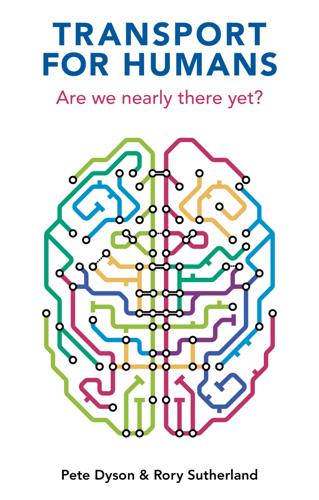
Transport for Humans: Are We Nearly There Yet?
by
Pete Dyson
and
Rory Sutherland
Published 15 Jan 2021
If you need evidence that humans are messy, non-rational and fickle creatures, then surely this is it. A shifting hierarchy of user needs If transport is for humans, then what aspects of the experience might we target improving? We can begin to prioritize by adapting a hierarchy of needs that follows Abraham Maslow’s iconic contribution to psychology in 1943, which we acknowledge isn’t perfect, but works here to illustrate an important point.20 Sitting at the base of our pyramid are essential factors like reliability and safety, with desirable factors like pleasure and enjoyment placed above. Crucially, to access higher-level needs, the basics must be satisfied.
…
Habituation reduces the visibility of other options, and eventually it lessens our capability to use these options at all. Research by London’s Roads Task Force found that only 14% of all trips by drivers involve thought about which mode of travel to use, with just 4% giving serious thought to this question for any given journey.2 To paraphrase Abraham Maslow, the creator of the hierarchy of needs: ‘if all you ever use is a car, every journey looks like a drive’. Social norms often guide us through uncertainty, but they also restrict our choices to those we feel other people will find acceptable and to those that are consistent with our identity. This means that it feels bad to change our habits even when we find out about other options.
…
R. McMaster, a US National Security Advisor between 2017 and 2018, used the term ‘strategic narcissism’ to describe ‘the tendency to define challenges that we face only in relation to us, and then assume that what we prefer to do will be decisive to achieving a favourable outcome’.6 In 1966 Abraham Maslow, the psychologist who created the ‘hierarchy of needs’, coined the phrase: ‘If the only tool you have is a hammer, it is tempting to treat everything as if it were a nail.’ 7 In the United Kingdom, this effect is sometimes affectionately called a Birmingham screwdriver, but it is now more formally known as ‘attribution substitution’: when a target attribute is computationally complex, we are inclined to substitute a more easily calculated attribute.

Personal Kanban: Mapping Work, Navigating Life
by
Jim Benson
and
Tonianne Demaria Barry
Published 2 Feb 2011
An efficiency tool: focusing on our value stream encourages us to find ways to do more while expending less effort. An effectiveness tool: making our options explicit leads us to make informed decisions. We’re all capable of having bursts of productivity, efficiency, and effectiveness—punctuated moments of heightened clarity, sense of purpose, and self-validation. Psychologist Abraham Maslow referred to these as “peak experiences”—revelatory or illuminating states of consciousness when we are operating at our best.1 Popularly we refer to this state as being “in the zone.” These are instances when we recognize that right then, at that moment, there is a special quality for how our brain is working, how good we feel about our work, and how right our actions feel.
…
Clarity raises the bar for “normal” workers. When we have clarity, we use our time efficiently, we act with informed certainty, and we do a better job. Regardless of hero or non-hero status, even if the project itself is not a success, everyone can excel with clarity, everyone can provide value. Psychologist Abraham Maslow’s oft-quoted and perpetually misunderstood “Hierarchy of Needs” depicts interdependent levels of human physical, social, and psychological need. Clarity is not an esoteric luxury, it is universally essential. So why then, among a list of the instinctive needs of a fully functioning person, is clarity nowhere to be found?

The Buddha and the Badass: The Secret Spiritual Art of Succeeding at Work
by
Vishen Lakhiani
Published 14 Sep 2020
It was the strength of a person’s social connections that mattered most. I wrote about my survey of job candidates in the introduction to Part II in this book and how it led me to identify four clusters of basic human needs that underlie top performance. There’s more to the story than that. Later, I was getting into the work of Abraham Maslow and noticed a fascinating similarity: The four quadrants on my diagram almost perfectly matched the four upper levels of Maslow’s pyramid. Maslow’s hierarchy of needs shows the universal stages of motivation that all humans go through. Maslow says that in order for any person to move from one level to the next, the underlying needs must be satisfied.
…
In these instances a person questions whether they are good enough, and the memory of the hurt gets etched into their being. There’s a chink in the core belief “I am enough.” From that moment, life becomes a quest to prove they matter to the world. I don’t know anyone who doesn’t deal with this in some manner. And I am no exception. The chasing of significance aligns with the fourth level of Abraham Maslow’s pyramid, which he categorizes as Esteem. Maslow’s theory suggests that when a person’s Physical Safety and Love/Belonging needs are met, being appreciated and respected predominantly motivates behavior. I studied something I didn’t enjoy and took a job I didn’t like because I wanted to feel significant and raise my self-esteem.
…
To the thought leaders who are no longer with us but who have influenced my life and the ideas in this book: Buckminster Fuller, for showing me how to tackle impossible problems; Terrence McKenna, for your stand for people living self-expressed lives, for your mind-bending wisdom, and for contributing to my worldview; Rumi, for your spiritual guidance and your poems that have stuck with me and shaped the way I work; Martin Luther King Jr., for inspiring us all to live bravely; and Abraham Maslow, for revolutionizing the field of human psychology with your Hierarchy of Needs. ALSO BY VISHEN LAKHIANI The Code of the Extraordinary Mind ABOUT THE AUTHOR Vishen Lakhiani is the founder and CEO of Mindvalley, an online learning platform that combines media, filmmaking, tech, and real-world events to build its education empire, with over two million students.
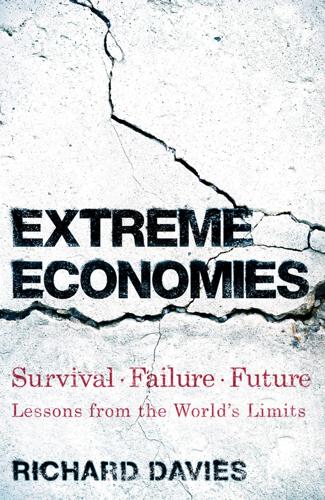
Extreme Economies: Survival, Failure, Future – Lessons From the World’s Limits
by
Richard Davies
Published 4 Sep 2019
Then the rice fields of lowland Aceh begin, and a rich green carpet runs out all the way to the deep-blue ocean of the Malacca Strait. 2 Zaatari A musician must make music, an artist must paint, a poet must write, if he is to be ultimately at peace with himself. What a man can be, he must be. Abraham Maslow, Motivation and Personality, 1954 ZAATARI EMERGES THE FOX They call him the Fox because of his eyes. Khaled’s gaze flicks from side to side as he scans the horizon, looking for danger or opportunity. He needs to be alert. As the kingpin of a syndicate of renegade traders he leads a precarious existence.
…
But with no trade taking place in the market, there was no need to clean: no packaging to recycle, no discarded malfouf leaves to sweep up. So the men spent the afternoon sitting on the floor with nothing to do, in the shade of one of the many empty shop units. A couple were talking, but most just stared out across the desert. THE PYRAMID OF LIFE Abraham Maslow would have had firm opinions about which of the two refugee camps, Azraq or Zaatari, was a better place to rebuild a life uprooted by war. Maslow was born in Brooklyn in 1908, the eldest son of immigrants from Kiev. From humble beginnings he became an influential figure in psychology, teaching at Columbia University in New York City and rising to be president of the American Psychological Association.
…
Yet official bodies such as Jordan’s SRAD and the UNHCR – the organizations with the power to change these camps – saw the emergence of uncontrolled and unregulated Zaatari as an aberration. So they built Azraq to a model, an idealized camp that had learned the lessons from errors made in Zaatari. Visiting these economies, talking to the people who live there, and seeing them through the lens of the human needs outlined by Abraham Maslow suggests the official conclusions were the wrong way round. The camps offer the first glimpse of a theme that is central to the failures of the three economies in the second part of this book – that even benign policymakers can get economic planning badly wrong. By 4.30 p.m. on my final day in Zaatari my curfew had been broken.
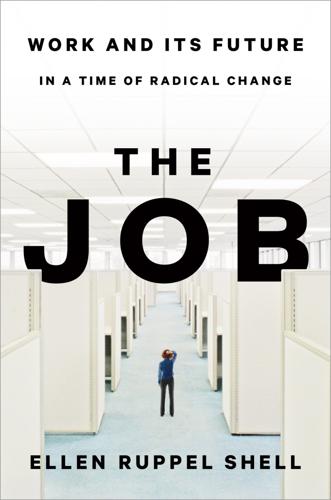
The Job: The Future of Work in the Modern Era
by
Ellen Ruppel Shell
Published 22 Oct 2018
While few would deny that many jobs require commitment, passion is perhaps better reserved for matters of the heart. So from where stems the idea that passion—that most ineffable of qualities—is necessary for a meaningful working life? That’s hard to say, but some trace it to the work of psychologist Abraham Maslow. Maslow was born and raised poor in Brooklyn, the oldest of seven children in a very unhappy family; he loathed his abusive parents and as a young man he loathed himself. But in graduate school, he came to believe that there were indeed good people in the world, and that Freudian theory placed too much emphasis on psychopathologies and not enough on human strengths.
…
Hard work brought Wrzesniewski a partial scholarship to the University of Pennsylvania, just as the new movement in positive psychology was taking hold there in the early 1990s. Freudians centered their attention on pathologies of despair—narcissism, paranoia, depression, schizophrenia. “Positive psychologists” (like Abraham Maslow, a father of the movement) looked in a more hopeful direction, to characteristics that predispose us to thrive: generosity, optimism, resilience, courage. In graduate school, Wrzesniewski was naturally drawn to this positive approach, but she harbored no illusions. “Growing up, I saw that work could bring great joy,” she told me.
…
To do more, they came to worry, was to risk losing their jobs. Wrzesniewski was saddened by this, but not surprised. “There was no way to monetize the value the cleaners were adding to the patient experience,” she told me. “And the bottom line is paramount. I’ve never seen an organization that sees worker dignity as a terminal value.” Psychologist Abraham Maslow, creator of the hierarchy of needs paradigm, confided in his diaries that he saw his theories as a compromise, a way of threading a path through delicate institutional hierarchies without treading on ideological toes. His goal was not to help workers directly but to help employers create an environment where the needs of the individual were naturally aligned with the demands of the organization.
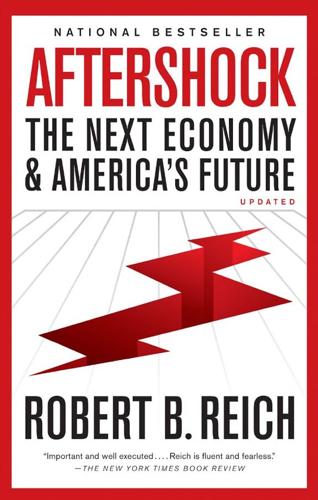
Aftershock: The Next Economy and America's Future
by
Robert B. Reich
Published 21 Sep 2010
Once we’ve enjoyed something, the next experience of it is not quite as wonderful, and the third might even be humdrum. As long as we’re not destitute, happiness is less about getting what we want than about appreciating what we already have. Much of what people want can’t be bought anyway. In 1943, behavioral scientist Abraham Maslow wrote “A Theory of Human Motivation,” a paper in which he posited a hierarchy of human needs. At the bottom are food, shelter, sex, and sleep (of which the first two are typically purchased, although markets also exist for the latter two). Next come safety and security (which we normally purchase as well, typically through locks on the doors and taxes that pay for police officers and a system of criminal justice).
…
Ellsworth, Jr., “The Depression Generation,” The North American Review 234 (October 1932). 3 University of Michigan researcher Ronald Inglehart: See Ronald Inglehart, Christian Welzel, and Roberto Foa, World Values Survey: Happiness Trends in 24 Countries, 1946–2006, January 2008. 4 In 1943, behavioral scientist Abraham Maslow: The original article appeared in Psychological Review 50, no. 4 (1943): 370–96. See also Janet Simons, Donald Irwin, and Beverly Drinnien, Psychology: The Search for Understanding (New York: West Publishing Company, 1987). 5 Before the Great Recession: See press release: Annals of Internal Medicine, University of Chicago Medical School Press, December 6, 2004. 6 In 2007, Americans spent a whopping $23.9 billion: J.

Made to Stick: Why Some Ideas Survive and Others Die
by
Chip Heath
and
Dan Heath
Published 18 Dec 2006
“Don’t say, ‘People will enjoy’”: Caples/Hahn, Tested Advertising, 133. Cable TV in Tempe: W. Larry Gregory, Robert B. Cialdini, and Kathleen M. Carpenter, “Self-Relevant Scenarios as Mediators of Likelihood Estimates and Compliance: Does Imagining Make It So?” Journal of Personality and Social Psychology 43 (1982): 89–99. In 1954, a psychologist named Abraham Maslow: Abraham Maslow, Motivation and Personality (New York: Harper, 1954). Subsequent research suggests that the hierarchical: See any introductory book in psychology. Every textbook author prints a picture of Maslow’s hierarchy because it’s a great graphic, then confesses that the hierarchical aspect of his theory didn’t quite work.
…
Maslow Self-interest isn’t the whole story, of course—especially if we define “self-interest” narrowly, as we often do, in terms of wealth and security. If it were the whole story, no one would ever serve in the armed forces. There are things people care about that would never appear in a Caples ad. In 1954, a psychologist named Abraham Maslow surveyed the research in psychology about what motivates people. He boiled down volumes of existing research to a list of needs and desires that people try to fulfill: Transcendence: help others realize their potential Self-actualization: realize our own potential, self-fulfillment, peak experiences Aesthetic: symmetry, order, beauty, balance Learning: know, understand, mentally connect Esteem: achieve, be competent, gain approval, independence, status Belonging: love, family, friends, affection Security: protection, safety, stability Physical: hunger, thirst, bodily comfort You may remember this list as Maslow’s Pyramid, or Maslow’s Hierarchy of Needs.
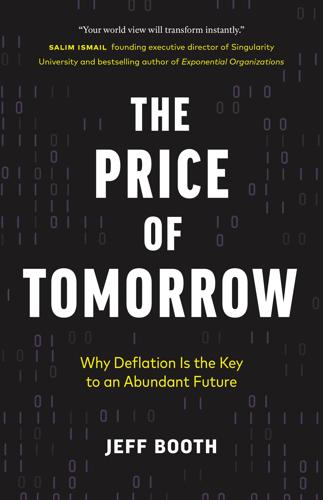
The Price of Tomorrow: Why Deflation Is the Key to an Abundant Future
by
Jeff Booth
Published 14 Jan 2020
And even if you do not agree with everything Elon Musk does or says, it is hard to argue that he has not mastered the ability to influence and, because of that influence, has accelerated numerous industries for the betterment of humanity. With so much to be gained, understanding how humans make decisions and how to influence those decisions is central to power: gaining it and keeping it. In 1943, American psychologist Abraham Maslow (1908–1970) proposed a theory that all humans possess a hierarchy of needs from basic need to self-actualization: some needs were more important than others, and needs on one level must be satisfied before the next can be addressed.62 As an example, survival is a basic need and, as a result, is the first thing that motivates our behaviour.
…
Roy Baumeister and Mark Leary, “The Need to Belong,” Psychological Bulletin, May 1995, pages 497–529. dx.doi.org/10.1037/0033-2909.117.3.497. 60. Muzafer Sherif, Group Conflict and Co-operation (London: Routledge & Kegan Paul Limited, 1966). 61. Frank Outlaw, “Watch Your Thoughts, They Become Words; Watch Your Words, They Become Actions,” Quote Investigator, January 10, 2013. quoteinvestigator.com/2013/01/10/watch-your-thoughts. 62. Abraham Maslow, “A Theory of Human Motivation,” Psychological Review (1943), pages 370–396. 63. Louis Tay and Ed Diener, “Needs and Subjective Well-Being around the World,” Journal of Personality and Social Psychology, August 2011, pages 354–365. psycnet.apa.org/doiLanding?doi=10.1037%2Fa0023779. 64. Yu-kai Chou, “Octalysis—The Complete Gamification Frame-work,” yukaichou.com/gamification-examples/octalysis-complete-gamification-framework. 65.
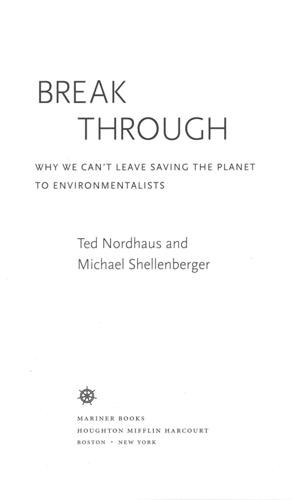
Break Through: Why We Can't Leave Saving the Planet to Environmentalists
by
Michael Shellenberger
and
Ted Nordhaus
Published 10 Mar 2009
And in consistently defining the interests of others—whether they are corporate executives, labor unions, or Brazilian peasants—as outside the categories of the environment and nature, environmental and conservation leaders have failed to create a politics capable of dealing with ecological crises. 2. In 1943, the American psychologist Abraham Maslow wrote a seminal paper called “A Theory of Human Motivation.”8 In it he introduced the theory that humans have a “hierarchy of needs,” a deceptively simple concept that many of us can still remember seeing as a multicolor pyramid in our high school social studies classes. At the bottom of the pyramid there were the basic material needs: food, shelter, and security.
…
By this standard, virtually every American today—in contrast to roughly one-third of all Americans in the 1930s—has more than met his or her material needs and is a postmaterialist.7 Once we meet our material needs, we all experience a variety of postmaterial needs that are no less strongly felt than our material needs for sustenance and security. This was Abraham Maslow’s central insight—that higher needs such as personal freedom, meaningful work, and self-creation do not emerge strongly among those who have barely enough to eat or nowhere safe to live.8 And while some social scientists and psychologists quibble with elements of Maslow’s hierarchy,9 the underlying concept—that there exists a universal hierarchy of human needs—remains to this day the consensus among social scientists.10 Postmaterialists still have material needs.
…
Greatness appeals to the future.” Ralph Waldo Emerson, “Self-Reliance,” in The Essential Writings of Ralph Waldo Emerson (New York: Random House, 2000), 133, 135, 139. [back] 37. “Become who you are!” Friedrich Nietzsche, Thus Spoke Zarathustra (New York: Barnes and Noble Books, 2005). [back] 38. Abraham Maslow, Toward a Psychology of Being (New York: John Wiley and Sons, 1968, 1999), 149–234. [back] 39. “If we value independence, if we are disturbed by the growing conformity of knowledge, of values, of attitudes, which our present system induces, then we may wish to set up conditions of learning which make for uniqueness, for self-direction, and for self-initiated learning.”

The Purpose Economy: How Your Desire for Impact, Personal Growth and Community Is Changing the World
by
Aaron Hurst
Published 31 Aug 2013
Arthur is a classic example of the Millennial workforce: entrepreneurial, ambitious, and socially-oriented. The Millennial generation (those born in the 1980s and 1990s) has become known as the purpose generation. It is increasingly a generation known for its desire to make a difference, grow, and share its passion with the world.3 Abraham Maslow famously put forward a pyramid model to explain human motivations, in which basic survival needs form the base, and others, such as self-esteem and creative expression, only become concerns, or needs, when the more basic ones are satisfied. That this set of priorities is being expressed so powerfully by the Millennials is a natural result of a larger social shift that’s been taking place, a shift up Maslow’s hierarchy of needs.
…
Positive psychology has materialized in the last dozen years to examine the role of meaning and well-being in our lives and at work. Researchers in the field study how human beings prosper in the face of adversity and the conditions necessary for them to flourish. While the term ‘positive psychology’ was first coined by Abraham Maslow in the 1950s, it was the University of Pennsylvania’s Martin Seligman who popularized the idea in 1998, when he presented it in his presidential address at the annual meeting of the American Psychological Association. He was one of a growing group of leaders in psychology who were unhappy with the disease-oriented field and saw a void when it came to studying positive psychological traits like meaning, courage, and happiness.
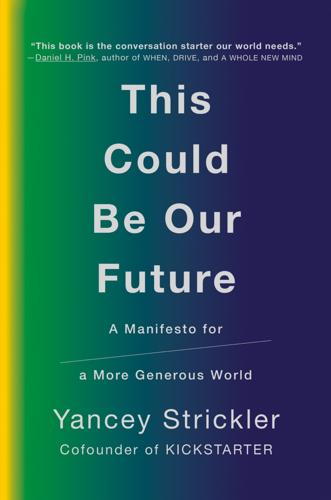
This Could Be Our Future: A Manifesto for a More Generous World
by
Yancey Strickler
Published 29 Oct 2019
It’s pro-money. It’s just pro-people, too. In service of people, money can be a very positive force. But when we live our lives serving money—by choice or because we have no choice—we severely limit our potential. THE IMPORTANCE OF MONEY In 1943, a thirty-five-year-old sociologist named Abraham Maslow published a paper in Psychological Review called “A Theory of Human Motivation.” In it, Maslow presented a theory that people move through a series of needs in their lives, and that each need is a stepping-stone to the next. Maslow saw five needs that people move through: Physiological needs (food, water, shelter) Safety (health, physical, financial) Love (family, friendships, belonging) Esteem (the drive to achieve, live meaningfully, be recognized) Self-actualization (“to become everything that one is capable of becoming”) Ideally, a person’s life progresses through these stages.
…
Each Bento has its own core values and ways of valuing that set the norms for that space. They don’t encompass every value possibility. Just what’s at the root level. Now Me is about the here and now. This is life as we know it today. In Now Me the governing values are security, pleasure, and autonomy. Security reflects the first rungs of Abraham Maslow’s hierarchy of needs. Security is the voice that pushes us to provide for ourselves. The drive for money that’s actually in our best interest. This value governs Now Me because Now Me’s job is to keep us safe from harm. Pleasure is a wild card. Pleasure can be a wonderfully valid reason to do something.

McMindfulness: How Mindfulness Became the New Capitalist Spirituality
by
Ronald Purser
Published 8 Jul 2019
This began a few hundred years ago as a way of reconciling faith with modern scientific knowledge. Private experience could not be measured by science, so religion was internalized. Important figures in this process include the nineteenth-century psychologist William James, who was instrumental in psychologizing religion, as well as Abraham Maslow, whose humanistic psychology provided the impetus for the New Age movement. In Selling Spirituality: The Silent Takeover of Religion, Jeremy Carrette and Richard King argue that Asian wisdom traditions have been subject to colonization and commodification since the eighteenth century, producing a highly individualistic spirituality, perfectly accommodated to dominant cultural values and requiring no substantive change in lifestyle.18 Such an individualistic spirituality is clearly linked with the neoliberal agenda of privatization, especially when masked by the ambiguous language used in mindfulness.
…
David Smail calls this philosophy “magical voluntarism,” in which relief from distress depends entirely on acts of will (also known as the choice to practice mindfulness), not on changing the causal conditions.1 Reflecting on this ethos of self-responsibility, I began to feel a sense of déjà vu. As a young, idealistic undergraduate in Northern California in the late 1970s, I was a student of humanistic psychology, immersed in works by Carl Rogers, Abraham Maslow, and Fritz Perls, along with existentialists, depth psychologists and other human potential gurus. Self-improvement seminars like Werner Erhard’s EST were all the rage, and the neoliberal priorities of the Thatcher-Reagan era were taking shape. Feeling self-righteous after jumping ship from a behavioral-experimental “rat” psychology program in the Midwest, I enthusiastically drank the Kool-Aid, believing change, self-actualization, and transformation came from within — all within the power and agency of an autonomous subject.
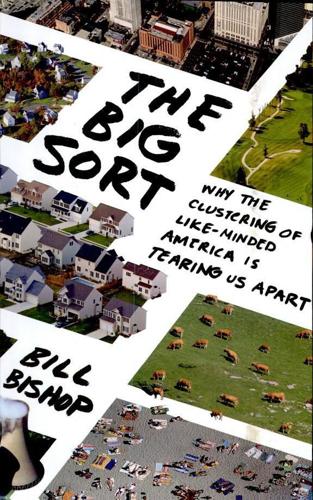
The Big Sort: Why the Clustering of Like-Minded America Is Tearing Us Apart
by
Bill Bishop
and
Robert G. Cushing
Published 6 May 2008
But those who grew up in abundance would be more concerned with self-expression.12 Those who lived in times of depression or joblessness esteemed economic growth. Those who knew plenty were more concerned about the environment and individual choice. Inglehart's theory of social change rested on psychiatrist Abraham Maslow's theory that people act according to a "hierarchy of needs."13 Maslow's list was specific—individuals seek to satisfy thirst before hunger, for example. In his model of human behavior, after basic physical demands are satisfied, new needs arise: survival is followed by security, then social connections, and eventually self-fulfillment.
…
Unless advertisers could learn to distinguish the composer of "White Rabbit" from the president's daughter, O'Toole wrote, marketing research was useless. O'Toole argued that statistics on income, age, and education had lost relevance because there had been a "Revolution of the Individual" in the United States. The advertising executive didn't acknowledge having read about Abraham Maslow's hierarchy of needs or Ronald Inglehart's silent revolution. But he was describing the same phenomenon—the explosion of self-expression in a post-materialist economy. People were no longer willing to be treated as part of a mass because they didn't think of themselves that way, O'Toole told his fellow marketing executives.
…
"Toward a More Responsible Two-Party System: A Report of the Committee on Political Parties," pt. 2, American Political Science Review 44, no. 3 (1950): S18. 12. Ronald Inglehart and Christian Welzel, Modernization, Cultural Change, and Democracy: The Human Development Sequence (New York: Cambridge University Press, 2005), pp. 2–4. 13. Abraham Maslow, "A Theory of Human Motivation," Psychological Review 50 (1943): 370–96. See also Ronald Inglehart, Culture Shift in Advanced Industrial Society (Princeton, NJ: Princeton University Press, 1990), pp. 152–53. 14. Ronald Inglehart, Modernization and Postmodernization: Cultural, Economic, and Political Change in 43 Societies (Princeton, NJ: Princeton University Press, 1997), p. 8.

100 Plus: How the Coming Age of Longevity Will Change Everything, From Careers and Relationships to Family And
by
Sonia Arrison
Published 22 Aug 2011
It is the rich who can cherish the wilderness because they no longer have to choose between their own survival and nature’s.”34 Such an argument builds on the idea that every individual has certain needs, such as nourishment and clothing, that must be met before she or he can begin to care about the health of the trees or rivers. Psychologist Abraham Maslow’s hierarchy of needs is often used as a way to think more clearly about how this works. Figure 3.3 shows the Maslow pyramid outlining human needs, starting with the most basic. As individuals move up the various levels in the pyramid, their motivation to be active in better managing issues like air pollution and waste tends to rise.
…
Chapter 6 demonstrated that humans who live longer, healthier lives will also be wealthier. This wealth could allow those who are motivated to “discover the meaning of life” to actually take time to more carefully investigate because they won’t be struggling to feed themselves or put a roof over their heads. This scenario is in line with Abraham Maslow’s theory that more “actualized” people (basic needs are met) are more likely to have “peak” or mystical experiences.42 Even Norris and Inglehart note that, while traditional religious practices may erode in wealthier countries, the drive to find the meaning and purpose of life does not.43 To the extent that religions can maintain their image as the “goto” place to find the meaning of life and truth, they will likely have a strong future.

Who's Your City?: How the Creative Economy Is Making Where to Live the Most Important Decision of Your Life
by
Richard Florida
Published 28 Jun 2009
The connection between place and identity is all around us. Now that we have a handle on how place affects happiness in general, what is it about our places that we like and dislike? What are the big ticket, and small ticket, items that make us happy with communities—or not? 10 BEYOND MASLOW’S CITY IN 1943 PSYCHOLOGIST ABRAHAM MASLOW SET FORTH THE concept of a hierarchy of needs.1 Maslow’s theory, often illustrated in the shape of a pyramid, posits that humans require more than just food, water, air, and sex in order to be fulfilled. These rudimentary physiological needs constitute the base layer of the pyramid. Moving up the hierarchy we find the need for security, the need for love and belonging, the need for self-esteem, and finally the need for self-actualization.
…
Compare with income (.039), age (-.06), and education (-.09). 7 The overall correlation between income and community satisfaction is relatively weak (.15). 8 Veolia Observatory of Urban Lifestyles, Life in the City (Paris), http://www.observatoire.veolia.com/en, 2008. 9 Mihaly Csikszentmihalyi, Flow: The Psychology of Optimal Experience, HarperCollins, 1990; and Csikszentmihalyi, Finding Flow: The Psychology of Engagement with Everyday Life, Basic Books, 1997. 10 See Teresa Amabile et al., “Affect and Creativity at Work,” Administrative Science Quarterly 50, March 2005, pp. 367-403. Chapter 10 1 Abraham Maslow, “A Theory of Human Motivation,” Psychological Review, 50, 1943, pp. 370-396; Maslow Motivation and Personality, HarperCollins, 1987 (1st ed., 1954). For more, see www.maslow.com. 2 See Robert Manchin, “The Emotional Capital and Desirability of European Cities,” Gallup Europe, presented to European Week of Regions and Cities, Brussels, October 2007.
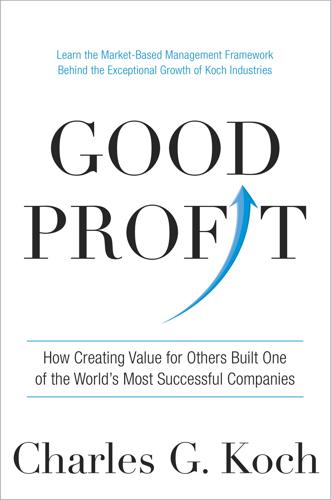
Good Profit: How Creating Value for Others Built One of the World's Most Successful Companies
by
Charles de Ganahl Koch
Published 14 Sep 2015
I discovered my own political orientation was much more nuanced than simply “conservative” or “liberal,” in the contemporary sense of those words. Plato, Aristotle, John Locke, Adam Smith, Will Durant, Karl Marx, Vladimir Lenin, John Maynard Keynes, and Karl Popper all made tremendous impressions on me—some good and some bad. Authors such as F. A. Harper, Friedrich Hayek, Abraham Maslow, Ludwig von Mises, Michael Polanyi, and Thomas Sowell were particularly helpful to my understanding of the principles that govern well-being in society. I vividly recall the first two life-changing books I came across: F. A. Harper’s Why Wages Rise and Ludwig von Mises’s Human Action. “Baldy” Harper, once a professor at Cornell University, showed that coercing businesses to pay employees more than the value of their production doesn’t lead to wealthier employees overall, as one might assume.
…
Communism has famously been summarized as a system that takes “from each according to his ability” and redistributes “to each according to his needs.” MBM says, in contrast, “From each according to his ability, to each according to his contribution.” MOTIVATING SELF-ACTUALIZED PEOPLE Psychologist Abraham Maslow taught, “All human beings prefer meaningful work to meaningless work.” “The problem for management,” though, is “how to set up social conditions in any organization so that the goals of the individuals match with the goals of the organization.” He continues: “This includes the need for meaningful work, for responsibility, for creativeness, for being fair and just, for doing what is worthwhile, and for preferring to do it well.”3 Maslow defines self-actualization as the highest level of satisfaction and happiness that an individual can achieve.
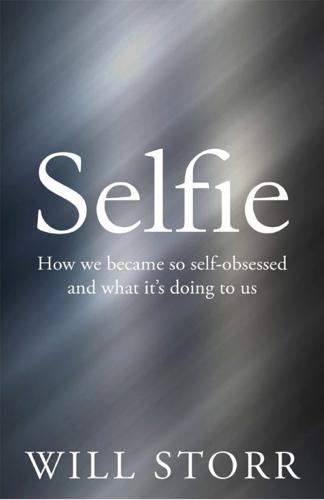
Selfie: How We Became So Self-Obsessed and What It's Doing to Us
by
Will Storr
Published 14 Jun 2017
To my pleasure and relief, I found myself free of the scratchy middle-aged voice in my head that’d usually be there, judging and cursing these joyous young people. I couldn’t help but smile. Maybe Esalen had worked. Maybe I’d actually changed. Then, as I pushed myself to my feet, without any warning at all, I heard myself mutter, ‘Fucking idiots.’ * In the months leading up to his death, in 1970, the humanistic psychologist Abraham Maslow began worrying about his legacy. He’d been preparing to write a critique of Esalen ‘and its whole chain’. One of the issues he’d become concerned with was self-esteem. Maslow was famous, most of all, for his hugely influential ‘Hierarchy of Needs’, which said that people are motivated to fulfil certain psychological appetites.
…
The Institute’s co-founder, Michael Murphy, had grown troubled, both by his observations of a cultish, guru-worshipping aspect that was developing in some quarters and also by new commercialized forms of personal transformation workshops, such as EST, which took place over two weekends and combined Esalen-style Human Potential thinking with a sales seminar format more familiar in an earlier period of America’s history. EST was created in 1971 by Werner Erhard, an Esalen graduate and student of both Carl Rogers and Abraham Maslow, who had also been a fan of a Dale Carnegie course he’d attended. Erhard, writes Truett, ‘Americanized the human potential movement in a way that Esalen had never done or tried to do.’ It was an instant success: fifty thousand people took the workshop in its first four years and it ended up boasting celebrity attendees including John Denver, Cher and Peter Gabriel.
…
Other studies, by researchers at China’s Shenzhen University: ‘Social hierarchy modulates neural responses of empathy for pain’, Chunliang Feng et al., Social Cognitive and Affective Neuroscience (March 2016), 11(3), pp. 485–95. psychologist Professor Jonathan Haidt calls us ‘10 per cent bee’: The Righteous Mind, Jonathan Haidt (Allen Lane, 2012), p. xv. In the months leading up to his death, in 1970, the humanistic psychologist Abraham Maslow: La Jolla Program Newsletter, Self-Esteem Task Force Edition, vol. XX, no. 8, April 1988, pp. 1–2. ‘After several years in California, Carl got so tired’: Letter from W. K. Coulson to Robert Ball, Exec Director CA Task Force etc., 22 March 1988, Inventory of the Task Force to Promote Self-esteem and Personal and Social Responsibility Records, Sacramento, California.

Flow: The Psychology of Optimal Experience
by
Mihaly Csikszentmihalyi
Published 1 Jul 2008
Modern psychology, however, has shown that much of what people do can be explained more parsimoniously by simpler, often unconscious, causes. As a result, the importance of goals in directing behavior has been greatly discredited. Some exceptions include Alfred Adler (1956), who believed that people develop goal hierarchies that inform their decisions throughout life; and the American psychologists Gordon Allport (1955) and Abraham Maslow (1968), who believed that after more basic needs are satisfied, goals may begin to be effective in directing actions. Goals have also regained some credibility in cognitive psychology, where researchers such as Miller, Galanter, & Pribram (1960), Mandler (1975), Neisser (1976), and Emde (1980) have used the concept to explain decision-making sequences and the regulation of behavior.
…
In this context we are following these illustrious exemplars not because of a sense of tradition, but because it makes good sense psychologically. Hierarchy of needs. The best-known formulation of the relationship between “lower order” needs such as survival and safety and “higher” goals like self-actualization is the one by Abraham Maslow (1968, 1971). Escalating expectations. According to many authors, chronic dissatisfaction with the status quo is a feature of modernity. The quintessential modern man, Goethe’s Faust, was given power by the Devil on condition that he never be satisfied with what he has. A good recent treatment of this theme can be found in Berman (1982).
…
Most of the interviews mentioned here were collected in the course of studies reported in Csikszentmihalyi (1975) and Csikszentmihalyi & Csikszentmihalyi (1988). Over 600 additional interviews were collected by Professor Fausto Massimini and his collaborators in Europe, Asia, and the southwestern United States. Ecstasy. Extensive case studies of ecstatic religious experiences were collected by Marghanita Laski (1962). Abraham Maslow (1971), who coined the term “peak experience” to describe such events, played a very important role in helping give legitimacy to the consideration of such phenomena by psychologists. It is fair to say, however, that Laski and Maslow looked at ecstasy as a fortuitous epiphany that happened more or less by itself, rather than a natural process which could be controlled and cultivated.

Life Inc.: How the World Became a Corporation and How to Take It Back
by
Douglas Rushkoff
Published 1 Jun 2009
Fritz Perls taught people how to kick and scream while George Leonard conducted “encounter sessions” between black and white radicals, and another with nuns from the Immaculate Heart Convent in Los Angeles—a majority of whom discovered their sexuality and quit the order immediately afterward. Underlying all of this therapy and liberation was a single premise: Esalen hero Abraham Maslow’s “hierarchy of needs.” The Brooklyn-born psychologist’s map for the individual’s journey to more liberated states of being held that people needed to fulfill their lower needs for food, shelter, and sex before they could work on higher ones such as self-esteem and confidence. At the very top of Maslow’s pyramidal chart sits the ultimate human state: “self-actualization.”
…
They simply wanted products that expressed their individuality, their self-direction, their self-actualization. Luckily for American industry, mass production had developed to the point where Detroit could turn out a brand of car for every member of the family, in any number of psychedelics-influenced colors. The Stanford Research Institute hired Abraham Maslow to turn his hierarchy of needs into psychographic categories of American consumers, applicable to marketing. It’s not that the self-help movement sold out. It was sold out to begin with. First imported from the East by mind-cure fans like L. Frank Baum to help rationalize the marketing of illusion as an ethical pursuit, the “religion of no-religion” was nothing more than a change in perspective.
…
Maslow, Toward a Psychology of Being, 3rd ed. (New York: Wiley, 1998). 139 For Maslow and his followers Abraham H. Maslow, “A Theory of Human Motivation,” Psychological Review, 50 (1943), 370-439. 140 The Stanford Research Institute hired Edward Hoffman, The Right to Be Human: A Biography of Abraham Maslow (New York: McGraw-Hill, 1999), and Abraham H. Maslow and Deborah C. Stephens, The Maslow Business Reader (New York: Wiley, 2000). 142 Dollar may be the epitome Carol Costello, “Don’t Miss Televangelist Refuses to Turn Over More Financial Documents,” CNN.com, December 7, 2007, http://www.cnn.com/2007/POLITICS/12/07/ prosperity.preachers/index.html (accessed February 16, 2008), and Michael Luo, “Preaching a Gospel of Wealth in a Glittery Market, New York,” The New York Times, January 15, 2006, http://www.nytimes.com/2006/01/15/ nyregion/15prosperity.html (accessed February 16, 2008). 142 Megastar and multimillionaire televangelist Mara Einstein, Brands of Faith: Marketing Religion in a Commercial Age (New York: Routledge, 2008), 123. 142 “The desire for increase” Jack Canfield, “Keynote Speech,” The Learning Annex Wealth Expo (Jacob Javits Center, New York, N.Y., November 18, 2007). 142 “It’s time for me” Tom Peters, “The Brand Called You,” Fast Company, Issue 10, August 1997. 143 Hey, that kid sounds cool Joseph Berger, “Blurring the Line Between a College Application and a Slick Sales Pitch,” The New York Times, November 28, 2007, U.S. section.
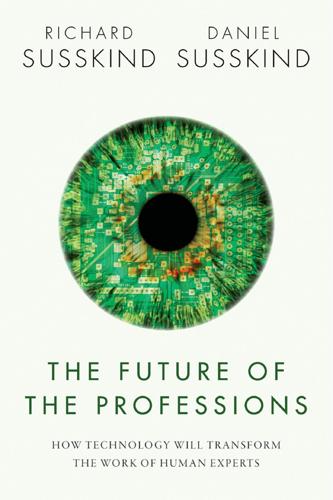
The Future of the Professions: How Technology Will Transform the Work of Human Experts
by
Richard Susskind
and
Daniel Susskind
Published 24 Aug 2015
Many of the problems that they tackle are in fact defined by the solutions that the professions themselves have developed. So when we say, for example, that a client has a tax or accounting problem or that a patient has a dental or surgical concern, these very characterizations of the concerns are framed in terms of the categorizations and capabilities of professional providers. As Abraham Maslow, a leading psychologist, has noted: ‘I suppose it is tempting, if the only tool you have is a hammer, to treat every problem as if it were a nail.’88 However, real-life problems do not always arise neatly labelled as the province of one professional or another. Everyday problems are messier than this—the life events that incline people to seek professional help might, ideally, call for the input of many experts, and not just one.
…
We find it hard to reconcile this view with the daily experience of professionals in action. They often work with informal, approximations of fields of knowledge. The purist may find these untenable (and they may be theoretically flawed), but they do seem to work in practice. For a stimulating related discussion, see David Bloor, Knowledge and Social Imagery (1991). 88 Abraham Maslow, The Psychology of Science (1966), 15. 89 Richard Feynman, The Feynman Lectures on Physics, Vol. 1 (1964), ch. 3.7 <http://www. feynmanlectures.caltech.edu/I_toc.html> (accessed 27 March 2015). 90 Discussed in Alex Frame, Salmond: Southern Jurist (1995), 30. 2 From the Vanguard In this chapter we change pace.
…
Marshall, Thomas, ‘The Recent History of Professionalism in Relation to Social Structure and Social Policy’, Canadian Journal of Economics and Political Science, 5: 3 (1939), 325–40. Marx, Karl, Capital: Critique of Political Economy, vol. 1, Penguin Classics (London: Penguin, 1990). Maslow, Abraham, The Psychology of Science (Chapel Hill, NC: Maurice Bassett, 1966). Maslow, Abraham, Maslow on Management (New York: John Wiley & Sons, 1988). Mayer-Schönberger, Viktor, and Kenneth Cukier, Big Data (London: John Murray, 2013). McAfee, Andrew, and Eric Brynjolfsson, ‘Big Data: The Management Revolution’, Harvard Business Review (Oct. 2012), 1–9. McChesney, Robert, and John Nichols, The Death and Life of American Journalism (Philadelphia: Nation Books, 2010).

AI 2041: Ten Visions for Our Future
by
Kai-Fu Lee
and
Qiufan Chen
Published 13 Sep 2021
The ambiguous outcome in this story suggests that AI’s efforts to improve our happiness will still be a work in progress by 2041, with progress and early prototypes, but making no prediction about when, how, or even whether it will be solved. Why is this problem so tough? I can think of four reasons. First is the problem of definition. What is happiness exactly? There are countless theories of happiness, from Abraham Maslow’s hierarchy of needs to Martin Seligman’s positive psychology. Defining happiness will be even more complex by 2041, when society will have progressed, through AI technology, to a point where living standards for most if not all people are comfortable. Once people’s basic needs are satisfied, what constitutes happiness?
…
How would such an interest-aligned entity be found or created? Now you can see why happiness-inducing AI is extremely hard! Let’s dig into the four problems and possible solutions. WHAT IS HAPPINESS IN THE ERA OF AI? Setting aside AI for the moment, let’s ask the most basic question: What does happiness mean anyway? In 1943, Abraham Maslow published his seminal paper “A Theory of Human Motivation,” which described what is now known as “Maslow’s hierarchy of needs.” This theory is usually illustrated as a pyramid, shown below. This pyramid describes human needs from the most basic to the most advanced level. Each lower-level need must be fulfilled in order to move toward a higher-level need.
…
In a world transitioning into plenitude, we cannot simply assume everyone falls into the “useless class,” nor that everyone will strive for self-actualization. As economic models move beyond scarcity and money, they should be reinvented to try to elevate human needs, encompassing love and belonging, esteem, and self-actualization. Abraham Maslow has said: “One’s only failure is failing to live up to one’s own possibilities.” It is hoped that our future economic model will be both inclusive and aspirational, helping to elevate as many people as possible up the Maslow hierarchy. CHALLENGES FOR PLENITUDE I have painted a grand road map to plenitude.
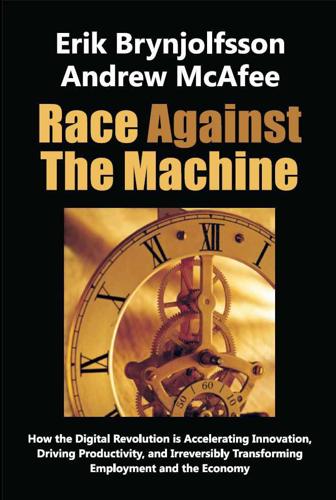
Race Against the Machine: How the Digital Revolution Is Accelerating Innovation, Driving Productivity, and Irreversibly Transforming Employment and the Economy
by
Erik Brynjolfsson
Published 23 Jan 2012
For instance, Wikipedia thrives on a model that is largely separate from the financial economy, but it nonetheless provides rewards and value. Judging by the revealed preferences of participants, Wikipedia provides sufficient non-monetary rewards to attract millions of contributors with diverse talents and expertise who create tremendous value. When thinking about the evolving economy, we need to remember that Abraham Maslow’s hierarchy of needsaham Maslow’s hierarchy of needs extends beyond material things. 8 52! is shorthand for 52 x 51 x 50 x … x 2 x 1, which multiplies to over 8.06 x 1067. That is about the number of atoms in our galaxy. Chapter 5. Conclusion: The Digital Frontier Technology is a gift of God.
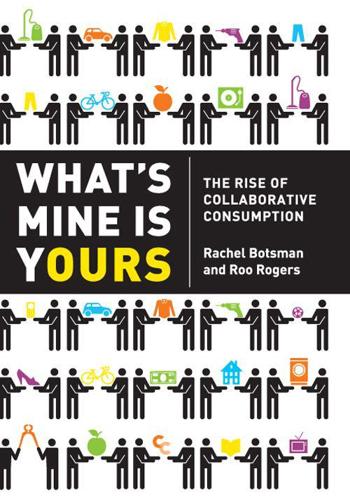
What's Mine Is Yours: How Collaborative Consumption Is Changing the Way We Live
by
Rachel Botsman
and
Roo Rogers
Published 2 Jan 2010
Designers won’t leave their mark by engraving autographs on products in a Karim Rashid kind of way. Rather, they will find themselves participating in a living, breathing process long after their initial creation, whatever that might be, is complete. Chapter Nine Community Is the Brand In 1943, Abraham Maslow, an American psychologist, published A Theory of Human Motivation. In this groundbreaking paper he mapped out a hierarchy of needs, a pyramid with the basic physiological needs—such as food, warmth, and water—and safety needs at the bottom, and esteem, belonging, and self-actualization at the top.1 More than sixty years later, it remains the strongest model for understanding what is meaningful to consumers and explaining what they do and why.
…
Terms for this section come from Manzini’s work on Collaborative Services; quotes come from interview with him on December 7, 2009. 10. Oksana Mont, “Innovative Approaches to Optimising Design and Use of Durable Consumer Goods,” International Journal of Product Development (2008): 228. 11. Thackara, In the Bubble: Designing for a Complex World, 100. 1. Abraham Maslow, “A Theory of Human Motivation,” originally published in Psychological Review 50 (1943): 370–396. 2. Louise Story, “The New Advertising Outlet: Your Life,” New York Times (October 14, 2007), www.nytimes.com/2007/10/14/business/media/14ad.html?_r=1. 3. Mark McClusky, “The Nike Experiment: How the Shoe Giant Unleashed the Power of Personal Metrics,” Wired (June 22, 2009), www.wired.com/medtech/health/magazine/17-07/lbnp_nike. 4.

Being Mortal: Medicine and What Matters in the End
by
Atul Gawande
Published 6 Oct 2014
And the cost for those on government support was 20 percent lower than it would have been in a nursing home. The program proved an unmitigated success. * * * AT THE CENTER of Wilson’s work was an attempt to solve a deceptively simple puzzle: what makes life worth living when we are old and frail and unable to care for ourselves? In 1943, the psychologist Abraham Maslow published his hugely influential paper “A Theory of Human Motivation,” which famously described people as having a hierarchy of needs. It is often depicted as a pyramid. At the bottom are our basic needs—the essentials of physiological survival (such as food, water, and air) and of safety (such as law, order, and stability).
…
Ladd, and M. Saslow, “Community Based Care in an Institution: New Approaches and Definitions of Long Term Care” paper presented at the 41st Annual Scientific Meeting of the Gerontological Society of America, San Francisco, Nov. 1988. Cited in Wilson, “Historical Evolution.” In 1943, the psychologist Abraham Maslow: A. H. Maslow, “A Theory of Human Motivation,” Psychological Review 50 (1943): 370–96. Studies find that as people grow older: D. Field and M. Minkler, “Continuity and Change in Social Support between Young-Old, Old-Old, and Very-Old adults,” Journal of Gerontology 43 (1988): 100–6; K. Fingerman and M.

Designing for Emotion
by
Aarron Walter
Published 4 Oct 2011
Keep in mind that ignoring human needs is not a history we are doomed to repeat. Through our designs, we can see and connect with other human beings. So where do we start? Well, like any good user experience designer, we begin by understanding the needs of the people we’re designing for. Hello, Maslow In the 1950s and 60s, the American psychologist Abraham Maslow discovered something that we all knew but had yet to put into words: no matter our age, gender, race, or station in life, we all have basic needs that must be met. Maslow illustrated his ideas in a pyramid he called the Hierarchy of Needs (fig 1.2). FIG 1.2: Maslow’s Hierarchy of Needs. Maslow stressed that the physiological needs at the base of this hierarchy must be met first.
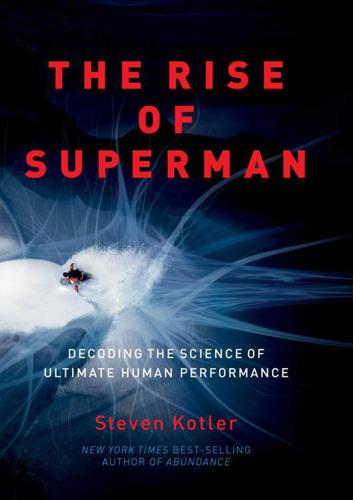
The Rise of Superman: Decoding the Science of Ultimate Human Performance
by
Steven Kotler
Published 4 Mar 2014
After Freud’s unconscious had been dethroned by Skinner’s behaviorism, psychologists began having a hard time explaining why people did the things they did. The behaviorists said it all came down to need and reward. We do X to get Y. This is known as “extrinsic motivation,” but the conclusion never sat right with Abraham Maslow. One of the greatest psychological thinkers of the past century, Maslow began his career in the 1940s on staff at Brooklyn College, where he was mentored by anthropologist Ruth Benedict and Gestalt psychologist Max Wertheimer. Back then, most of psychology was focused on fixing pathological problems rather than celebrating psychological possibilities, but Maslow thought Benedict and Wertheimer such “wonderful human beings” that he began studying their behavior, trying to figure out what it was they were doing right.
…
“I’ve been shooting action sports for twenty years”: Mike Blabac, AI, June 2012. 17 Mihaly Csikszentmihalyi: Csikszentmihalyi’s history can be found in a number of places. See his TED talk at http://www.ted.com/talks/mihaly_csikszentmihalyi_on_flow.html, or “Interview: Mihaly Csikszentmihalyi,” Omni, 17(4), p. 73. Also see “The man who found the flow,” Shambhala Sun, September 1998. 19 “During a peak experience”: Abraham Maslow, Motivation and Personality (Harper & Row, 1970), p. 164. The birth of his happiness study…: Mihaly Csikszentmihalyi, Flow: The Psychology of Optimal Experience (HarperPerennial, 1991). 20 “It was clear from talking to them…”: Mihaly Csikszentmihalyi, Creativity: Flow and the Psychology of Discovery and Invention (HarperPerennial, 1996), p. 110.
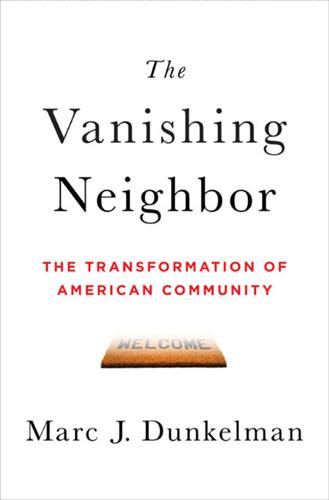
The Vanishing Neighbor: The Transformation of American Community
by
Marc J. Dunkelman
Published 3 Aug 2014
That’s not a tangential issue, and few Americans are saving as they should.30 But as things go, that’s a high-class concern—and certainly a good shot better than what kept adults up in the decade that followed the Great Depression and Second World War. Around 1940, a young professor at Brooklyn College worked up the gumption to act on a growing frustration. The field of psychology, Abraham Maslow believed, had become too focused on addressing mental disorders. At a moment when most American adults had suffered the ravages of the 1930s and 1940s, he thought more mind ought to be paid to other end of the psychological spectrum. How, he wanted to know, did healthy Americans reach their fullest potential?
…
Today we are left to consider where things stand yet another thirty years on. As we try to piece together how motive and opportunity have contributed to the transformation of American community, the final question we need to answer involves what exactly we each want. In the last chapter, we saw Americans take a big leap up Abraham Maslow’s hierarchy of needs: because we’re less focused on fulfilling our more basic demands, we’ve attained the freedom to focus on higher-level concerns. But that raises the issue of what the giant leap has meant for the battle between conformity and authenticity. Have we become more disposed to seek the approval of others, as seemed be the case in the 1950s?

Future Tense: Jews, Judaism, and Israel in the Twenty-First Century
by
Jonathan Sacks
Published 19 Apr 2010
‘In short,’ he concluded, ‘we find in them only an ignorant and barbarous people who have long united the most sordid avarice with the most detestable superstition.’1 Within two centuries after those words were written, Jews had given rise to a stream of geniuses who transformed the very foundations of Western thought: in physics Einstein, in sociology Durkheim, in anthropology Lévi-Strauss, in politics Karl Marx, in philosophy Bergson and Wittgenstein, in the philosophy of science Karl Popper and T. S. Kuhn, in music Mahler and Schoenberg, in literature Proust and Kafka, Bellow and Canetti, in law Brandeis and Cardozo, in art Bernard Berenson and Ernst Gombrich. They dominated the field of psychiatry, with figures such as Freud, Adler, Melanie Klein, Erich Fromm, Abraham Maslow, Erik Erikson and Viktor Frankl. Jews were among the iconic thinkers of postmodernism, among them Walter Benjamin, Theodor Adorno and Jacques Derrida. They spanned the spectrum from Irving Berlin to Isaiah Berlin. Numbering one-fifth of one per cent of the population of the world, Jews have produced 39 per cent of Nobel Prize winners in economics, 26 per cent in physics, 28 per cent in medicine, 12 per cent in literature, nine winners of the Nobel Peace Prize, 47 per cent of world chess champions, 42 per cent of authors of the fifty most cited twentieth-century books, and 30 per cent of the twentieth century’s hundred leading thinkers.
…
I think in this context of Michael Walzer, Michael Sandel and the late Daniel Elazar, who advanced Jewish understandings of political theory; of the work of Leon Kass in bioethics, and Robert Winston’s in the treatment of infertility. I think of Howard Gardner’s insights into multiple intelligence, and Abraham Maslow’s into the structures of human motivation. Isaiah Berlin taught us much about the nature of freedom: at his funeral I spoke of how his life’s work was, intentionally or otherwise, an extended commentary on the book of Exodus. When I asked Jeffrey Sachs, perhaps the world’s leading developmental economist, why he did what he did, he answered without hesitation: tikkun olam (repairing a fractured world).
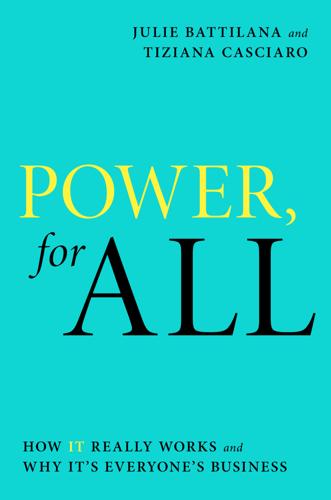
Power, for All: How It Really Works and Why It's Everyone's Business
by
Julie Battilana
and
Tiziana Casciaro
Published 30 Aug 2021
See Andrew Reece et al., “Mattering Is an Indicator of Organizational Health and Employee Success,” The Journal of Positive Psychology 16, no. 2 (2019): 1–21. 15 This view of self-esteem as a person’s superordinate goal finds its roots in Abraham Maslow’s famed hierarchy of needs, though Maslow’s original hierarchy conceives of esteem as subordinate to self-actualization (Abraham Maslow, “A Theory of Human Motivation,” Psychological Review 50, no. 4 [1943]: 370–96). Later psychologists would relate self-actualization needs to a person’s intrinsic esteem, as opposed to the extrinsic esteem someone derives from others.
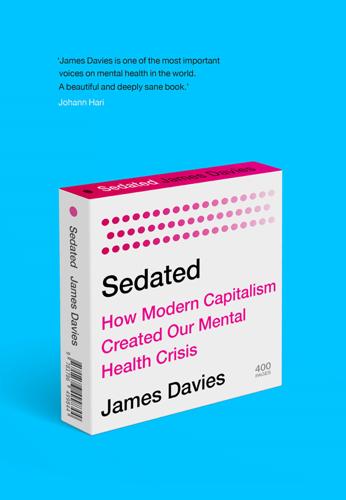
SEDATED: How Modern Capitalism Created Our Mental Health Crisis
by
James. Davies
Published 15 Nov 2021
, The Lancet 372(9633):95–97. 31 Davis, C., and Abraham, J. (2013), Unhealthy Pharmaceutical Regulation: Innovation, Politics and Promissory Science, Basingstoke: Palgrave Macmillan. Chapter Eight: Materialism No More 1 William Davies calls this ‘productive dissatisfaction’ – an idea to which I am indebted. See: Davies, W. (2016), The Happiness Industry, London: Verso Books. 2 Such as Fritz Pearls, Aaron Beck, Rollo May, Abraham Maslow and Carl Rogers. 3 I discuss this in more detail in my earlier academic book, from which I am paraphrasing: Davies, J. (2012), The Importance of Suffering: the value and meaning of emotional discontent, London: Routledge. 4 Fromm, E. (2013), To Have or To Be, London: Bloomsbury Academic. 5 Fromm, E. (1993), The Art of Being, London: Routledge. 6 Ibid., p.76. 7 Piff, Paul K., et al. (2012), ‘Higher social class predicts increased unethical behaviour’, PNAS 109(11): 4086 4091, https://doi.org/10.1073/pnas.1118373109. 8 Kasser, T. (2003), The High Price of Materialism, Boston: MIT Press. 9 Ibid., p.18. 10 Ibid., p.56. 11 Ibid., p.57. 12 Ibid., p.50. 13 Ibid., p.57. 14 Ibid., p.31. 15 Ibid., p.31. 16 Ibid., p.72. 17 Ibid., p.1. 18 Kasser, T. (2018), ‘Materialism and living well’, in E.
…
Action and introspection, financial activity and literature, history and logic, statistics and psychology, business and book-collecting, the political arena and the theatre … there were few spheres of human activity or reflection from which he was cut off. And from all of them he derived insights that at the right moment gave rise to observations of startling originality.’ See: Mini, Piero V. (1991), Keynes, Bloomsbury and the General Theory, London: Palgrave Macmillan. 4 It was led by psychologists such as Carl Rogers, Carl Jung, Abraham Maslow, Otto Rank, Erich Fromm and Clark Moustakas (to mention a few). 5 Petrarch in his secretum meum argued that we possess vast intellectual and creative potential, which we must use to the full. God had bestowed these attributes to be used in his glory, so to the extent we applied them, we would approximate to his divinity and thus partake in his glory.

You Are Now Less Dumb: How to Conquer Mob Mentality, How to Buy Happiness, and All the Other Ways to Outsmart Yourself
by
David McRaney
Published 29 Jul 2013
Throughout the twentieth century, as psychology came into its own as a scientific discipline, many psychologists emerged from the halls of academia and ascended to the rank of celebrity after delivering open-palmed scientific slaps to the face of mankind. Sigismund Freud got people talking about the unconscious and the malleable, hidden world of desires and fears. Carl Jung put the ideas of archetypes, introversion, and extroversion into our vocabulary. Abraham Maslow gave us a hierarchy of needs, including hugs and sex. Timothy Leary fed Harvard students psychedelic mushrooms and advocated that an entire generation should use LSD to “turn on, tune in, and drop out.” There are many more, but in the 1970s, B. F. Skinner was the rock star of psychology. Skinner and his boxes made the cover of Time magazine in 1971 underneath the ominous proclamation WE CAN’T AFFORD FREEDOM.
…
Shelley Taylor and Jonathon Brown made positive illusions famous among psychologists with their research on cancer patients in the 1980s. Before them, the widely held assumption in mental health was that the more accurate your perception and cognitions, the happier you became. Such was the mantra of the humanist psychologists—Abraham Maslow and his hierarchy of needs, Carl Rogers and his person-centered therapy. In the 1940s and ’50s, Maslow and Rogers championed a view that preferred to see human beings as something more than just molecules of meat. They felt it was wrong to assume you could approach the mind as a biological machine that could be repaired and improved at the level of its cogs and gears.

The End of Nice: How to Be Human in a World Run by Robots (Kindle Single)
by
Richard Newton
Published 11 Apr 2015
It’s what comes from wanting to make a difference, to make a connection, to innovate and add value by bringing the best of yourself to bear upon the world. It’s not restricted to schools of art, posh music or thick-rimmed black glasses. “A first-rate soup is more creative than a second-rate painting,” Abraham Maslow once said, as he made the point that it is not any specific discipline that determines creativity but how you apply yourself to the task. The quality upon which business success will be built in the internet age, according to Google former Chief Executive, Eric Schmidt, is “creative flair”. The people that the world will rely on and around which organisations should be built, he said, are impatient, outspoken risk-takers who are easily bored and change jobs frequently.
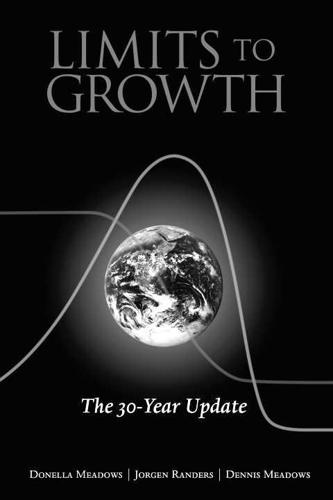
The Limits to Growth: The 30-Year Update
by
Donella H. Meadows
,
Jørgen Randers
and
Dennis L. Meadows
Published 15 Apr 2004
Individualism and shortsightedness are the greatest problems of the current social system, we think, and the deepest cause of unsustainability. Love and compassion institutionalized in collective solutions is the better alternative. A culture that does not believe in, discuss, and develop these better human qualities suffers from a tragic limitation in its options. "How good a society does human nature permit?" asked psychologist Abraham Maslow. "How good a human nature does society permit?"6 The sustainability revolution will have to be, above all, a collective transformation that permits the best of human nature, rather than the worst, to be expressed and nurtured. Many people have recognized that necessity and that opportunity. For example, John Maynard Keynes wrote in 1932: The problem of want and poverty and the economic struggle between classes and nations is nothing but a frightful muddle, a transitory and unnecessary muddle.
…
Examples of networks known to the authors and in their field of interest are the Balaton Group (www.unh.edu/ipssr/Balaton.html), Northeast Organic Farming Association (NOFA), Center for a New American Dream (CNAD; wwwnewdream.org), Greenlist (www.peacestore.us/Public/Greenlist), Greenclips (wwwgreenclips.com), Northern Forest Alliance (wwwnorthernforestalliance.org), Land Trust Alliance (wwwlta.org), International Simulation and Gaming Association (ISAGA; wwwisaga.info), and Leadership for Environment and Development (LEAD). 4. Such an intermediate step is illustrated by ICLEI, an international association of (currently 450) local governments implementing sustainable development. See www.iclei.org. 5. R. Buckminster Fuller, Critical Path (New York: St. Martin's Press, 1981). 6. Abraham Maslow, The Farthest Reaches of Human Nature (New York: Viking Press, 1971). 7. J. M. Keynes, foreword to Essays in Persuasion (New York: Harcourt Brace, 1932). 8. Aurelio Peccei, One Hundred Pages for the Future (New York: Pergamon Press, 1981), 184-185. Appendix 1. Changes from World3 to World3-03 1.
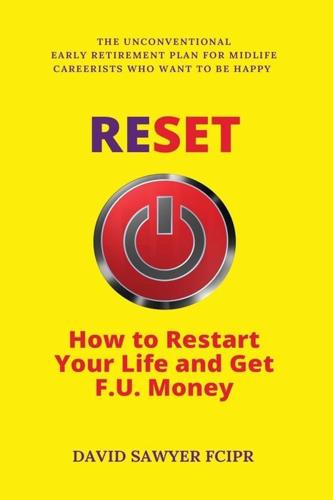
Reset: How to Restart Your Life and Get F.U. Money: The Unconventional Early Retirement Plan for Midlife Careerists Who Want to Be Happy
by
David Sawyer
Published 17 Aug 2018
The world we live in In 1957, a decade before Bren was born in Leeds General Infirmary, the then British prime minister, Harold MacMillan, told us: “Most of our people have never had it so good[23].” Life has got a whole lot better since. There’s less famine and poverty, fewer deaths from war and greater democracy[24]. Psychologist Abraham Maslow was on to this in 1943 when he published his hierarchy of needs theory[25], outlining what motivates human behaviour. For midlife professionals living in the 21st century, the basic physiological, safety and social belonging needs are all met. Which, according to Maslow and his famous pyramid, just leaves esteem, self-actualisation (and, at its apex, self-transcendence) to work on.
…
[22] top 0.17% of income earners in the world: “Global Rich List | UK.” toreset.me/22. [23] “[We] never had it so good”: “BBC ON THIS DAY | 20 | 1957: Britons ‘have never had it... – BBC News.” toreset.me/23. [24] greater democracy and life expectancy: “9 ways the world got a lot better in 2017 – Vox.” 7 Jan. 2018, toreset.me/24. [25] hierarchy of needs theory: “Abraham Maslow’s hierarchy of needs – Wikipedia.” toreset.me/25. [26] 0.004% of Earth’s history: “History of life on Earth – BBC.” toreset.me/26. [27] 4000 and 2000BC: “The First Cities and States (4000 – 2000BC), A History of the... – BBC.” 19 Mar. 2010, toreset.me/27. [28] “The very notion…only began with the Industrial Revolution: “Your Money or Your Life – Amazon UK.” toreset.me/28, p. 198
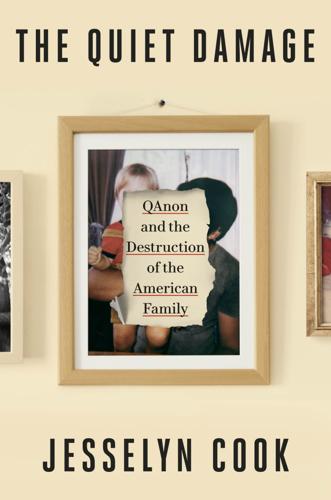
The Quiet Damage: QAnon and the Destruction of the American Family
by
Jesselyn Cook
Published 22 Jul 2024
She surrounded herself with like-minded people, each one a pillar in a rock-solid community that was sacred to her. For Alice, to belong was to feel whole. It was less of a want than a need; in fact, it was humans’ most fundamental necessity, outranked only by what was required for subsistence, according to renowned psychologist Abraham Maslow. If it was unfulfilled, in times of feeling isolated or outcast by their social groups, people could quickly grow desperate to find belonging elsewhere—a vulnerability exploited by cults and extremist movements. That was precisely what happened to Alice when, in a bid to warn her treasured community about evils that didn’t exist, she destroyed it.
…
GO TO NOTE REFERENCE IN TEXT more prone to seeing illusory patterns: M. Shermer, “Michael Shermer: The Pattern Behind Self-Deception,” TED Talk, February 15, 2010, https://www.ted.com/talks/michael_shermer_the_pattern_behind_self_deception/transcript. GO TO NOTE REFERENCE IN TEXT CHAPTER 8 renowned psychologist Abraham Maslow: Wichita State University, Office of Instructional Resources, “Hierarchy of Needs,” 2023, https://www.wichita.edu/services/mrc/OIR/Pedagogy/Theories/maslow.php. GO TO NOTE REFERENCE IN TEXT a vulnerability exploited by cults: M. Rousselet et al., “Cult Membership: What Factors Contribute to Joining or Leaving?
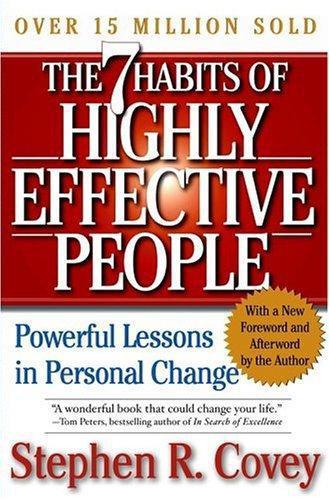
The 7 Habits of Highly Effective People: Powerful Lessons in Personal Change
by
Stephen R. Covey
Published 9 Nov 2004
On a final personal note, I want to repeat a question I constantly pose in my teaching: How many on their deathbeds wished they'd spent more time at the office-or watching TV? The answer is, No one. They think about their loved ones, their families, and those they have served. Even the great psychologist Abraham Maslow at the end of his life, put the happiness and fulfillment and contributions of his posterity ahead of his self-actualization (the top need of his famous "need hierarchy"). He called it self-transcendence. This is so true with me. By far the greatest and most satisfying impact of the principles embodied in The 7 Habits comes out of the lives of my children and grandchildren.
…
Of course, the ideal would be to cultivate and develop the ability to have good crossover between both sides of the brain so that a person could first sense what the situation called for and then use the appropriate tool to deal with it. But people tend to stay in me "comfort zone" of their dominant hemisphere and process every situation according to either a right or left brain preference. In the words of Abraham Maslow, "He that is good with a hammer tends to think everything is a nail." This is another factor that affects the "young lady/old lady" perception difference. Right brain and left brain people tend to look at things in different ways. We live in a primarily left brain-dominant world, where words and measurement and logic are enthroned, and the more creative, intuitive, sensing, artistic aspect of our nature is often subordinated.
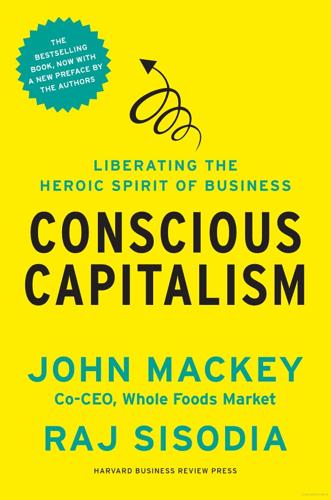
Conscious Capitalism, With a New Preface by the Authors: Liberating the Heroic Spirit of Business
by
John Mackey
,
Rajendra Sisodia
and
Bill George
Published 7 Jan 2014
Here are a few of the most important ones: Jean Piaget’s work demonstrated how our cognitive intelligence develops through distinct, universal, and cross-cultural stages as children.6 The highest level of cognitive or analytical intelligence described in his work was what he called formal operational, or the ability to think logically. Abraham Maslow’s research on the hierarchy of needs shows that we tend to evolve upward to higher need levels, from physical needs at the bottom of the hierarchy to self-actualization and beyond.7 Conscious businesses help to meet the needs of their stakeholders at all the levels, including self-actualization.
…
We owe an intellectual debt to numerous entrepreneurs, business leaders, and business thinkers, of whom we would like to particularly thank Peter Drucker, Peter Senge, Robert C. Solomon, Gary Hamel, C.K. Prahalad, Howard Schultz, Herb Kelleher, Colleen Barrett, Larry Page, Sergey Brin, Ratan Tata, Jeff Bezos, Steve Jobs, Bill Gates, Chip Conley, Ron Shaich, Sally Jewell, Terri Kelly, Tim Brown, Abraham Maslow, Ken Wilber, Don Beck, Clare Graves, Steve McIntosh, Jenny Wade, Linda Mason, George Zimmer, Casey Sheahan, Richard Barrett, and Nikos Mourkogiannis. We are also grateful to Bud Sorenson, Debashish Chatterjee, Deepak Chopra, Michael Gelb, Fred Kofman, Rick Frazier, Scott Minerd, Peter Derby, Jeff Cherry, Judi Neal, Ron Pompei, Sam Yau, Sir Ken Robinson, David and Tom Gardner, Mark Gafni, Howard Behar, Richard Leider, Srinivasan Pillay, Alan Webber, and Youngsul Kwon for their support and help.
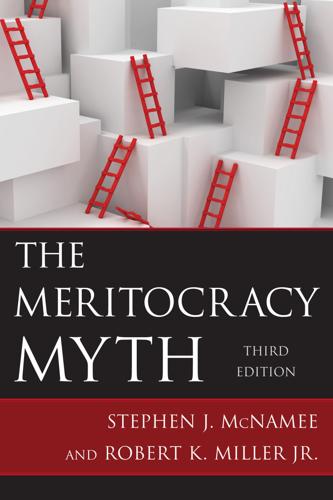
The Meritocracy Myth
by
Stephen J. McNamee
Published 17 Jul 2013
Similarly, the poor may have modest ambitions not because they are unmotivated but because they make a realistic assessment of limited life chances. In this formulation, exhibited behaviors and perceptions associated with a “culture of poverty” reflect the effects of poverty, not the causes. The idea of a situational view of poverty is consistent with the psychologist Abraham Maslow’s well-known “hierarchy-of-needs” theory. According to Maslow (1970), humans have a hierarchical order of needs that begins at the fundamental levels of food, clothing, and shelter and advances to “higher-order” needs for independence and “self-actualization.” Maslow points out that one cannot attend to higher-order needs if the lower-order needs are not satisfied.
…
This would reduce the expenses of lower-income groups in particular who would otherwise have to expend limited resources to gain market access to such services and would detract time and resources that could be directed toward investment in their own human-capital potential. This principle is illustrated by Abraham Maslow’s well-known “hierarchy-of-needs” concept. According to Maslow, individuals have a hierarchy of needs that begins with basic subsistence such as food, clothing, and shelter. Maslow further notes that individuals cannot attend to higher-order needs, much less “self-actualization,” the highest-order need, until the more basic needs are met.
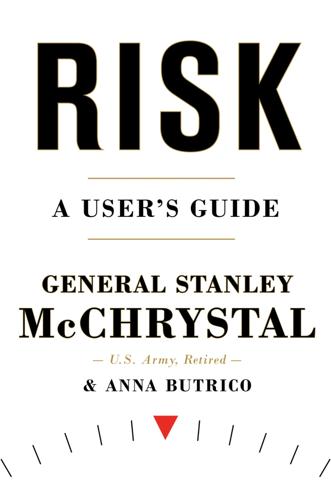
Risk: A User's Guide
by
Stanley McChrystal
and
Anna Butrico
Published 4 Oct 2021
The Four Tests We likely spend more time, money, and energy on communicating than everything else we do—combined. We read, talk, text, chat, and Zoom. Occasionally we actually stop to think about what we’re saying and hearing, but not always. We prioritize our ability to communicate above most other things. Were Abraham Maslow to update his famous hierarchy of needs, battery power, cell signal, and bandwidth would likely compete with air and water—at least in our minds. It feels that important—and it might be. Absent the ability to communicate, individuals would function alone and accomplish very little. So, it is fitting that the first Risk Control Factor we examine is communication.
…
moving to withdraw guns: “Battle of Balaklava,” National Army Museum, accessed September 25, 2020, https://nam.ac.uk/explore/battle-balaklava; Tony Bunting, “Battle of Balaklava,” Encyclopedia Britannica Online, last updated October 18, 2020, https://britannica.com/event/Battle-of-Balaklava. order from Lord Raglan: Bunting, “Battle of Balaklava.” lost more than 110 men and 375 horses: Bunting, “Battle of Balaklava.” his famous hierarchy of needs: Abraham Maslow offers a five-tier model of human needs. These begin with physiological needs (like food, water, etc.) progress to safety needs, ones for belonging and love, esteem, and finally, self-actualization. When nineteen hijackers passed unhindered: National Commission on Terrorist Attacks upon the United States, The 9/11 Commission Report: Executive Summary.
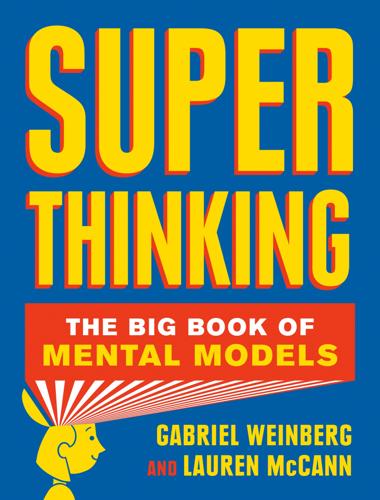
Super Thinking: The Big Book of Mental Models
by
Gabriel Weinberg
and
Lauren McCann
Published 17 Jun 2019
Other mental models in this chapter will help you approach situations like these with more objectivity and skepticism, so you can uncover the complete picture faster and make sense of what to do about it. You’ve probably heard the phrase If all you have is a hammer, everything looks like a nail. This phrase is called Maslow’s hammer and is derived from this longer passage by psychologist Abraham Maslow in his 1966 book The Psychology of Science: I remember seeing an elaborate and complicated automatic washing machine for automobiles that did a beautiful job of washing them. But it could do only that, and everything else that got into its clutches was treated as if it were an automobile to be washed.
…
While the Dunning-Kruger effect explains what happens psychologically across the whole learning curve, it is often used to refer to just the first spike, i.e., the phenomenon where low-ability people think they are high-ability, unable to recognize their own skill level (or lack thereof) in a particular area. This is really the opposite of impostor syndrome: instead of thinking they are much worse than they are, they think they are much better than they are. A third mental model about psychological barriers was proposed by psychologist Abraham Maslow (of Maslow’s hammer fame) in his 1943 paper “A Theory of Human Motivation,” and is now known as Maslow’s hierarchy of needs. Maslow says that to reach your full potential (a state he calls “self-actualization”), you first need to satisfy basic psychological and material needs: physical (food, water, etc.), safety (shelter, freedom from fear, etc.), love (relationships, support, etc.), and self-esteem.
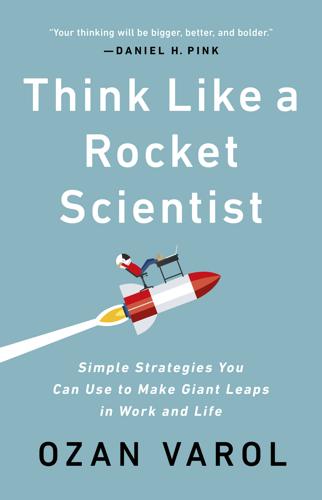
Think Like a Rocket Scientist: Simple Strategies You Can Use to Make Giant Leaps in Work and Life
by
Ozan Varol
Published 13 Apr 2020
So we don’t launch a new business, because we think we don’t have what it takes. We hesitate to apply for a promotion, assuming that someone far more competent will get it. We don’t ask people on a date if they seem out of our league. We play not to lose instead of playing to win. “The story of the human race,” psychologist Abraham Maslow wrote in 1933, “is the story of men and women selling themselves short.”13 If Kennedy were following this mindset, his speech would have been very different (and far more boring). “We choose,” he might have said, “to put humans in Earth orbit and make them circle round and round—not because it’s challenging—but because it’s doable given what we have.”
…
Kranz, Failure Is Not an Option. 11. Mo Gawdat, Solve for Happy: Engineering Your Path to Joy (New York: North Star Way, 2017). 12. James Carville and Paul Begala, Buck Up, Suck Up… and Come Back When You Foul Up: 12 Winning Secrets from the War Room (New York: Simon & Schuster, 2003), 89–90. 13. Abraham Maslow, quoted in Jim Whitt, Road Signs for Success (Stillwater, OK: Lariat Press, 1993), 61. 14. Seth Godin, The Icarus Deception: How High Will You Fly? (New York: Portfolio/Penguin, 2012). 15. Shane Snow, Smartcuts: The Breakthrough Power of Lateral Thinking (New York: HarperBusiness, 2014), 180, Kindle. 16.
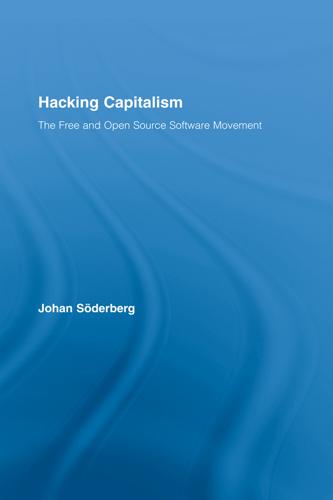
Hacking Capitalism
by
Söderberg, Johan; Söderberg, Johan;
When they reflect upon the ramifications of their hobby they tend to be heavily influenced by notions about the ‘affluent society’.1 The underlying assumption, explicitly argued in Pekka Himanen’s The Hacker Ethic, is that the ‘high-tech gift economy’ on the Internet has emerged as a consequence of the abundant wealth in industrialised economies. Himanen is typical in referring to the psychologist Abraham Maslow’s work on human motivation from the 1950s. According to Maslow, human needs can be arranged in a hierarchy where primacy is assigned to those needs that are most urgently requiring to satisfy for a human being when he lacks everything. When physiological needs are satisfied, such as food and water, attention is turned to safety needs.
…
The popular adoption of the term in the computer underground, however, differs from the Keynesian arguments put forward by Galbraith under the same title. 2. The schematic summary of ‘hierarchy of needs’ has to be amended. Maslow does not present his steps in a so straight-forward fashion, but stresses the interface of differing needs, the influence of habits on behaviour, and the overall complexity of the human brain. Abraham Maslow, Motivation and Personality (New York: Harper & Row Publishers, 1970). 3. Daniel Bell, The Cultural Contradictions of Capitalism (London: Heinemann, 1976), 26. 4. Thomas Davenport and John Beck, The Attention Economy: Understanding the New Currency of Business (Boston, Mass.: Harvard Business School Press, 2001). 5.
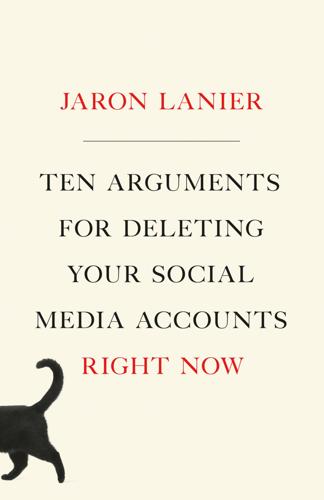
Ten Arguments for Deleting Your Social Media Accounts Right Now
by
Jaron Lanier
Published 28 May 2018
BIT AS BAIT In the bigger picture, in which people must do more than conform in order for our species to thrive, behaviorism is an inadequate way to think about society. If you want to motivate high value and creative outcomes, as opposed to undertaking rote training, then reward and punishment aren’t the right tools at all. There’s a long line of researchers studying this topic, starting with Abraham Maslow in the 1950s and continuing with many others, including Mihaly Csikszentmihalyi (joined by writers like Daniel Pink). Instead of applying the simple mechanisms of behaviorism, we need to think about people in more creative ways, if we expect them to be creative. We need to foster joy, intellectual challenge, individuality, curiosity, and other qualities that don’t fit into a tidy chart.

The Denial of Death
by
Ernest Becker
Published 1 Jan 1973
In recent times every psychologist who has done vital work has made this paradox the main problem of his thought: Otto Rank (to whom I want to devote special chapters later on) more consistently and brilliantly than anyone else since Kierkegaard, Carl Jung, Erich Fromm, Rollo May, Ernest Schachtel, Abraham Maslow, Harold F. Searles, Norman O. Brown, Laura Perls, and others. We might call this existential paradox the condition of individuality within finitude. Man has a symbolic identity that brings him sharply out of nature. He is a symbolic self, a creature with a name, a life history. He is a creator with a mind that soars out to speculate about atoms and infinity, who can place himself imaginatively at a point in space and contemplate bemusedly his own planet.
…
—I argued—since we feel ourselves in many ways guilty and beholden to others, a lesser creation of theirs, indebted to them for our very birth. But this is only part of the story—the most superficial and obvious part. There are deeper reasons for our lack of courage, and if we are going to understand man we have to dig for them. The psychologist Abraham Maslow had the keenest sense for significant ideas, and shortly before his recent untimely death he began to attack the problem of the fear of standing alone.3 Maslow used a broad humanistic perspective in his work, and he liked to talk about concepts like “actualizing one’s potential” and one’s “full humanness.”
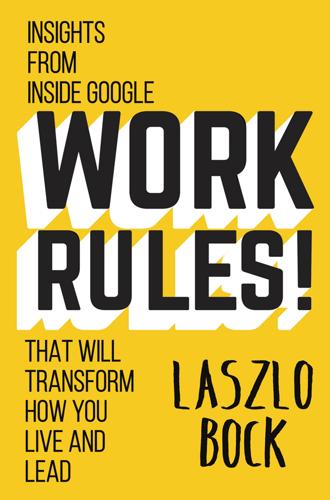
Work Rules!: Insights From Inside Google That Will Transform How You Live and Lead
by
Laszlo Bock
Published 31 Mar 2015
By far the least important attribute we screen for is whether someone actually knows anything about the job they are taking on. Our reasoning and experience is that someone who has done the same task—successfully—for many years is likely to see a situation at Google and replicate the same solution that has worked for them. As the psychologist Abraham Maslow wrote: “I suppose it is tempting, if the only tool you have is a hammer, to treat everything as if it were a nail.”92 The problem with this approach is that you lose the opportunity to create something new. In contrast, our experience is that curious people who are open to learning will figure out the right answers in almost all cases, and have a much greater chance of creating a truly novel solution.xxix For technical roles, such as those in engineering or product management, we assess expertise in computer science quite extensively, but even there our bias is to hire people with a general (though expert-level) understanding of computer science rather than specialized knowledge of just one field.
…
Before Eric would entertain any esoteric ideas, People Operations had to deliver on Google’s most important issue. I learned that to have the privilege of working on the cool, futuristic stuff, you had to earn the confidence of the organization. In 2010, we enshrined that notion in a graphic that encapsulated our approach. The pyramid shape was a nod to psychologist Abraham Maslow’s hierarchy of needs,259 which he presented as a pyramid with our most fundamental needs at the bottom (air, food, water), topped by the need for safety, belonging, love, and finally self-actualization. After seeing our version, a few folks from our team took to calling it Laszlo’s hierarchy. “Laszlo’s hierarchy.” © Google, Inc.
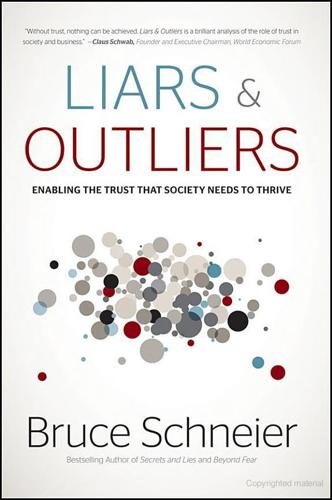
Liars and Outliers: How Security Holds Society Together
by
Bruce Schneier
Published 14 Feb 2012
He might take something, not knowing it is owned by someone. (This is somewhat of a special case, because the person isn't making a risk trade-off.) An individual might have several simultaneous competing interests, some of them pressuring him towards the group norm and some away from it. In 1943, Abraham Maslow ordered human needs in a hierarchy, from the most fundamental to least fundamental: physiological needs, safety, love and belonging, self-esteem, self-actualization, and self-transcendence. Some of those needs advocate cooperation, and others advocate defection. Figuring out whether to cooperate or defect—and then what norm to follow—means taking all of this into account.
…
extreme situations David DeSteno and Piercarlo Valdesolo (2011), Out of Character: Surprising Truths About the Liar, Cheat, Sinner (and Saint) Lurking in All of Us, Crown Archetype. lethal altruists Adolf Tobeña (2009), “Lethal Altruists: Itineraries along the Dark Outskirts of Moralistic Prosociality,” Annals of the New York Academy of Sciences, 1167:5–15. Abraham Maslow Abraham H. Maslow (1943), “A Theory of Human Motivation,” Psychological Review, 50:370–96. Rational Choice Theory Gary S. Becker (1976), The Economic Approach to Human Behavior, University of Chicago Press. Bounded Rationality Bryan D. Jones (1999), “Bounded Rationality,” Annual Review of Political Science, 2:297–321.

The Empathic Civilization: The Race to Global Consciousness in a World in Crisis
by
Jeremy Rifkin
Published 31 Dec 2009
Young counterculturalists and political radicals alike began to direct their energies inward, into the recesses of their own psyches, in search of deeper answers as to why society was the way it was and, more important, how to find personal meaning in a heartless world. Humanist psychologists including Rollo May, Abraham Maslow, and Carl Rogers stepped into the breach, offering a psychological approach and methodology for examining the interior world of the psyche and the condition of the human spirit. Their kindred spirits were the existential philosophers of the nineteenth and twentieth centuries. The Russian novelist Fyodor Dostoevsky best articulated the existential point of view when he observed that “[i]f God didn’t exist, everything would be possible.”84 The existential philosophers start with the assumption that all human beings are alone in the universe, and therefore totally responsible for their own lives.
…
When caring is lost, one becomes apathetic and loses the will to live. May says that at the root of caring is the ability to imbue life with love. He writes: “We will the world, create it by our decision, our fiat, our choice; and we love it, give it affect, energy, power to love and change. . . .”87 Abraham Maslow, who studied at Harry Harlow’s laboratory in the 1930s—Harlow conducted the famous macaque-monkey studies on infant attachment to surrogate mothers—was best known for creating the idea of the “hierarchy of needs,” the ordering of needs from the most basic need of physical survival to the highest need of self-actualization.
…
Kohut concluded that, “[t]his combination of empathic- introspective data-gathering with abstract formulation and theoretical explanation . . . constitutes a revolutionary step in the history of science.”23 The new ideal in science, said Kohut, “can be condensed into a single evocative phrase: we must strive not only for scientific empathy but also for an empathic science.”24 Abraham Maslow, among others, concurred with Kohut’s vision of a new science and attempted to calm the rising fury within the scientific establishment by clarifying what was perhaps the most dangerous challenge to science in its modern incarnation. He wrote,I certainly wish to be understood as trying to enlarge science, not destroy it.
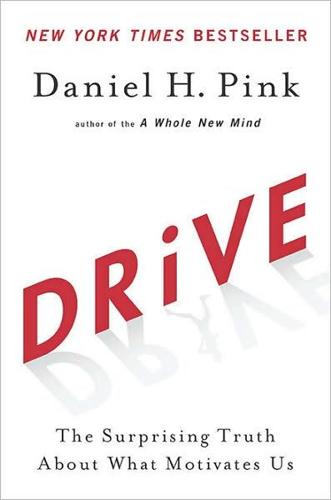
Drive: The Surprising Truth About What Motivates Us
by
Daniel H. Pink
Published 1 Jan 2008
But what this operating system lacked in enlightenment, it made up for in effectiveness. It worked well extremely well. Until it didn't. As the twentieth century progressed, as economies grew still more complex, and as the people in them had to deploy new, more sophisticated skills, the Motivation 2.0 approach encountered some resistance. In the 1950s, Abraham Maslow, a former student of Harry Harlow's at the University of Wisconsin, developed the field of humanistic psychology, which questioned the idea that human behavior was purely the ratlike seeking of positive stimuli and avoidance of negative stimuli. In 1960, MIT management professor Douglas McGregor imported some of Maslow's ideas to the business world.

The Pleasures and Sorrows of Work
by
Alain de Botton
Published 1 Apr 2009
But Symons maintained that a secularised version of this notion had survived even into the modern age, where it was prone to torture us with an expectation that the meaning of our lives might at some point be revealed to us in a ready-made and decisive form, which would in turn render us permanently immune to feelings of confusion, envy and regret. Symons preferred a quote from Motivation and Personality, by the psychologist Abraham Maslow, which he had pinned up above the toilet: ‘It isn’t normal to know what we want. It is a rare and difficult psychological achievement’. 4. When Carol returned the following week, she was dressed in a green skirt and T-shirt and seemed a decade younger. Symons apologised for the smell in the room (his wife was making puréed swede with cheesy crust) and suggested that she submit to a small written exercise.

Team Human
by
Douglas Rushkoff
Published 22 Jan 2019
The resulting New Age movement stressed individual enlightenment over communal health. It was the same old personal salvation wine, only in California chardonnay bottles. The social justice agenda of the antiwar and civil rights movements was repackaged as the stridently individualistic self-help movement. They adopted psychologist Abraham Maslow’s “hierarchy of needs” as their rubric, with “self-actualization” as the ultimate goal at the top of the pyramid. Never mind that Buddhists would have challenged the very premise of a self. The LSD trip, with its pronounced sense of journey, peak, and return, became the new allegory for individual salvation.

Them And Us: Politics, Greed And Inequality - Why We Need A Fair Society
by
Will Hutton
Published 30 Sep 2010
And last but not least, as Western populations’ life expectancy continues to increase, ever more members of the working population will be required to service pensioners’ care and leisure needs.6 Intriguingly, in all of these areas, the character of demand is changing, along with its structure and pattern. As consumers grow richer and more sophisticated, they move up Abraham Maslow’s famous ‘hierarchy of needs’. They no longer aspire to the mere satiation of their needs; they are looking for self-fulfilment and self-actualisation. They want to be better authors of their own lives, making choices that, as Amartya Sen has coined, they have reason to value. This expresses itself in a quest for ever more experiences and knowledge, and it is already evident in the personalisation of cars and clothes, the growing use of holidays to stretch everything from physical fitness to musical skills, and increasing interactivity in the media.
…
When Aristotle claimed that ‘people everywhere want to expand their horizons and discover their talents’ he fathered a great tradition in Western thought that we should honour now as never before. Cervantes and Shakespeare placed the individual’s quest for self-discovery and self-realisation at the heart of their work. Kant wanted individuals to dare to know. Abraham Maslow believed that individuals moved up a hierarchy of needs towards self-actualisation. Amartya Sen now insists that every human being should be equipped with the capabilities that allow them to choose a life they have reason to value.5 The Nobel Prize-winner for economics Edmund Phelps has created a new term to describe the combination of intellectual energy, vitality and problem-solving that needs to be the common intellectual culture in the future.6 He calls it ‘vitalist’.
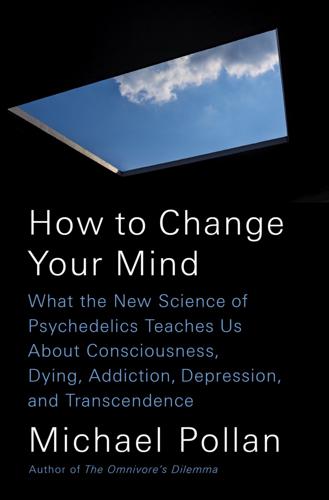
How to Change Your Mind: What the New Science of Psychedelics Teaches Us About Consciousness, Dying, Addiction, Depression, and Transcendence
by
Michael Pollan
Published 30 Apr 2018
I realized I had not exaggerated the first trip but in fact had forgotten 80 percent of it. “I have never doubted the validity of these experiences,” Richards told me. “This was the realm of mystical consciousness that Shankara was talking about, that Plotinus was writing about, that Saint John of the Cross and Meister Eckhart were writing about. It’s also what Abraham Maslow was talking about with his ‘peak experiences,’ though Abe could get there without the drugs.” Richards would go on to study psychology under Maslow at Brandeis University. “Abe was a natural Jewish mystic. He could just lie down in the backyard and have a mystical experience. Psychedelics are for those of us who aren’t so innately gifted.”
…
Andrei eventually left Bucharest for San Francisco, bound for what he had heard was “the first New Age graduate school”—the California Institute of Integral Studies. Founded in 1968, the institute specializes in “transpersonal psychology,” a school of therapy with a strong spiritual orientation rooted in the work of Carl Jung and Abraham Maslow as well as the “wisdom traditions” of the East and the West, including Native American healing and South American shamanism. Stanislav Grof, a pioneer of both transpersonal and psychedelic therapy, has been on the faculty for many years. In 2016, the institute began offering the nation’s first certificate program in psychedelic therapy.

Consumed: How Markets Corrupt Children, Infantilize Adults, and Swallow Citizens Whole
by
Benjamin R. Barber
Published 1 Jan 2007
In discussing the donation of the greater part of his fortune to the Bill and Melinda Gates Foundation, billionaire Warren Buffett acknowledged that although he is “a big believer in the market system 95% of the time…it’s done pretty well by me, and the world…there are things where the market system is not going to solve the problem.”37 So although only a few of the core or irreducible needs enumerated by Brazelton and Greenspan or fellow psychologist Abraham Maslow are material in character—aimed at nutrition, housing, health, and security38—those crucial few remain mostly without impact on the market and on world trade, which continues to focus on the real if fragile market defined by the artificially induced faux needs of the prosperous. Brazelton and Greenspan are correct in arguing that “our society is failing many of its families and small children at present,” but only if a way can be found for capitalism to target irreducible needs is this injustice likely to be redressed.39 Is it possible for capitalism to revamp its mission within the limits of the modern consumer market?
…
Michael Wines, “Hope for Hungry Children, Arriving in a Foil Packet,” New York Times, August 8, 2005. 36. See Sachs, The End of Poverty. 37. On PBS’s Charlie Rose television show, June 26, 2006. Buffett, the second richest person on earth following Bill Gates, offered the greater part of his $30 billion fortune to the Gates Foundation. 38. Abraham Maslow’s hierarchy of needs include self-actualization, the aesthetic, the cognitive, esteem, love and belongingness, safety, and the physiological (material). Brazelton’s and Greenspan’s include “ongoing Nurturing Relationships; Physical Protection, Safety and Regulation; Experiences Tailored to Individual Differences; Need for Developmentally Appropriate Experiences; Need for Limit Setting, Structure, and Expectation; Need for Stable, Supportive Communities and Cultural Continuity; protecting the Future” (The Irreducible Needs of Children: What Every Child Must Have to Grow, Learn, and Flourish [Cambridge, Mass.: Perseus, 2000]). 39.
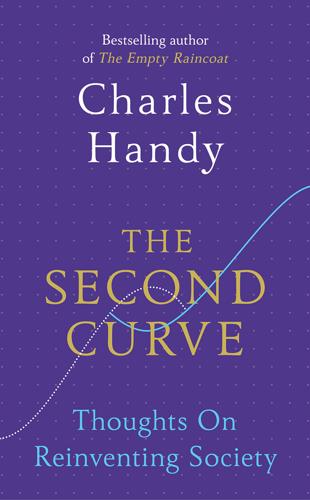
The Second Curve: Thoughts on Reinventing Society
by
Charles Handy
Published 12 Mar 2015
Most of us have to provide for our own economic and social needs before we are ready to concentrate on fulfilling our real potential. The pursuit of personal eudaimonia is a Second- or even Third-Curve cause, best done when you know who you are, what you can and can’t do, when you are no longer consumed by the need to survive and provide. Abraham Maslow, the American psychologist, used his idea of a hierarchy of needs to suggest that it is only when you have satisfied your economic and status needs that you are ready to proceed to what he called self-actualisation, a state not dissimilar to eudaimonia. So, yes, you do need money at the outset, but it does not stop there.

The Heartfulness Way: Heart-Based Meditations for Spiritual Transformation
by
Kamlesh D. Patel
and
Joshua Pollock
Published 31 May 2018
But even as my parents achieved all the traditional markers of success–salary, status, and security–they realized that making a living did not always equate to making a life. Indeed, making a life also requires one to focus on the art of living–on loving relationships, emotional intelligence, and a sense of meaning and purpose. In many ways, my parents’ journey reflects Abraham Maslow’s famous “hierarchy of needs” theory, which postulates that only after sustenance, security, and community are established can one achieve self-actualization. While on her spiritual journey, my mother encountered Heartfulness and began her practice in earnest. She soon became a Heartfulness trainer and served as a meditation facilitator within the tradition, and she hosted people in our house every Sunday morning for meditation and fellowship.
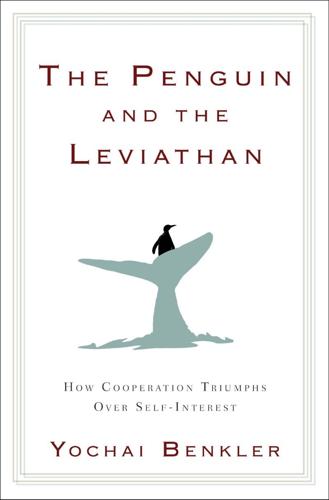
The Penguin and the Leviathan: How Cooperation Triumphs Over Self-Interest
by
Yochai Benkler
Published 8 Aug 2011
And finally, psychology recognizes that not all people respond the same way to the same cues and contexts. It explores the important role that individual differences and personality play. Let’s look first at those basic drivers or motivations: our needs, goals, or values. The most widely known theory of the psychology of needs is Abraham Maslow’s classic hierarchy, with basic physiological needs at the base of the pyramid, ascending to safety, to love/belonging, to esteem, and finally to self-actualization. Another well-known theory of needs (which we will encounter in later chapters) is Edward Deci and Richard Ryan’s, which posits that humans have three basic needs: autonomy, competence, and relatedness.

Technically Wrong: Sexist Apps, Biased Algorithms, and Other Threats of Toxic Tech
by
Sara Wachter-Boettcher
Published 9 Oct 2017
Pretty soon we’d be watching viral videos, rickrolling our friends, laughing at lolcats—and, of course, managing all that mundane stuff like banking and shopping from our screens. And that meant pretty much every business was aiming not just to have a website, but to figure out how technology might change the way it served its customers. So here we are, a decade later, and technology is so pervasive that a version of psychologist Abraham Maslow’s hierarchy of needs with “WiFi” added to the base of the pyramid has become one of the most enduring internet memes around. Maslow’s hierarchy, updated. Even if you’re not someone who checks Instagram five times during dinner, you probably rely on connected technology for all kinds of things you used to do in person or over the phone.
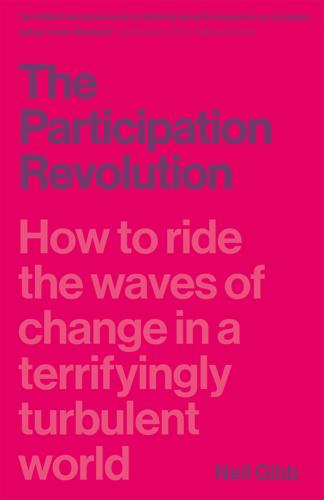
The Participation Revolution: How to Ride the Waves of Change in a Terrifyingly Turbulent World
by
Neil Gibb
Published 15 Feb 2018
Rapha is a master class in the application of participatory innovation to build a high-value brand with passionate and extremely loyal fans in the emerging new economy. Towards the end of 2001, Mottram, then working as a freelance branding consultant, gave a presentation at the Luxury Brand Association in London. He used the psychologist Abraham Maslow’s classic hierarchy of human needs as a framework. Maslow’s now famous hierarchy was first published in a research paper in 1943. Psychology had emerged as an academic discipline in the second half of the 19th century, part of an explosion of scientific and intellectual growth as the disruptive phase of the Industrial Revolution gave way to social transformation.
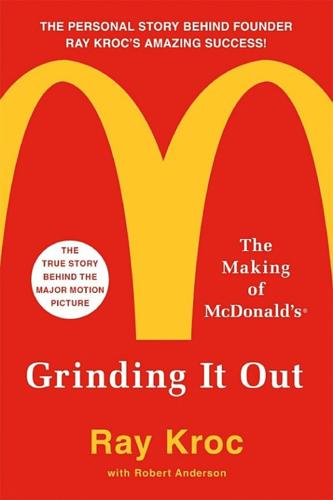
Grinding It Out: The Making of McDonald's
by
Ray Kroc
Published 1 Jan 1977
During 1983, McDonald’s grew to nearly double the 4,000 restaurants it had when this book was first published. Its 1983 sales, systemwide, approached $9 billion. And in December of that year Esquire magazine saluted Ray Kroc as one of fifty individuals who had made the greatest contribution to the American way of life in the twentieth century. He was ranked with psychologist Abraham Maslow, theologian Reinhold Niebuhr, and civil rights leader Martin Luther King, Jr., in the category of “visionaries.” Kroc gleefully accepted the tribute as good public relations for McDonald’s and posed for a photograph that showed him leaning over his desk holding a branding iron in the shape of the Golden Arches.
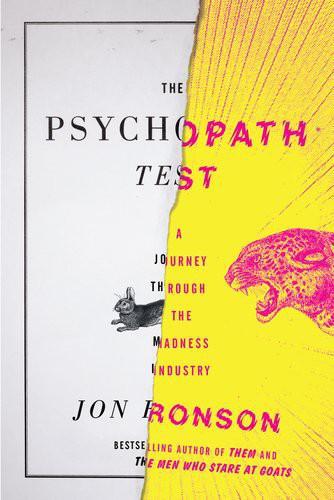
The Psychopath Test: A Journey Through the Madness Industry
by
Jon Ronson
Published 12 May 2011
Ron Hubbard’s life and death came from Scientology videos and from the 1997 Channel 4 documentary Secret Lives: L. Ron Hubbard, produced and directed by Jill Robinson and 3BM films. I enjoyed piecing together the Elliott Barker/Oak Ridge story. Research into Dr. Barker’s odyssey took me to R. D. Laing: A Life, by Adrian Laing (Sutton, 1994–2006); “Baring the Soul: Paul Bindrim, Abraham Maslow and ‘Nude Psychotherapy,’ ” by Ian Nicholson (Journal of the History of the Behavioral Sciences, vol. 43, no. 4, 2007); and Please Touch, by Jane Howard (McGraw-Hill, 1970). I learned about the Oak Ridge experiment from reading “An Evaluation of a Maximum Security Therapeutic Community for Psychopaths and Other Mentally Disordered Offenders,” by Marnie E.

How PowerPoint Makes You Stupid
by
Franck Frommer
Published 6 Oct 2010
This return to favor of the human factor is often attributed to the managerial current derived from the thinking of the human relations school of management created after the 1929 crash as a critique of Taylorism. This school sought to restore the individual to the center of the company’s activities. Its best known representatives are Elton Mayo and Abraham Maslow. 8. According to standard X50-115; see Gilles Garel, Le Management de projet (Paris: La Découverte, 2003), 14. 9. Luc Boltanski and Ève Chiapello, The New Spirit of Capitalism, trans. Gregory Elliott (London: Verso, 2005). 10. Luc Boltanski, “Les changements actuels du capitalisme et la culture du projet,” Cosmopolitiques 22 (June 12, 2006). 11.
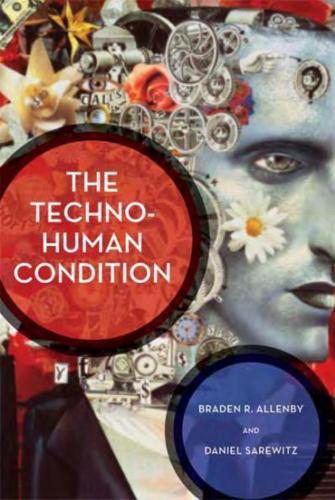
The Techno-Human Condition
by
Braden R. Allenby
and
Daniel R. Sarewitz
Published 15 Feb 2011
We know that technological systems are now as complex, pervasive, and incomprehensible as natural systems; in fact we know that the distinction between technological and natural systems is no longer very meaningful. We know that the dependence of modern market economies on continual growth means that we have to keep inventing and consuming new technologies, whether we really Level I and Level II Technology 33 need them or not-indeed, it is not clear what "need" means in our modern framework, Abraham Maslow to the contrary.3 Moreover, this process of continual innovation, productivity enhancement, and economic growth leads to apparently unavoidable spasms of severe unemployment and socioeconomic disruption and transformation, along with the wealth creation that seems to have become an underpinning for civil stability.
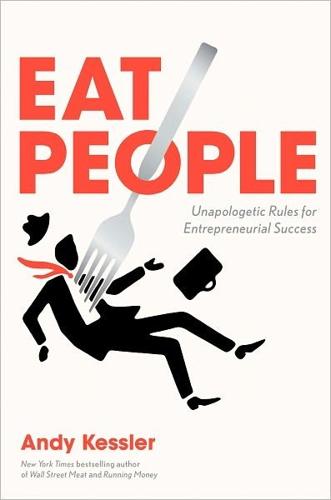
Eat People: And Other Unapologetic Rules for Game-Changing Entrepreneurs
by
Andy Kessler
Published 1 Feb 2011
Oh, and by the way, lots of people look at wealth and standards of living in different ways. It’s easy to get fooled. It is too easy for people to get caught up in the touchy-feely stuff. Let’s face it—we don’t, except for a few of my neighbors, live in the Caveman Era anymore. So there are plenty of other “needs”—especially in California. In 1943, psychologist Abraham Maslow defined a hierarchy of needs, in ascending order: (1) physiological/biological needs, (2) safety needs, (3) love, affection, and belongingness/social needs, (4) esteem, and (5) self-actualization. Let others fall into this Maslowian/Feed Your Head trap. Productivity drives living standards and wealth, not actualization—self or otherwise.
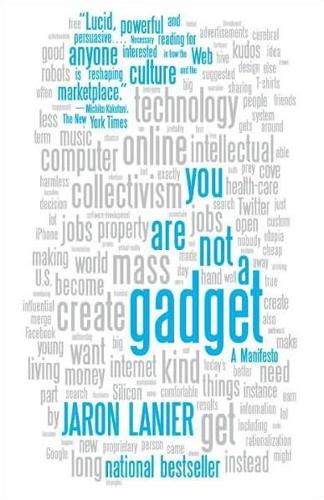
You Are Not a Gadget
by
Jaron Lanier
Published 12 Jan 2010
What has saved us from Marxism is simply that new technologies have in general created new jobs—and those jobs have generally been better than the old ones. They have been ever more elevated—more cerebral, creative, cultural, or strategic—than the jobs they replaced. A descendant of a Luddite who smashed looms might be programming robotic looms today. Crashing Down Maslow’s Pyramid Abraham Maslow was a twentieth-century psychologist who proposed that human beings seek to sate ever more exalted needs as their baser needs are met. A starving person might choose to seek food before social status, for instance, but once a person isn’t hungry, a desire for status can become as intense as the earlier quest for food.
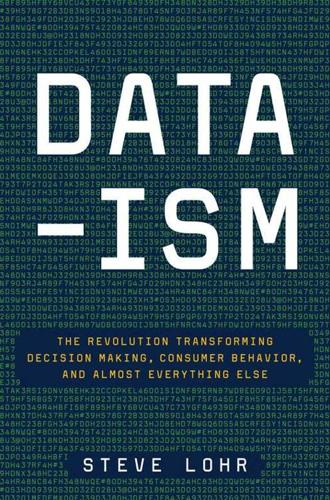
Data-Ism: The Revolution Transforming Decision Making, Consumer Behavior, and Almost Everything Else
by
Steve Lohr
Published 10 Mar 2015
One of the most influential was a methodology for identifying different customer markets that came out of SRI International called VALS, for “Values, Attitudes, and Lifestyles.” The system was developed in the late 1970s by a team at the research institute, led by the sociologist Arnold Mitchell. It drew heavily on the earlier research of the sociologist David Riesman, author of The Lonely Crowd, a study of modern conformity, and on the work of the psychologist Abraham Maslow, who viewed behavior as the pursuit of a “hierarchy of needs.” VALS classified people according to nine personality types, including achievers, belongers, sustainers, and societally conscious. Consumer behavior, then, was explained by a mere nine categories. The customer projects Haydock works on are short in length, usually four to eight months, and sharply aimed at a specific challenge the company is struggling with.
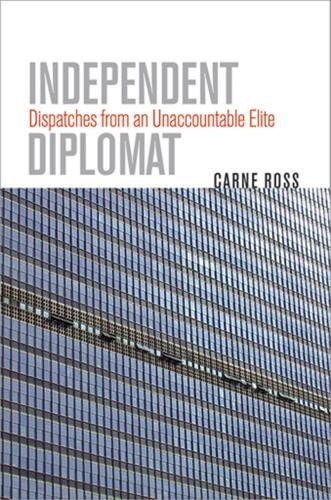
Independent Diplomat: Dispatches From an Unaccountable Elite
by
Carne Ross
Published 25 Apr 2007
Global opinion surveys, such as those conducted by the Pew Center and Gallup International, suggest that while the escape from poverty is a primary global concern, other concerns, particularly once wealth levels rise, become more pressing.5 These concerns, including things like crime, corruption and disease, do not fit easily, or even at all, into the assumptions of conventional economics on what motivates us. This evidence fits in with well-established psychological theory about human needs and wants, such as Abraham Maslow’s “hierarchy of needs”. This claimed that the highest level of human motivation was the need to achieve self-fulfillment. Below that were other levels of need, each of which had to be satisfied before people could progress to the next. At the bottom of Maslow’s pyramid of needs were the basics of life such as food, water and material comforts.

The Other Side of Happiness: Embracing a More Fearless Approach to Living
by
Brock Bastian
Published 25 Jan 2018
But it is exactly these elements that both young women overcame, and in so doing their adventures have no doubt led to a great deal of confidence in their own personal ability and self-worth. Painful and stressful experiences are also critically important for our ability to satisfy our higher-order needs. In 1943 Abraham Maslow developed a theory of human motivation that is now one of the best-known theories within psychology.5 He outlined a hierarchy of human needs extending from the most basic physiological needs (e.g. food and water) and the need to feel safe, to higher-order needs such as esteem and self-actualization.
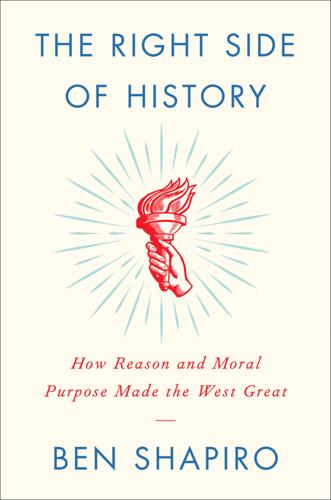
The Right Side of History
by
Ben Shapiro
Published 11 Feb 2019
Virtue, it turns out, was part of that old-style hierarchy that had kept humanity penned in for millennia. No, people merely had to “find themselves.” This newfangled gloss on Rousseauian romanticism found ecstatic followers on the New Left. Where once conscience had reigned supreme, now self-fulfillment became the key to self-betterment. The psychological theory of Abraham Maslow (1908–1970) was hijacked to support this new journey within. Maslow said that human beings sought self-realization—not the pursuit of virtue through acting in accordance with an objective telos, but realization of what you truly want. Repression prevents us from realizing what we want and need—and such repression begins in childhood, “mostly as a response to parental and cultural disapprovals.”
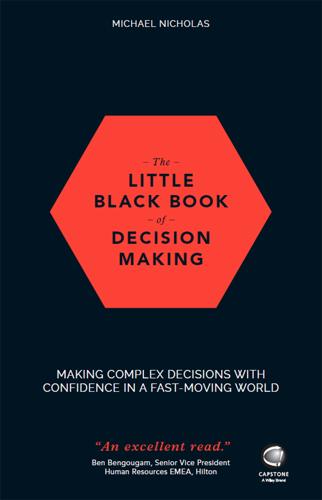
The Little Black Book of Decision Making
by
Michael Nicholas
Published 21 Jun 2017
This hind brain deals with automatic reactions, so that we can maximise our ability to cope with what is happening right now, whilst the forebrain is like the captain of the ship, giving us the potential to set a new course: to think, then react. If the Only Tool You Have is a Hammer … Psychologist Abraham Maslow is quoted as saying: “I suppose it is tempting, if the only tool you have is a hammer, to treat everything as if it were a nail.” This is a great metaphor for the idea that anyone armed only with a narrow worldview will tend to want to see problems, and their solutions, through that restricted focus.
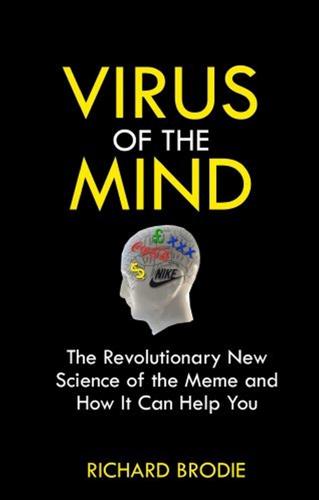
Virus of the Mind
by
Richard Brodie
Published 4 Jun 2009
Now, there are an infinite variety of life purposes; and in fact there are plenty of cults, corporations, and other mind viruses happy to give you one that serves their own purposes. I would suggest you select a “higher” purpose for yourself that maximizes your fulfillment and enjoyment in life. Psychologists and psychiatrists such as Abraham Maslow and Viktor Frankl have noticed that when people are willing or forced to stop worrying about such issues as their own survival and imminent crises, they have another set of drives, referred to alternately as “higher purpose,” “calling,” or “self-actualization.” Where did these drives come from?
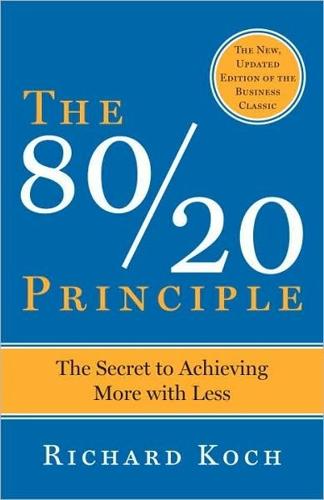
The 80/20 Principle: The Secret of Achieving More With Less
by
Richard Koch
Published 15 Dec 1999
What belongs in this box is anything that is truly important to our lives, whether it is work, our personal relationships, what we wish to achieve, the hobby that gives us immense pleasure, or anything else that fulfills us and will give us consolation on our deathbed. When we look back on our life to date, and look forward to our life to come, and enjoy our life as it is in the current moment, anything that gives us a warm glow and makes us feel glad to be alive—all of that falls into the life-enhancing box. What the great American industrial psychologist Abraham Maslow labelled “hygiene factors”—food, shelter, material needs—are important when they are not met, but relatively unimportant once they have been satisfied. The hygiene factors, in my terms, fall into the efficiency box and require a 20 percent solution, the most productive solution with the least expenditure of life energy.

Branding Your Business: Promoting Your Business, Attracting Customers and Standing Out in the Market Place
by
James Hammond
Published 30 Apr 2008
It might even be to fix an ornament, a trophy, a family heirloom. . . something that draws an emotive benefit each time it is viewed. The USP of yesteryear has become the ESP (Emotional Selling Point) of today. Maslow’s Hierarchy of Human Needs Why has the emphasis shifted so much towards creating emotional benefits for today’s customers? In 1943 the psychologist Abraham Maslow proposed a theory for human motivation and established what he called his ‘Hierarchy of Human Needs’. Maslow believed that, as humans, we seek to satisfy successively ‘higher’ needs that occupy a set hierarchy, and used a pyramid (see Figure 2.3) to show how these needs are prioritised into five different levels: self-fulfilment Figure 2.3 Feature, tangible benefit and emotional benefit Branding the heart as well as the head 39 physiological needs: basics such as food, drink, shelter, sleep and sexual activity; safety needs: physical security, security of employment, security of revenues and resources, law and order (security of personal property against crime), family security and health security; belongingness, love and social needs: the need for love and affection, relationships, a supportive and communicative family, belongingness to a group and sexual intimacy; esteem needs: the need for self-esteem, self-respect, self-mastery and independence, plus dominance, prestige, and the need for both respect and esteem from others; self-actualisation needs: the desire for personal growth, integration, and finding self-fulfilment through realising one’s potential.
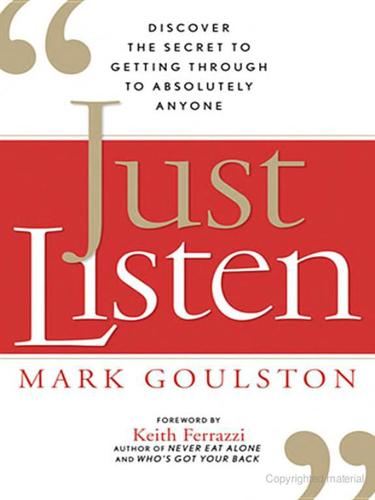
Just Listen: Discover the Secret to Getting Through to Absolutely Anyone
by
Mark Goulston M. D.
and
Keith Ferrazzi
Published 31 Aug 2009
Once you’re used this exercise to open your mind, schedule a meeting or a lunch with the person—and see if you can find out the real reason for the problem behaviors you see. 5 MAKE THE OTHER PERSON FEEL “FELT” Self-actualizing people have a deep feeling of identification, sympathy, and affection for human beings in general. They feel kinship and connection, as if all people were members of a single family. —ABRAHAM MASLOW, PSYCHOLOGIST “How much longer will this take? I’ve got better things to do,” grunted Hank, a gray-haired senior partner at a prestigious LA. boutique entertainment law firm. I’d been called in to smooth out the relationship between Hank and Audrey, another senior partner. Audrey, whose name preceded Hank’s on the door, brought in most of the firm’s business.
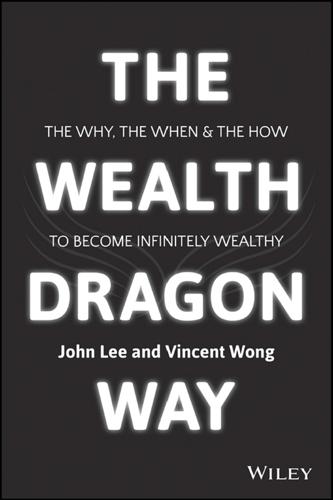
The Wealth Dragon Way: The Why, the When and the How to Become Infinitely Wealthy
by
John Lee
Published 13 Apr 2015
No one is stopping you from getting it; we all have access to it, and, unlike the infinite celestial objects you can see in the night sky, you don't have to build a space rocket to get to it! Financial abundance sounds nice, doesn't it? It's probably a long way off from where you are now, and you have to go through each of the four stages of the path towards infinite wealth to get there (you can't skip any steps), but you can practice the mindset in preparation! The psychologist Abraham Maslow suggested in the 1940s that we have a hierarchy of needs, which we illustrate in a pyramid form in Figure 11.2. His theory stressed that we can't skip a level of the pyramid: If we don't have our basic needs met, we can't get our higher needs met. The same goes for building monetary wealth through the four stages.

Ansible for DevOps: Server and Configuration Management for Humans
by
Jeff Geerling
Published 9 Oct 2015
This chapter introduced different ways of using include, the power and flexible structure of roles, and how you can utilize Ansible Galaxy, the community repository of configurable Ansible roles that do just about anything. _________________________________________ / When the only tool you own is a hammer, \ | every problem begins to resemble a | \ nail. (Abraham Maslow) / ----------------------------------------- \ ^__^ \ (oo)\_______ (__)\ )\/\ ||----w | || || Chapter 7 - Inventories Earlier in the book, a basic inventory file example was given (see Chapter 1’s basic inventory file example). For the simplest of purposes, an inventory file at the default location (/etc/ansible/hosts) will suffice to describe to Ansible how to reach the servers you want to manage.
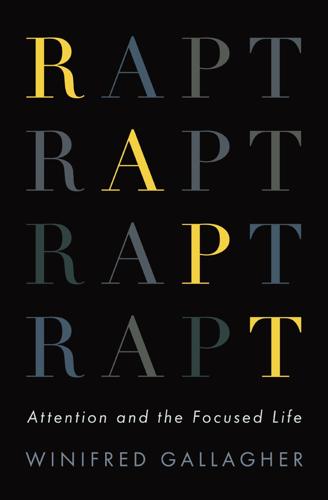
Rapt: Attention and the Focused Life
by
Winifred Gallagher
Published 9 Mar 2009
This immersion in outdoors thrills and chills and catch-as-catch-can employment provided Burke with a valuable crash course in the rancher’s hardscrabble, just-manageable way of life to come. THE INSIGHTS INTO rapt attention’s role in human behavior in general and productivity in particular first contributed by James, Hobbs, and Abraham Maslow, who studied “peak experience,” have been greatly expanded by the more recent research on “flow” conducted by the Claremont psychologist Mihály Csíkszentmihályi. This state of “optimal human experience” kicks in when you’re completely focused on doing something that’s both enjoyable and challenging enough to be just manageable.
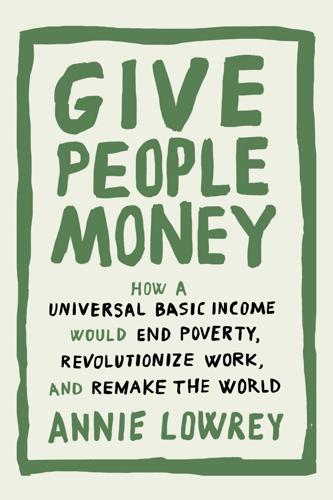
Give People Money
by
Annie Lowrey
Published 10 Jul 2018
In Santens’s mind, a UBI is not a salve for a world of technological unemployment, or a powerful antipoverty measure, or a form of social dividend, or a way to boost the earnings of the working poor. Rather, it is all those things and more: a paradigmatic shift that would free people from having to do work that they did not want to do at all. A UBI would, in essence, lop off the bottom of the psychologist Abraham Maslow’s “hierarchy of needs,” where air, food, water, and shelter reside, with self-transcendence up at the other end. A UBI would give people the economic bandwidth to do what they wanted with their lives, he says. Let the robots do the dirty work. Let the people do what they want. “We are not facing a future without work.
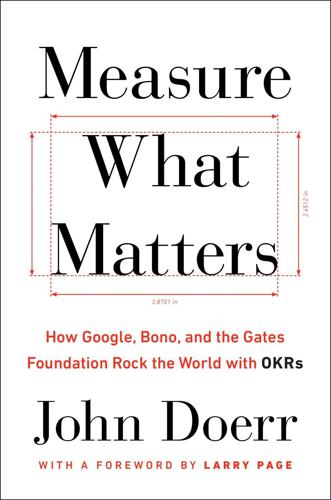
Measure What Matters: How Google, Bono, and the Gates Foundation Rock the World With OKRs
by
John Doerr
Published 23 Apr 2018
Leaders must ask themselves: What type of company do we need to be in the coming year? Agile and daring, to crack a new market—or more conservative and operational, to firm up our existing position? Are we in survival mode, or is there cash on hand to bet big for a big reward? What does our business require, right now? Our Need to Stretch Andy Grove was a fan of Abraham Maslow, the mid-twentieth-century psychologist best known for his “hierarchy of needs.” According to Maslow, only after we satisfy more basic concerns—starting with food and shelter, then safety, then “love” and “belongingness”—can we move to higher-level motivations. At the top of Maslow’s pyramid stands the need for “self-actualization”: Maslow’s hierarchy of needs represented as a pyramid, with more basic needs at the base.
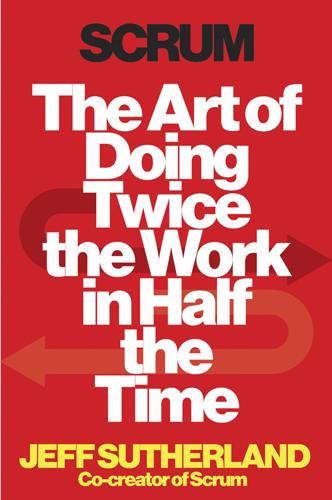
Scrum: The Art of Doing Twice the Work in Half the Time
by
Jeff Sutherland
and
Jj Sutherland
Published 29 Sep 2014
It empowers people to change themselves and attaches an incentive to doing so. Remember the Fundamental Attribution Error? When you’re surrounded by assholes, don’t look for bad people; look for bad systems that reward them for acting that way. Then you use the Happiness Metric to fix it. In high school or college many of us studied the American psychologist Abraham Maslow’s “hierarchy of needs.” It laid out, in pyramid form, the needs that humans take care of first and then those that become more pressing as lower ones are satisfied. At the pyramid’s base are physiological needs: air, water, food, clothing, and shelter. If we don’t have those, we can’t even begin to think about anything else.
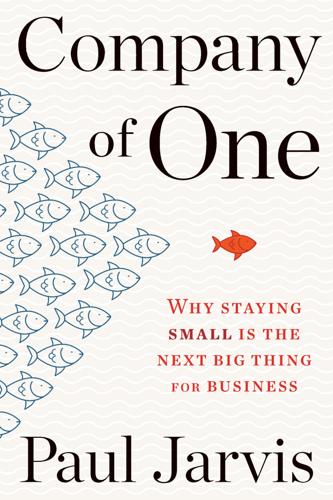
Company of One: Why Staying Small Is the Next Big Thing for Business
by
Paul Jarvis
Published 1 Jan 2019
Something as simple as a thirty-second video welcoming a customer to a product has real capacity to build goodwill, social capital, and genuine connection between a customer and a company. McGill University feels so strongly that deep relationships are required with customers that they actually teach several courses and workshops on the subject. Matthew Lieberman, a professor of social cognitive neuroscience at UCLA, even goes so far as to suggest that Abraham Maslow had it quite wrong in his pyramidal hierarchy of needs when he specified physiological needs and the need for safety as humans’ most basic needs. Instead, in Lieberman’s estimation, belonging and connection, which Maslow defines as psychological needs, are our most basic need and should be at the bottom of the pyramid, because humans are wired to connect with each other.

On Time and Water
by
Andri Snaer Magnason
Published 15 Sep 2021
Björnsson Hallgrimur Pétursson, Passion Hymns Haraldur Jónsson Harrer, Heinrich Haukur Haflidason Hávamál (poem) “Heaven” mountain lodge Hédinn Valdimarsson Helga Jóhannsdóttir Helgi Björnsson (glaciologist) Helgi Filippusson (Grandma Hulda’s brother) Helgi Hundingsbana (poem) Helgi Valtýsson Hellisheidi Geothermal Power Plant the “hidden people” (huldufólk) Hierarchy of Needs (Abraham Maslow) the Himalayas see also Dharamsala The Hindu Kush Himalaya Assessment Hindu mythology Hironoka, Masaki Höfdi, Reykjavik Högni Egilsson Holocene era Hrefna Einarsdóttir, photograph by Hulda Filippía (author’s daughter) Hulda Gudrún Filippusdóttir see Grandma Hulda hurricanes increasing frequency and severity named Hvannadalshnúkur hydroelectric schemes first in Iceland Kárahnjúkar Svartá hydroelectric scheme I Ice Ages ice cores ice sheets see also glacier melting Iceland area and territorial waters Christianization Dalai Lama’s visit (2009) independence (1944) independence movement parliament per capita emissions proposed national flag (1809) protective philosophy relations with the UK response to Covid-19 tourism Icelandic Commonwealth, 930–1262 Icelandic Glaciological Society Vatnajökull expedition (1956) India author’s first impressions Dharamsala inequality secularism and religion Indus, River infant mortality Ingibjörg Árnadóttir insects “The Institute” see Árni Magnússon Institute for Medieval Studies “interesting times” curse international cooperation prospects IPCC (UN Intergovernmental Panel on Climate Change) Iran, U.S. embassy seizure (1979) Israel J Jesus Christ job losses John Thorbjarnarson (author’s uncle; son of Björn and Peggy) crocodile conservationist South American expedition Jökulheimar research base Jökull (journal) Jón Eythórsson Jón Ólafsson Jón Pétursson see Grandpa Jón Jón Samsonarson Jón Sigurdsson Jónas Hallgrímsson Jørgen Jørgensen (“King of the Dog Days”) K Kailas, Mount (Tibet) Kamadhenu see cows; Hindu mythology Kaupthing Bank Keeling, Charles Ketill Ketilsson the “King’s Book” Kjartan Vigfússon (Grandpa Árni’s father) Kringilsárrani district Helgi Valtýsson’s enthusiasm for inspiration for Dreamland reservoir scheme Kristín Björnsdóttir (author’s mother) as an identical twin with Gudrún Kvaran, Gunnar L landscapes, as ephemeral language of the climate emergency dependence on culture evolving alphabets of freedom and independence of Hallgrímur Pétursson of Helgi Valtýsson Icelandic and Faeroese compared Icelandic and Hindi compared inadequacy in times of crisis Indo-European group of Jørgen Jørgensen of moderation and liberalism Laozi, on usefulness Laxness, Halldór life, tenacity of Lindbergh, Charles Little Ice Age livestock feeding Living Planet Index lockdown, Covid-19 logarithmic scales LoveStar, by the author Lucht, Wolfgang M Magnús Stephensen Manhattan Project as a model manhood, traditions of manuscripts, Árni Magnússon Institute Mao Zedong Marxism and the Dalai Lama Medieval Studies see Árni Magnússon Institute Melrakkaslétta (farmhouse) memories selective loss specific events timescales of messages in bottles methane monsoons moon, race to land on Mount Kailas, Tibet movies Grandpa Árni’s The Hero’s Journey to the Third Pole … Prometheus Social Network Star Wars N naming, of Brúdarbunga Narayani river national parks Nature Buddhist respect for technology and valued only economically Nehru, Pandit Nepal newlyweds, jokes about Nielsen, Ólafur Nielsen, Peter Nikailananda Saraswati (guru) nitrous oxide nuclear energy nuclear powers, Himalayan region nuclear weapons number 3 Selás nurses, floating O ocean acidification calcium and coinage and frequency of the term frustrating conservation measurements and predictions significance and uniqueness oceans, warming see also sea level changes oil dependence on equivalent personal consumption production figures oil drilling platforms oil industry lobbying Ólafur Brynjólfsson, manuscript Ólafur Ketilsson Oppenheimer, J Robert over-consumption see consumerism oxygen levels and corals plankton photosynthesis and P Pacific garage patch Páll Thorbjarnarson (brother of Grandpa Björn) Papa Árni see Grandpa Árni parents’ and grandparents’ roles Paris Agreement parliaments Peggy (Grandpa Björn’s second wife) pelicans (Pelecanus occidentalis) permafrost melting Peru Petite Martinique island pH scale Phelps, Samuel photographers accusations against Arnar Thórisson author’s son Edvard Sigurgeirsson Grandpa Árni Hrefna Einarsdóttir Martin de Thurah Ragnar Axelsson plankton photosynthesis and atmospheric oxygen red plankton, Calanus finmarchicus sea butterflies (Thecosomata) plastics, production Poetic Edda political consequences of decarbonisation pollution frequently exported status of China tidal deposits Pompeo, Mike population around the Himalayas of crocodiles of insects population growth and female emancipation world, predictions Postman, Neil predator role in ecosystems Project Drawdown Prometheus movie Prometheus myth Prose Edda public, per capita oil consumption public apathy and paralysis public involvement, Icelandic Glaciological Society public misunderstanding of logarithmic scales public transport “push moraines” Q quality of life oil and water and quicksand risk R Ragnar Axelsson Ragnarok Reagan-Gorbachev meeting, 1986 recycling potential, aluminium reincarnation reindeer In Reindeer Country, by Helgi Valtýsson religions and human rights and Jerusalem and language and Mount Kailas revelations from the wrong god and secular morality renewable energy reservoir schemes see hydroelectric rhinoceros, unicorn river flow see glacial rivers roches moutonnees Romanticism Rósa Thorsteinsdóttir (folklorist) S sailing ships Sæmundur the Wise Sandra Snæbjörnsdóttir (engineer) school strikes sculpture the sea, familiarity with sea butterflies (Thecosomata) sea eagles sea level changes historic, as accepted ongoing predicted and its effects Seager, Joni seals Seven Years in Tibet, by Heinrich Harrer The Shah of Iran (Mohammad Reza Pahlavi) shellfish and calcium levels Sigrídur Thorgeirsdóttir Sigurdur Thórarinsson (geologist) Skaftfellingur (ship) skiing equipment smartphones soccer soil degradation solar energy Solaris, by Stanislaw Lem sound recordings species, declining and disappearing starlings steam engines Steinarr, Steinn Stephensen, Magnús stories communicating climate change of Grandpa Björn submarine crew, rescue Sustainable Development Goals, UN Svartá hydroelectric scheme T technology and conservation downsides and overconfidence temperature effects on coral temperature targets see global warming temperatures, global tern, arctic tern, black “terraforming” the Earth theater, death of Thompson, Lonnie Thórhallur Filippusson (Grandma Hulda’s brother) Thorleifur Arnarsson Thunberg, Greta Tibet Chinese invasion and aftermath glacier melting Mount Kailas Tibetan community in India Tibetan Plateau as a third pole tidal deposits timescales family memories folksong tradition lifetime of documents limitations of predictions measuring by generations of tragedies and responses tipping points Tobago and Tobago Cays Tolkien family tourism Trampe, Count Frederich transport sector emissions Trausti, Jón trawler, Arinbjörn Hersir Trump Administration Tryggvi (son of Thorleifur and Anna) turtles Chelonia mydas twins, identical U Uganda unemployment United Nations climate goals Framework Convention on Climate Change Conference (2018) Intergovernmental Panel on Climate Change Intergovernmental Science-Policy Platform on Biodiversity and Ecosystem Service Sustainable Development Goals United States climate change denial per capita emissions Unnur Elísabet (Gunnarsdóttir) V Valhalla Valley of Dreams (Draumadalur) Valur (Filippusson, Grandma Hulda’s brother) Vatnajökull glacier aircraft wreck on Iceland Glaciological Society 1955 expedition Iceland Glaciological Society 1956 expedition July 2012 expedition melting wilderness north of Viking Seaman’s Magazine (Sjómannabladid Víkingur) Vikings, impact of Christianization virus, Covid-19 volcanic eruptions Askja (1875) carbon dioxide from Eyjafjallajökull (2010) under glaciers Hekla (1947) Laki (eighteenth-century) record of historic Völuspá W Warhol, Andy warm-heartedness, education in water changing nature predicted shortages supply problems, China Water in Icelandic Nature, by Gudmundur Páll Ólafsson waterfalls Watt, James wetland habitats “white noise” metaphor Wildlife Conservation Society wolves women, empowerment words, choice of see language Z Zuckerberg, Mark Copyright © Andri Snær Magnason, 2019 Title of the original Icelandic edition: Um tímann og vatnið Published by agreement with Forlagið, www.forlagid.is Translation copyright © 2021 by Lytton Smith First published in Canada by Biblioasis Windsor, Ontario All rights reserved.

The Happiness Industry: How the Government and Big Business Sold Us Well-Being
by
William Davies
Published 11 May 2015
At its most primitive, the legacy of the 1960s is that more is necessarily preferable to less. To grow is to progress. Regardless of what one wants, desires, or believes, it is best that one gets as much of it as possible. This belief in growth as a good-in-itself was made explicit by some subcultures and psychological movements. Humanistic psychology, as advanced by Abraham Maslow and Carl Rogers, attempted to reorient psychology – and society at large – away from principles of normalization and towards the quest for ever greater fulfilment.9 Individuals were perceived to be hemmed in by the dull conformity of 1950s culture, which blocked their capacity to grow. To assume that there was a ‘natural’ or ‘moral’ limit to personal growth was to fall back into repressive traditions.
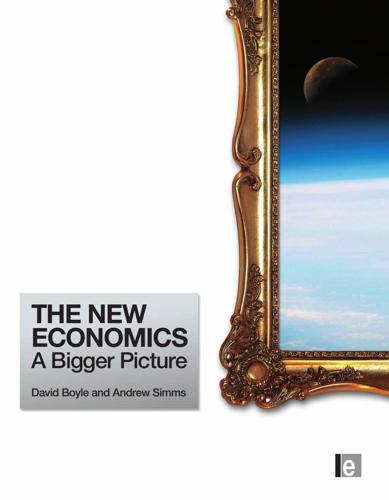
The New Economics: A Bigger Picture
by
David Boyle
and
Andrew Simms
Published 14 Jun 2009
New economics accepts that markets exist – that much is obvious – but denies that these markets are simply a matter of price. There is nothing special about money, and concentrating only on the role that money plays fails to describe our decisions very clearly. In fact, any of the human needs described in the ‘hierarchy of needs’ set out by the radical psychologist Abraham Maslow are likely to be involved in the highly complex decisions we make. One reason why the version of classical economics our rulers use gets it wrong so consistently is that it fails to understand why people behave the way they do, and the changes in our behaviour when those motivations change. Economics simply has to describe the world accurately.
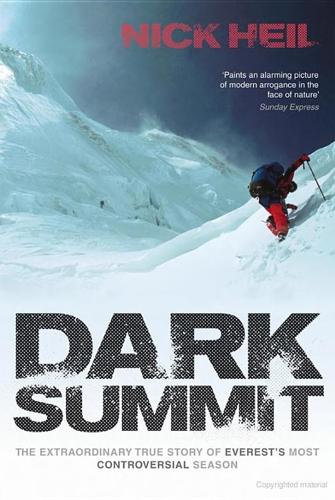
Dark Summit: The True Story of Everest's Most Controversial Season
by
Nick Heil
Published 3 Feb 2009
Additional details regarding the death of Thomas Weber can be found on sightoneverest.com and 7summits.com. Epilogue My own thinking about the motivations driving human behavior, at any altitude, was profoundly impacted by Robert Wright’s The Moral Animal. Other writers, thinkers, and journalists whose big ideas will be detected here include Joseph Campbell, Bill Moyers, and Abraham Maslow. For a deeper clarification of the way organized agencies involved in mountaineering view the role of ethics in climbing, I turned to the 2002 Tyrol Declaration, as adopted by the American Alpine Club in 2002, and intended to provide a manifesto for behavior and decision making among those involved in the sport (http://www.americanalpineclub.org/pdfs/aaj/AAJ_2003_Tyrol_Decalaration.pdf).
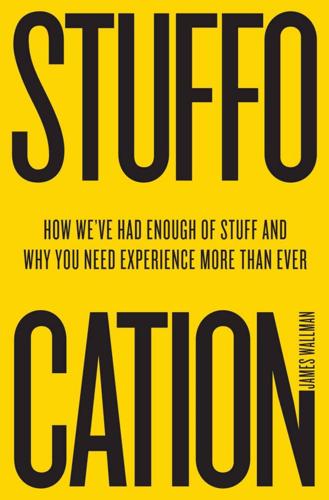
Stuffocation
by
James Wallman
Published 6 Dec 2013
For updates since then, see Ronald Inglehart, “Changing Values among Western Publics from 1970 to 2006”, West European Politics Vol. 31, Nos. 1–2, January–March 2008; also, the World Values Survey (www.worldvaluessurvey.org). Many make sense of the shift to less materialistic values by referring to Abraham Maslow, “A Theory of Human Motivation”, Psychological Review Vol. 50, No. 4, 1943. Also, read about a generational shift to post-materialism in David Brooks, “The Experience Economy”, New York Times, 14 February 2011. Advertising agency research This research was conducted by an advertising agency called Euro RSCG Worldwide, which, in the time it’s taken me to write the book, has become Havas Worldwide.
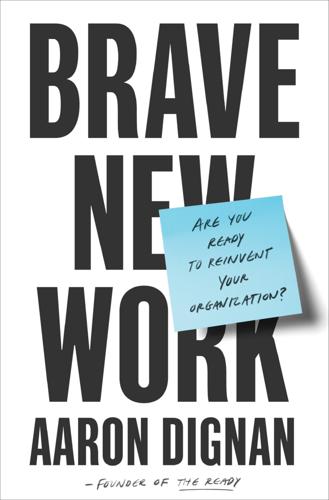
Brave New Work: Are You Ready to Reinvent Your Organization?
by
Aaron Dignan
Published 1 Feb 2019
There may be said to be two classes of people in the world; those who constantly divide the people of the world into two classes, and those who do not. —Robert Benchley The minority view, the one held by FAVI, Buurtzorg, and Evolutionary Organizations everywhere, contends that we have an innate desire to fulfill our potential and self-actualize. Rooted in the work of psychologists such as Abraham Maslow and Carl Rogers, this view maintains that people are naturally motivated and capable of self-direction. That we are worthy of trust and respect. And importantly, that we are all chameleons, capable of suppressing or distorting our true nature depending on our environment and social context. Ultimately, the People Positive leader believes that when it comes to human beings, we show up the way we are expected to show up—the way we are treated.
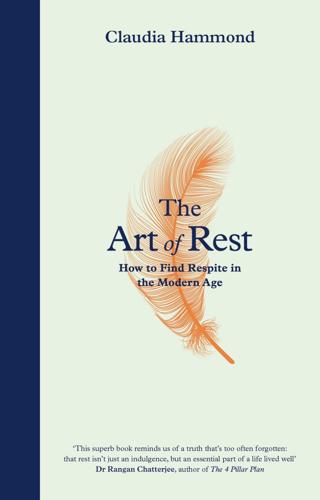
The Art of Rest: How to Find Respite in the Modern Age
by
Claudia Hammond
Published 5 Dec 2019
Our key relationship may be with a partner, or we may live alone. Either way, the chances are that we are much less likely to feel lonely when we’re alone if we have a strong human attachment to someone. The person or persons to whom we have that attachment don’t need to be physically present all the time, but we need to know we can turn to them. Abraham Maslow is the psychologist who was famous for his hierarchy of needs, often drawn as a pyramid with basic things like food and shelter, which are essential for survival, at the bottom of the pyramid and the higher needs such as love and esteem stacked up above. The happiest people of all get right to the top of the pyramid, where they achieve ‘self-actualisation’.
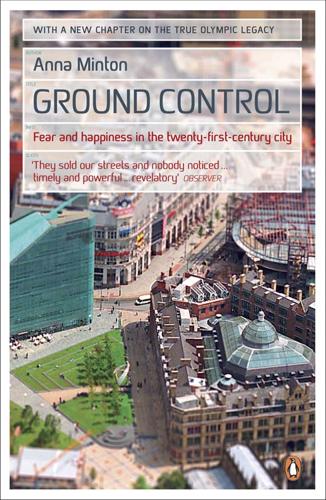
Ground Control: Fear and Happiness in the Twenty First Century City
by
Anna Minton
Published 24 Jun 2009
This journey across the Atlantic taken by American ideas, from policies on welfare to zero tolerance, is described by academics as ‘fast policy transfer’ or ‘policy tourism’. BIDs are a way of running the city which is based on the type of management models taught at business school. It relies on a set of instructions organized according to the pyramid structure made famous by the positive psychologist Abraham Maslow, who is often described as the father of management psychology. Maslow’s ‘hierarchy of needs’ created a diagram relating to what was needed for human survival, with the first layer of the pyramid centring on basic physiological needs such as breathing, food, water, sleep and sex. Subsequent levels focused on safety, love and esteem, culminating in self-actualization at the peak.
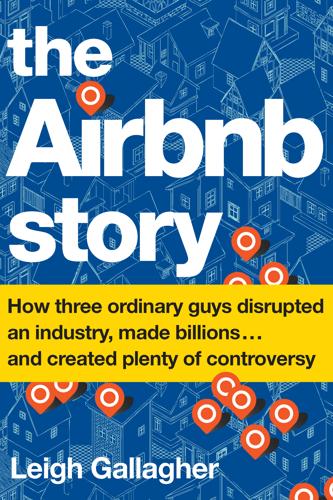
The Airbnb Story: How Three Ordinary Guys Disrupted an Industry, Made Billions...and Created Plenty of Controversy
by
Leigh Gallagher
Published 14 Feb 2017
The book’s author was Chip Conley, the founder of the Joie de Vivre boutique hotel chain, which he started in San Francisco in 1987. He grew it to thirty-eight boutique hotels, mostly in California, and then sold a majority stake in 2010. Over time, Conley himself had become something of a guru. In Peak, he explained how he had saved his company in the wake of 9/11 and the dot-com bust by applying the psychologist Abraham Maslow’s hierarchy of needs—the pyramid of physical and psychological needs humans must have met in order to achieve their full potential, with food and water at the bottom and self-actualization at the top—to corporate and individual transformation. Chesky saw in Conley’s writing both business and hotel-industry savvy and perhaps a kindred spirit of idealism (Conley talked about wanting his hotel guests to check out three days later as a “better version of themselves”).

The Impulse Society: America in the Age of Instant Gratification
by
Paul Roberts
Published 1 Sep 2014
If that loyalty came at the expense of individual freedom, Ehrenhalt writes, it brought us a critical sense of personal security, by way of “communities that were, for the most part, familiar and secure; stable jobs and relationships whose survival we did not need to worry about in bed at night; rules that we could live by, or, when we were old enough, rebel against; and people known as leaders who were trusted with the task of seeing that the rules were enforced.”27 None of which would have surprised social scientists of the time, particularly the “humanist” scholars such as psychologist Abraham Maslow. In the 1940s and 1950s, Maslow had developed a theory of human motivation dubbed the “hierarchy of needs,” which posited a critical link between material progress and enlightened social behavior. Maslow’s argument was simple: as individuals become more able to satisfy basic needs, such as food or shelter or physical security, their ambitions turn naturally and ineluctably toward higher aspirations, such as love and community standing, until eventually they reach their full human potential.

Exploring the World of Lucid Dreaming
by
Stephen Laberge, Phd
and
Howard Rheingold
Published 8 Feb 2015
Motivation and perception Another important factor that influences perception is motivation. Our motivations are our reason for doing things. There are many different kinds of motivation, ranging from the most basic drives like hunger, thirst, and sex, to psychological needs like affection, recognition, and self-esteem, and finally to the highest motives, such as altruism and what Abraham Maslow called self- actualization, the need to fulfill one’s unique potential. It is likely that all of these levels of motivation can affect perceptual processes. The influence of the lower levels of motivation is easiest to study. For example, in one experiment, children were asked to estimate the size of coins.

I, Warbot: The Dawn of Artificially Intelligent Conflict
by
Kenneth Payne
Published 16 Jun 2021
To put the various skills together creatively, we have to want to put the effort in; and to understand what needs to be done, at some level deeper than the immediate gratification of value given by a reward like the score in a game. We are highly motivated by the search for meaning. We are, in a word, curious. In the 1940s, the psychologist Abraham Maslow proposed a ‘hierarchy’ of human needs, in a pyramid shaped diagram that has achieved enduring fame among generations of social science students.9 At the base of his pyramid were physiological needs, like food and water, sleep, shelter and so on. At the apex, the more intangible need for ‘self-actualisation’, which Maslow suggested could come from achieving one’s potential, including through creative activities.

Making It All Work: Winning at the Game of Work and the Business of Life
by
David Allen
Published 30 Dec 2008
Getting clear about your goals for the following year can certainly be inspirational, at least in the off-site meeting, but it seldom gives rise to the motivation to go clean up your in-basket, your e-mail, and your head, let alone install a process to keep them that way. Trying to get a senior team enthusiastic about long-term goals and strategies when there is a major cash flow crisis not being addressed does not have much chance of being successful. The great psychologist Abraham Maslow had it right—the survival aspect of life and work must be addressed before humans have any capacity for dealing with matters of a loftier nature. But survival mode in the psyche is often not nearly as evident as its physical counterpart. I have witnessed many clients in whom the outer appearances of stability and order have masked a serious undercurrent of insecurity and vulnerability, and with whom attempts to do bigger-picture thinking and alignment could simply gain no footing.
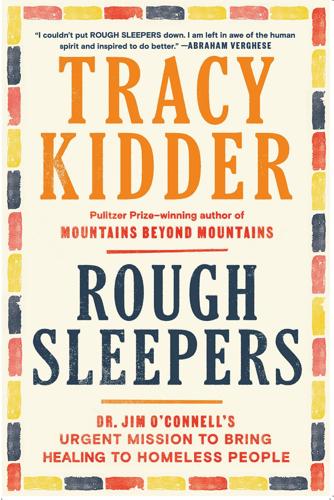
Rough Sleepers: Dr. Jim O'Connell's Urgent Mission to Bring Healing to Homeless People
by
Tracy Kidder
Published 17 Jan 2023
Sometimes we do it in an ignorance way.” To hear Tony talk, you realized that during his years in prison he had joined a long tradition of self-educated inmates, reading widely and eclectically, and with an enthusiasm unspoiled by intellectual snobbery. Tony liked suspenseful action and adventure novels, and also Freud and Jung. Abraham Maslow was a special favorite. “I related to him a lot. Reading the Bible about the Romans and stuff. Maslow would relate the verses in the Bible, he would break them down, how certain phrases in the Bible is a form of psychology that we practice today.” Then he asked me, “Ever read the psychologist Watson?”
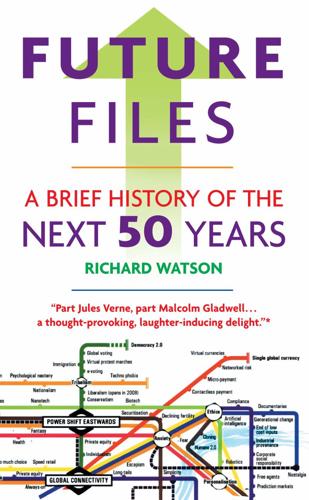
Future Files: A Brief History of the Next 50 Years
by
Richard Watson
Published 1 Jan 2008
I expect that anxiety will accelerate and deepen too, in the sense that fear will be networked globally due to the level of connectedness. This blanket of fear will be comforting for some people because it will justify non-intervention. For the rest of us the only solution to this insecurity will be our enduring sense of hope and, ironically, our ability to change. A search for meaning According to Abraham Maslow’s theory of human motivation, once our basic biological needs (food, water, sleep etc.) have been met we seek to satisfy a number of progressively higher needs. These range from safety through love and belonging to status and self-esteem. At the very top of Maslow’s hierarchy of needs is self-actualization.
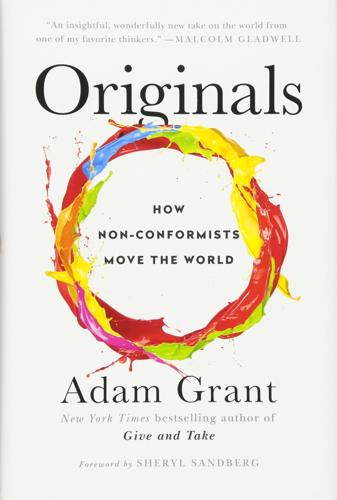
Originals: How Non-Conformists Move the World
by
Adam Grant
Published 2 Feb 2016
After imagining his own rules of language, grammar, and punctuation in his early twenties, by age fifty, as one critic remarked, “Cummings is still the experimentalist of one experiment. The fascinating thing about Cummings is that he is always talking about growth, and always remains the same.” Later, when Cummings was sixty-five, another reviewer commented that “Cummings is a daringly original poet,” but “his books are all exactly alike.” As psychologist Abraham Maslow noted, when you have a hammer, everything looks like a nail. Conversely, while experimental innovation can require years or decades to accumulate the requisite knowledge and skill, it becomes a more sustainable source of originality. It took Roger Sperry years to conduct experiments with split-brain cats and human patients to determine how the brain hemispheres worked.
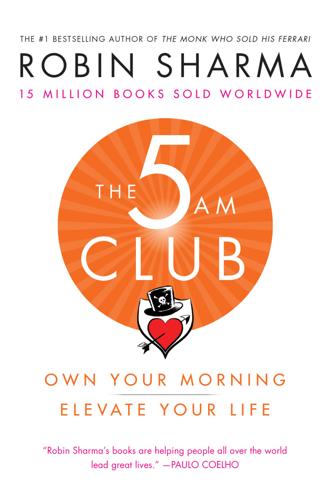
The 5 AM Club: Own Your Morning. Elevate Your Life.
by
Robin Sharma
Published 4 Dec 2018
We absolutely must venture into those unexplored places where possibility lives to become more intimate with our primal genius and to become all we are meant to be. Knowing we have higher reaches of talent and courage left to visit floods a human heart with immense excitement. This knowledge is one of the vast treasures that make life worth living. The celebrated psychologist Abraham Maslow once stated, ‘If you plan on being anything less than who you are capable of being, you will probably be unhappy all the days of your life.’ But the amygdala kicks into high gear as we exit what’s familiar and try something new. The vagus nerve gets provoked, the fear hormone cortisol gets released.

100 Years of Identity Crisis: Culture War Over Socialisation
by
Frank Furedi
Published 6 Sep 2021
Carstair’s BBC Reith Lecture in 1962.415 He called for the adoption of new methods of socialisation and warned that ‘our emotional attitudes are sometimes anachronistic and ill-adapted to the changing realities of our society’.416 From the 1940s the claim that western culture was sick and required the therapeutic intervention of experts was constantly asserted by members of the mental health lobby. Writing in 1968, the psychologist Abraham Maslow summed up this outlook when he stated that ‘sick people are made by sick cultures’.417 The term ‘sick culture’ conveyed the idea that its practices and values were responsible for people’s mental health problems and character defects. This diagnosis suggested that before these problems could be put right, a sick culture needed to be transformed.

Risk Management in Trading
by
Davis Edwards
Published 10 Jul 2014
The counterparty will make an adjustment to their trading positions to estimate the decreased loss, but no adjustment will be made to your own books and records. D. Insufficient information is provided to answer the question. Afterword If you only have a hammer, you tend to see every problem as a nail. —Abraham Maslow R isk management is a tool. Like all tools, it is better suited for some jobs than other jobs. At the end of the day, whether risk management helps or hurts an organization depends on how it is used. Some firms use risk management techniques as a core part of their business and find great benefit from it.
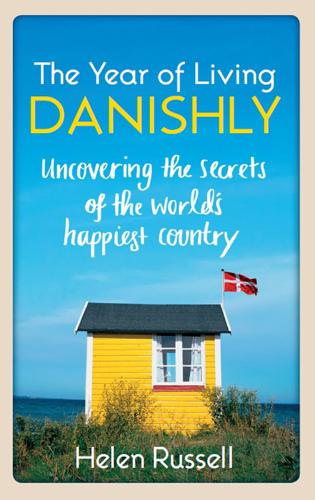
A Year of Living Danishly: My Twelve Months Unearthing the Secrets of the World's Happiest Country
by
Helen Russell
Published 14 Sep 2015
When the time comes, Little Red can start at a vuggestue or dagplejer with other under-threes where he’ll get to play and create and learn, with 75 per cent of the cost picked up by the state. This means that Lego Man and I can both afford to continue with our careers far more easily than we could in countries where childcare is akin to bankruptcy. US psychologist Abraham Maslow said that there was a five-tier hierarchy of human needs, each of which needed to be met before you could move on to worrying about other things, culminating in the hallowed goal of ‘self-actualisation’. These needs started with the ‘physiological’ (the basics: food, water, sleep etc.), followed by ‘safety’ (security of body, health and employment).
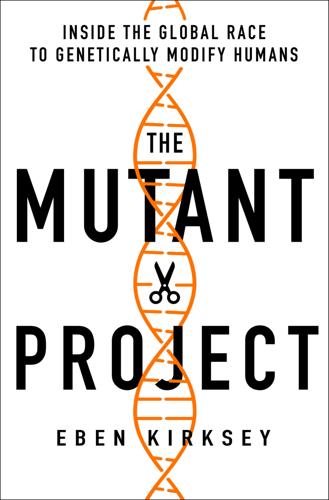
The Mutant Project: Inside the Global Race to Genetically Modify Humans
by
Eben Kirksey
Published 10 Nov 2020
He asked: What should we do with gene editing? Watson simply said: Make people better. Dr. He’s team was testing out the CRISPR technology in human embryos and then sequencing their DNA to see if it could reliably produce genetic changes. It was as if he misinterpreted a famous quote from the esteemed psychologist Abraham Maslow: “If the only tool you have is a hammer, it is tempting to treat everything as if it were a nail.”3 Amidst all of the other genetic engineering tools at his disposal, Dr. He was trying out CRISPR. He was searching for a good target in the genome to hit. Initially, the lab focused on a gene associated with cholesterol, called PCSK9.
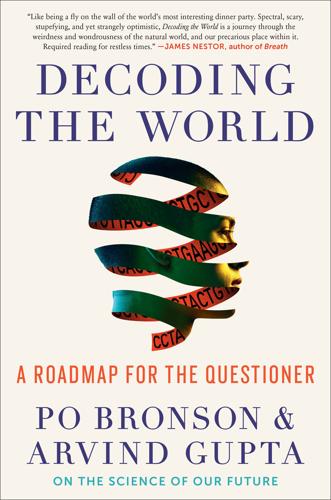
Decoding the World: A Roadmap for the Questioner
by
Po Bronson
Published 14 Jul 2020
Freedom comes from being master of your own time. Gig work is a trade-off most are willing to take, because they can prioritize their personal lives. If they want to hang with friends on Tuesday, they just don’t take a gig. They’ve seen their parents run ragged from trying to “have it all,” and they don’t want the stress. On Abraham Maslow’s pyramid, nobody knows where they are anymore. The thrift class is taking care of lots of its wants before taking care of its needs. It works only until it doesn’t. All it takes is one medical bill to trigger a downward spiral. Millennials are spending $20 less per day than their counterparts ten years ago.

Utopia Is Creepy: And Other Provocations
by
Nicholas Carr
Published 5 Sep 2016
We’re as creative as ever, but we’ve funneled our creativity into areas that produce smaller-scale, less far-reaching, less visible breakthroughs. And we’ve done that for entirely rational reasons. We’re getting precisely the kind of innovation that we desire—and that we deserve. My idea is that there’s a hierarchy of innovation that runs in parallel with Abraham Maslow’s famous hierarchy of needs. Maslow argued that human needs progress through five stages, with each new stage requiring the fulfillment of lower-level, or more basic, needs. So first we need to meet our most primitive physiological needs, and that frees us to focus on our needs for safety, and once our needs for safety are met, we can attend to our needs for belongingness, and then on to our needs for personal esteem, and finally to our needs for self-actualization.
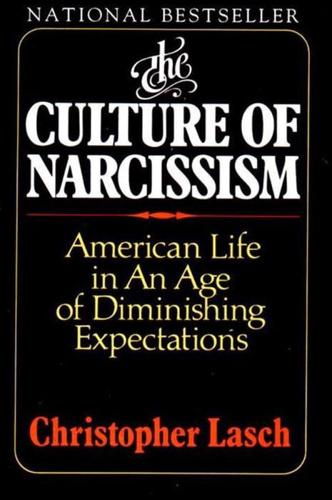
The Culture of Narcissism: American Life in an Age of Diminishing Expectations
by
Christopher Lasch
Published 1 Jan 1978
Defining authority, too crudely, as command sanctioned by force, McGregor argued that authority represented an outmoded form of social control in an age of interdependence." Command remained effective, he reasoned, only so long as workers occupied a debased, dependent position in the industrial hierarchy and found it dif" ficult to satisfy even their material needs. The psychiatrist Abraham Maslow had demonstrated that as soon as human beings satisfy the basic need for bread, shelter, and security, they devote their attention to satisfying the need for "self-actualization." Yet industrial managers McGregor complained, still took a "carrot and stick approach to the worker, unscientifically assuming that people hate work and have to be coerced into performing it or en, " Human Relations on the Job: The Factory as a Family Ex- perts in personnel management have introduced similar tech* "The tions community has expressed its concern for childhood by creating institu- " wrote Van Waters.

Consider the Fork: A History of How We Cook and Eat
by
Bee Wilson
Published 14 Sep 2012
A patent for Nicolas Appert’s revolutionary new canning process was issued in 1812, and the first canning factory opened in Bermondsey, London, in 1813. Yet it would be a further fifty years before anyone managed to devise a can opener. The birth of a new gadget often gives rise to zealous overuse, until the novelty wears off. Abraham Maslow, a guru of modern management, once said that to the man who has only a hammer, the whole world looks like a nail. The same thing happens in the kitchen. To the woman who has just acquired an electric blender, the whole world looks like soup. Not every kitchen invention has been an obvious improvement on what came before.

The 4-Hour Workweek: Escape 9-5, Live Anywhere, and Join the New Rich
by
Timothy Ferriss
Published 1 Jan 2007
I can now tell people I’m a writer rather than giving them the two-hour drug dealer explanation. What did you dream of being when you were a kid? Perhaps it’s time to sign up for Space Camp or intern as an assistant to a marine biologist. Recapturing the excitement of childhood isn’t impossible. In fact, it’s required. There are no more chains—or excuses—to hold you back. 81. Abraham Maslow, the American psychologist famous for proposing “Mas-low’s Hierarchy of Needs,” would term this goal a “peak experience.” 82. There is a place for koans and rhetorical meditative questions, but these tools are optional and outside the scope of this book. Most questions without answers are just poorly worded. 83.

The Einstein of Money: The Life and Timeless Financial Wisdom of Benjamin Graham
by
Joe Carlen
Published 14 Apr 2012
As Graham recalls, the school “had long enjoyed one of the highest reputations in the country for scholastic excellence, and I was fortunate indeed in being able to go there.”30 In its early twentieth-century heyday, the school produced such distinguished graduates as Isaac Asimov, Norman Mailer, and Abraham Maslow. Indeed, considering that Graham, who had become accustomed to topping his class, was “only” ranked third at Boys High, it was probably the most rigorous academic environment that he had yet encountered. Aside from an unfortunate scheduling conflict that prevented him from continuing his Greek studies, Graham reflects that he had “two fruitful years at Boys High.”31 His continued scholastic excellence won him election to Arista (the honor society for New York high schools), and his literary endeavors took another step forward with the publication of one of his short stories in Boys High's annual bound volume of the school's best literary works.

Superminds: The Surprising Power of People and Computers Thinking Together
by
Thomas W. Malone
Published 14 May 2018
But there is another way of thinking about wise choices that has particular resonance for the global mind. Perhaps a wise global mind shouldn’t just serve the desires of its own members; perhaps it should serve some larger purpose. Serving a Purpose Larger Than Yourself As writers like Abraham Maslow, Viktor Frankl, and many others have observed, people often have a kind of hunger for meaning in their lives. One common way for people to find that meaning is by helping to achieve some purpose larger than themselves. Some version of this theme is essentially universal in all major religious and spiritual traditions,9 and it can just as easily be secular.
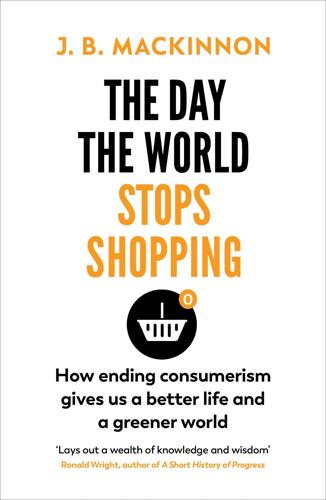
The Day the World Stops Shopping
by
J. B. MacKinnon
Published 14 May 2021
Knowingly or unknowingly, materialists often feel conflicted over their failure to be better people—they experience a sense of incongruence between their ideal self and their real self. Simplifiers tend to have narrower gaps and greater congruence. The idea of congruence appears throughout the history of writing about simpler living. Usually, it appears under names like “self-knowledge,” “self-mastery” and “self-control”; in Abraham Maslow’s famous hierarchy of needs, it shows up as “self-actualization” (and is the capstone of his pyramid). Each of these terms leaves hanging a question: What is the end result of all this knowledge, mastery and control? In materialistic societies, the goal is often said to be the realization of your fullest potential as measured in wealth, fame, accomplishment or even physical attractiveness.

Korea
by
Simon Winchester
Published 1 Jan 1988
I confessed I did not, although I muttered about having gone to Oxford with someone named that, only to remember his name was Masri, and he was one of a pair of Lebanese twins. O’Neill—everyone addressed him thus, and I never heard his first name or any title—explained, probably writing me off as a fool as he did so. Apparently someone named Abraham Maslow had written a book, a work of biblical authority in the dark world of psychiatry, on the hierarchical needs of man. It illustrated the condition of Korea perfectly, O’Neill went on. ‘The needs are these. First, a baby has a physiological need. He needs food, he needs milk. Then he realizes he needs something to hold on to—he needs security.

The Confidence Game: The Psychology of the Con and Why We Fall for It Every Time
by
Maria Konnikova
Published 28 Jan 2016
Throughout the first part of the twentieth century, psychologists saw the self as a realistic entity. They felt that it was somehow crucially important for us to have an accurate representation of our selves and our place in the world. In his seminal 1950 paper “Self-Actualizing People: A Study of Psychological Health,” Abraham Maslow, a founder of the humanist school of psychology and famous for his eponymous hierarchy of needs, argued that the fully realized, or “self-actualized,” human being must perceive reality “efficiently” and accept herself, with all her quirks and ways, no matter how much that reality might deviate from her ideal vision of herself.
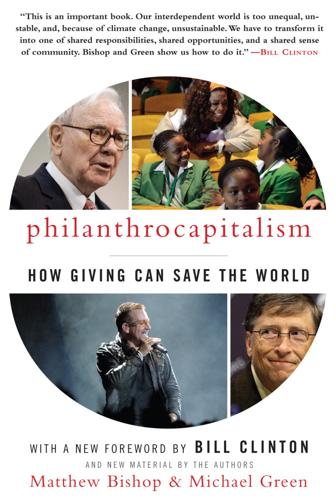
Philanthrocapitalism
by
Matthew Bishop
,
Michael Green
and
Bill Clinton
Published 29 Sep 2008
Charles Handy, author of The New Philanthropists, attributes the growing enthusiasm for philanthropy, in part, to a need for meaning in people who have found that business success is not enough to make them happy. “There is a search for a narrative, about making a difference with your life, which is vaguely religious and gives you a buzz,” he writes. Pointing to psychologist Abraham Maslow’s hierarchy of needs, Handy suggests that nowadays more people are quickly getting to the stage that Maslow described as “the highest need, for a purpose beyond ourselves. They want to make a difference—it used to happen in their 60s and 70s, now it is in their 30s and 40s.” (Indeed, this is increasingly true of the larger population, too: for example, witness the growing number of MBA graduates who want to work for NGOs or firms that say they have a social purpose.)
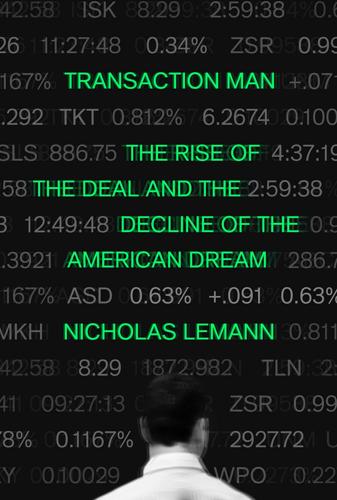
Transaction Man: The Rise of the Deal and the Decline of the American Dream
by
Nicholas Lemann
Published 9 Sep 2019
Along with all these moves went a spiritual quest that took Erhard through a wide sampling of American pop culture success and personal growth texts and programs: sales-oriented motivational material such as Napoleon Hill’s Think and Grow Rich and Dale Carnegie’s How to Win Friends and Influence People; New Age psychology like the work of Abraham Maslow and Carl Rogers; Eastern religions like Zen Buddhism and Subud; hypnosis; and cultlike seminar programs like Scientology and Mind Dynamics. In 1971 he left his career in sales and started est. Thin, intense, and voluble, with blue eyes, a booming voice, and a dominating manner, Erhard would lead his seminars for endless hours, not letting the participants eat, sleep, or go to the bathroom, leading them one by one through sessions at the microphone, where he would coax out painful childhood memories, goad, berate, and finally, magnanimously, redeem.
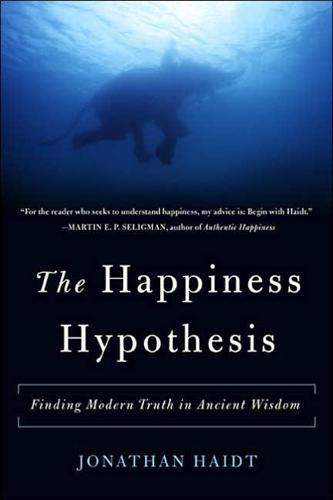
The Happiness Hypothesis: Finding Modern Truth in Ancient Wisdom
by
Jonathan Haidt
Published 26 Dec 2005
For it is then as if our tears broke through an inveterate inner dam, and let all sorts of ancient peccancies and moral stagnancies drain away, leaving us now washed and soft of heart and open to every nobler leading.43 James's "melting moods" are strikingly similar to the feelings of elevation described by Jefferson and by David Whitford. Atheists may protest that they, too, can have many of the same experiences without God. The psychologist who took such secular experiences seriously was Abraham Maslow, Harry Harlow's first graduate student a n d a founder of humanistic psychology. M a s l o w collected reports of w h a t he called "peak experiences"—those extraordinary self-transcendent m o m e n t s that feel qualitatively different from ordinary life. In a small gem of a book, Religions, Values, and Peak Ex-periences,44 Maslow listed twenty-five c o m m o n f eatures of peak experiences, nearly all of which can be found s o m e w h e r e in William James.
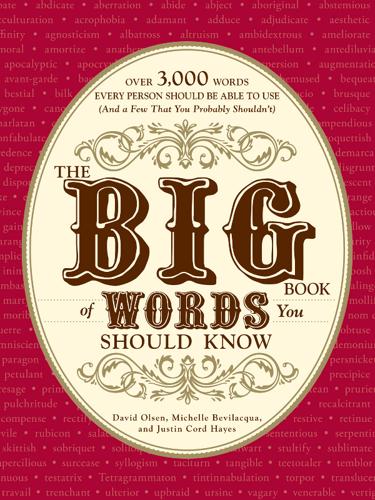
The Big Book of Words You Should Know: Over 3,000 Words Every Person Should Be Able to Use (And a Few That You Probably Shouldn't)
by
David Olsen
,
Michelle Bevilacqua
and
Justin Cord Hayes
Published 28 Jan 2009
Marie invited a HETEROGENEOUS group: poets, potters, mechanics, bureaucrats, and who knows who else. hierarchy (HIE-uh-rar-kee), noun A system (of people, concepts, groups, etc.) in which there is a ranking of entities one above another. A hierarchy often refers to a formal chain of command. The famous psychologist Abraham Maslow has established a HIERARCHY of human needs. highbrow (HIE-brow), adjective Intelligent and cultured; also, one who is pretentious or snobby about intelligence and culture. Al liked going to gallery shows to see the work of new artists, but he found the HIGHBROW analysis of some of his fellow patrons almost unbearable.
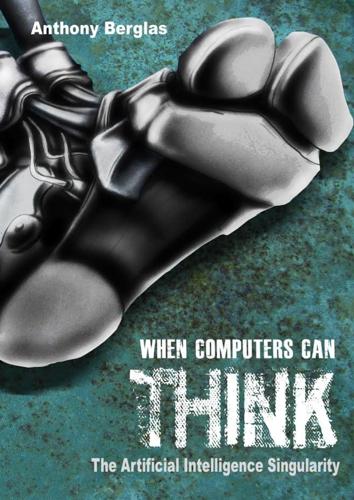
When Computers Can Think: The Artificial Intelligence Singularity
by
Anthony Berglas
,
William Black
,
Samantha Thalind
,
Max Scratchmann
and
Michelle Estes
Published 28 Feb 2015
Human instincts underly an intelligence orders of magnitude greater than any other animal, but they were created by the same process that taught the spider how to weave its web. Natural selection. Until relatively recently, people did not understand why they have the instincts that they have. But that does not matter. What does matter is that those instincts have evidently produced behaviours that in practice have proven effective in breeding grandchildren. In 1943, Abraham Maslow published a theory of human motivation based on a a hierarchy of needs. The most basic needs are for food and shelter to keep us alive. Then comes the need for safety and security, of body, continued sustenance (e.g. though employment), etc. Only once those are satisfied can people focus on higher level needs such as self esteem, respect of our peers, care of others, and creativity.
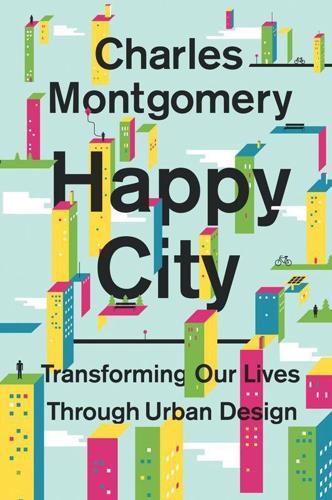
Happy City: Transforming Our Lives Through Urban Design
by
Charles Montgomery
Published 12 Nov 2013
I felt like one of the rats that researchers forced into overcrowded cages back in the 1970s. Those rats forgot how to build nests. They forgot how to socialize. They eventually started eating their offspring. This is the other great challenge posed by density: its central tensions are as much social as they are aesthetic. In the 1940s Abraham Maslow famously drew a pyramid of needs to represent the hierarchy of human motivation. At the base of the pyramid were the basic physiological needs—hunger, thirst, and sexual desire. According to Maslow, once you are satisfied on that level, you move to the next. So once you are well fed, you start worrying about safety.

Bank 3.0: Why Banking Is No Longer Somewhere You Go but Something You Do
by
Brett King
Published 26 Dec 2012
These have serious long-term implications for banks and financial institutions. Psychological impact To understand the core psychological drivers at work in the modern, hyperconnected consumer, we need to revisit one of the foundational pieces of work in respect of the theory of motivation—that of Maslow’s hierarchy of needs.16 Abraham Maslow studied exemplary people of his era such as Albert Einstein, Jane Addams, Eleanor Roosevelt, and Frederick Douglass, and determined the hierarchical progression of the individual—essentially what amounts to a theory of positive motivation and personal development. Figure 1.1: Maslow’s hierarchy of needs (c. 1943) (Credit: Wikipedia Creative Commons) The growth of technology and more efficient service paths and ways to meet our self-actualisation needs have shifted the way we value our time, set expectations and perceive ourselves in our environment.
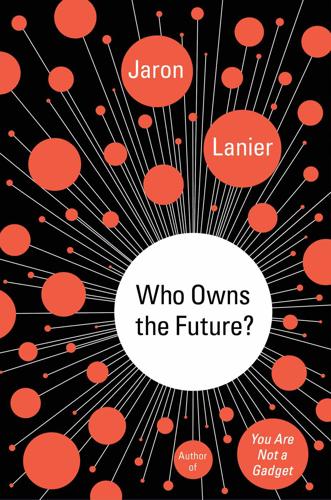
Who Owns the Future?
by
Jaron Lanier
Published 6 May 2013
Once again, why is it fluff if it’s for the benefit of the people who do it, while it’s real value if it’s for the benefit of a distant central server? Economics is not about your taste. Economics, once people have risen above basic needs into the middle class, is about the tastes of other people, whether you like it or not. It’s hard to say how much of the present-day economy is based on taste instead of need, since, as Abraham Maslow pointed out, the line shifts. At the very least, not only entertainment, but titanic industries like cosmetics, sports and recreation, tourism, design, fashion, hospitality, dining, hobbies, grooming, cosmetic surgery, and the majority of the activities of geekdom ought to count as “tastes” that have turned into needs as far as commerce is concerned.

The People vs. Democracy: Why Our Freedom Is in Danger and How to Save It
by
Yascha Mounk
Published 15 Feb 2018
Over the past years, Californians have reversed many of the draconian laws they had passed by referendum two decades earlier with strong support from white voters. And with its political leaders openly critical of President Trump’s immigration policy, the state has fast-tracked a slew of pro-immigrant bills since his election.58 Descending the Hierarchy According to Abraham Maslow, humans operate according to a hierarchy of needs. At the most basic and urgent, they desire the goods that are key to their survival, including food, shelter, and safety from physical attack. When these basic needs are met, they pay increasing attention to more rarefied desires: They seek love and belonging.

User Friendly: How the Hidden Rules of Design Are Changing the Way We Live, Work & Play
by
Cliff Kuang
and
Robert Fabricant
Published 7 Nov 2019
“User friendly is about deferring to the desires of the users,” said Justin Rosenstein, after we’d talked for an hour about how the Facebook Like button came to pass. “But there’s a hierarchy of desires. There’s a sense of wanting to eat that cheeseburger. But there’s also that higher-level desire, of wanting to be healthy and happy long-term.” Abraham Maslow, he pointed out, assumed that our needs were arranged in a neatly complementary hierarchy. By fulfilling the lower-level desires, we became freed to contemplate the higher ones. But, Rosenstein asked, “What if your neocortex and your limbic system straight-up disagree? We have this experience of a single self, but at the hardware level, the reality is that we’re a committee.

Frostbite: How Refrigeration Changed Our Food, Our Planet, and Ourselves
by
Nicola Twilley
Published 24 Jun 2024
“The system of ideas, energy, and machinery we have created to serve some essential human needs, it now appears, may, if not sufficiently tended, shrink human beings to the restricted set of needs the system was designed to satisfy,” he warned. Part of the problem is that, as psychologist Abraham Maslow famously put it, if the tool you have is a hammer, you tend to see every problem as a nail. Ever since we gained the ability to manufacture cold, refrigeration has become the default answer to the problem of preservation. If we unlearn the association between freshness and fridges, cooling could become just one of the ways we store and move food—used more sparingly, more thoughtfully, and much more sustainably.

The Long History of the Future: Why Tomorrow's Technology Still Isn't Here
by
Nicole Kobie
Published 3 Jul 2024
If this time-travelling tour of future tech helps you understand anything about this bonkers industry, I hope it’s this: none of this technology is inevitable; turning science into reality is sometimes impossible; and we get to decide what happens next. So do you still want flying cars, hyperloops, and driverless vehicles? Or perhaps … something better. Notes 1 As with any well-known quote, there’s discrepancy over who actually said it first, but psychologist Abraham Maslow did actually write this in a book in 1966.2 Seasteading is when you build a place to live in international waters in order to escape government interference (you can’t just park a boat out there, to be clear). Thiel is one of the cofounders of The Seasteading Institute. Acknowledgements I wrote too many words – to the surprise of no editor I’ve ever worked with – so my thank yous have been limited to a couple of pages, which is not enough but I’ll use it as an excuse in case I forget anyone.

Inner Entrepreneur: A Proven Path to Profit and Peace
by
Grant Sabatier
Published 10 Mar 2025
Unmitigated, careless growth has led to some of the worst economic and social disasters in recent history: Enron, the dot-com bust, the 2008 housing crash and recession. Responsible, sustainable growth requires limits. The next few chapters will explore how to test and set them. Chapter 10 Double Down on What Works to Accelerate Growth “You will either step forward into growth or you will step back into safety.” —Abraham Maslow I’ve been working in marketing for over fifteen years, and I’ve managed hundreds of millions of dollars in marketing spending. I’ve tried every growth hack out there and I’m not a fan of most of them because they don’t build sustainability into your business. While I’m all for growing as quickly as you want to, most growth hacks are short-term tricks that may generate a quick boost in sales or email subscribers but rarely work long-term and can easily distract you from more strategic planning.
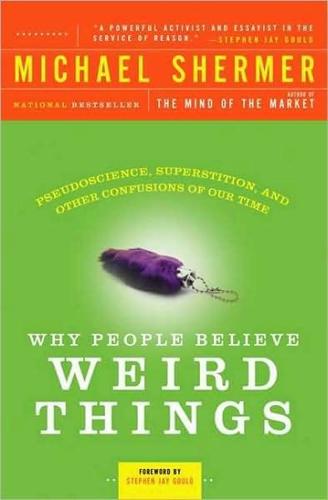
Why People Believe Weird Things: Pseudoscience, Superstition, and Other Confusions of Our Time
by
Michael Shermer
Published 1 Jan 1997
One is "Edgar Cayce's famous 'Black Book,'" which will give you a "simple scar removal formula," explain "the best hours of sleep," tell you "the best exercise," clarify what "will help the memory," and, on page 209, solve that most mysterious of medical conundrums, "how to get rid of bad breath." A.R.E. also has its own press—the A.R.E. Publishing Company—and incorporates the Atlantic University of Transpersonal Studies. The latter offers an "independent studies program" that includes the following courses: "TS 501—Introduction to Transpersonal Studies" (the works of Cayce, Abraham Maslow, Victor Frankl, and Buddhism); "TS 503—The Origin and Development of Human Consciousness" (on ancient magicians and the great mother goddess), "TS 504—Spiritual Philosophies and the Nature of Humanity" (on spiritual creation and evolution), "TS 506—The Inner Life: Dream, Meditation, and Imaging" (dreams as problem-solving tools), "TS 508—Religious Traditions" (Hinduism, Buddhism, Judaism, Islam, and Christianity), and "TS 518—Divination as a Way to Measure All" (astrology, tarot, I Ching, handwriting analysis, palmistry, and psychic readings).

Power Hungry: The Myths of "Green" Energy and the Real Fuels of the Future
by
Robert Bryce
Published 26 Apr 2011
The monsignor did not advocate sackcloth and ashes, but he implied that believers may avoid eternal carbon damnation by “not using heating and not driving a car, or one can do penance by intervening to offset emissions, in this case by planting trees.”29 Of course, there’s no sin in planting trees. But can the trees in Hungary really offset all of the Vatican’s carbon output? And for how long? It’s interesting to ponder what Abraham Maslow, the American psychologist, might have thought of all this. Maslow originated the idea of the “hierarchy of needs,” the concept that humans, as they increasingly satisfy their physiological needs—food, water, sleep, clothing, shelter, sex, and so on—begin seeking to fulfill more complex needs, such as love, esteem, and “self-actualization.”

Inside the House of Money: Top Hedge Fund Traders on Profiting in a Global Market
by
Steven Drobny
Published 31 Mar 2006
I often find it amazing how people trade things that they really have no clue about.When I worked on the energy desk after business school, a sheet called The Oil Daily had a headline one day that read,“Shell to Spud New Well.” I asked the other traders what spud meant and no one on the entire desk could answer. These guys had been trading oil for years and MASLOW’S HIERARCHY OF NEEDS Maslow’s Hierarchy of Needs is a theory proposed by Abraham Maslow in his 1943 paper entitled “A Theory of Human Motivation.” The hierarchy can be depicted as a pyramid consisting of five levels: The four lower levels are grouped together as “deficiency needs,” while the top level is referred to as “being needs.” The basic concept is that the higher needs in the hierarchy only come into focus once all the preceding needs (lower down in the pyramid) are mainly or entirely satisfied.The highest or “being” needs are also referred to as self-actualization, a description that Maslow applied to humans’ instinctual need to make the most of their innate or unique abilities.
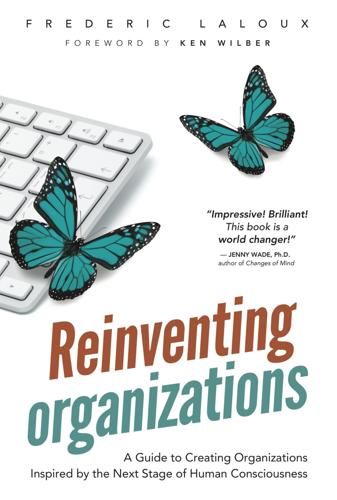
Reinventing Organizations: A Guide to Creating Organizations Inspired by the Next Stage of Human Consciousness
by
Frederic Laloux
and
Ken Wilber
Published 9 Feb 2014
A great number of people—historians, anthropologists, philosophers, mystics, psychologists, and neuroscientists—have delved into this most fascinating question: how has humanity evolved from the earliest forms of human consciousness to the complex consciousness of modern times? (Some inquired into a related question: how do we human beings evolve today from the comparatively simple form of consciousness we have at birth to the full extent of adult maturity?) People have looked at these questions from every possible angle. Abraham Maslow famously looked at how human needs evolve along the human journey, from basic physiological needs to self-actualization. Others looked at development through the lenses of worldviews (Gebser, among others), cognitive capacities (Piaget), values (Graves), moral development (Kohlberg, Gilligan), self-identity (Loevinger), spirituality (Fowler), leadership (Cook-Greuter, Kegan, Torbert), and so on.

Reality Is Broken: Why Games Make Us Better and How They Can Change the World
by
Jane McGonigal
Published 20 Jan 2011
As Brad Bushman, one coauthor of the studies and a professor of communications and psychology at the University of Michigan’s Institute for Social Research, puts it, “These findings suggest there is an upward spiral of prosocial gaming and helpful behavior.”34 In other words, the more we help in games, the more we help in life. And so there’s good reason to believe that the more we learn to enjoy serving epic causes in game worlds, the more we may find ourselves contributing to epic efforts in the real world. THE PSYCHOLOGIST Abraham Maslow famously said, “It isn’t normal to know what we want. It is a rare and difficult psychological achievement.”35 But today’s best games give us a powerful tool for achieving exactly that rare kind of self-knowledge. Games are showing us exactly what we want out of life: more satisfying work, better hope of success, stronger social connectivity, and the chance to be a part of something bigger than ourselves.

Open: The Story of Human Progress
by
Johan Norberg
Published 14 Sep 2020
And nowadays we rarely die suddenly because of an unexpected threat, but in most cases at an advanced age, in a hospital bed, due to cancer or heart disease. If we could only die from sudden accidents and violence, life expectancy in the US – the country of firearms and heavy traffic – would increase from seventy-eight years to an average of 8938 years!13 We also picked up more emancipatory, libertarian values along the way, as Abraham Maslow’s hierarchy of needs suggested, and which has been documented by Ronald Inglehart and the World Values Survey project. Once we had food, warmth and physical safety, the need for self-esteem and self-actualization took up more of our thinking. The Industrial Revolution, modern technology, mass education and urbanization made it possible for most people to take physical and material survival for granted for the first time in history.
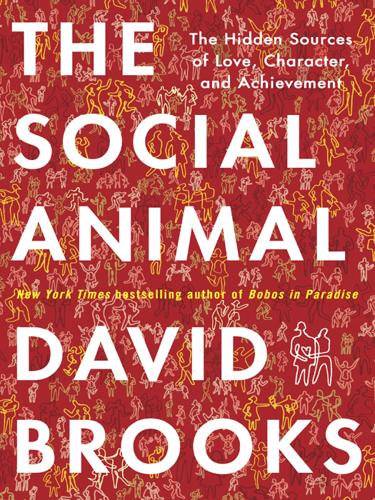
The Social Animal: The Hidden Sources of Love, Character, and Achievement
by
David Brooks
Published 8 Mar 2011
During some years he wore the mask of a scholar, while at others he wore the mask of a businessman, and who was the true self beneath the masks? In The Presentation of Self in Everyday Life, Erving Goffman argues that it’s masks all the way down. Scientists and writers have tried to impose certain schema to describe how life evolves. Abraham Maslow defined his hierarchy of needs—from the physical to safety, love, esteem, and self-actualization. But much recent research has cast doubt on the idea that human lives fall into such neat schemas—there are no simple progressions of the sort Maslow described. Some days Harold felt defeated, and concluded that life is unknowable.
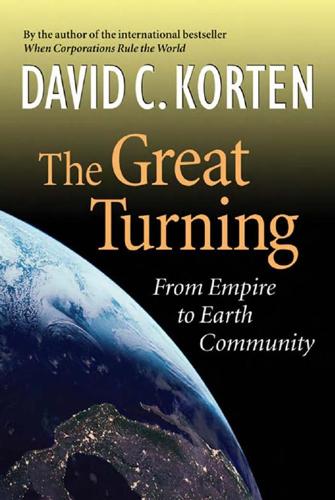
The Great Turning: From Empire to Earth Community
by
David C. Korten
Published 1 Jan 2001
Below I set out a five-stage map of the developmental pathway from the least mature to the most mature orders of human consciousness. I draw from the work of many prominent students of human development, including Larry Daloz, Erik Erikson, Carol Gilligan, Stanley Greenspan, Robert Kegan, Lawrence Kohlberg, Abraham Maslow, The Possibility 43 Rollo May, Sharon Parks, Jean Piaget, and Carl Rogers. The map provides a framework for understanding the central place of a politics of consciousness in the work of the Great Turning.1 First Order: Magical Consciousness The Magical Consciousness of a young child of two to six years of age experiences the world as fluid and subject to the whims of magical beings both benevolent and malevolent.
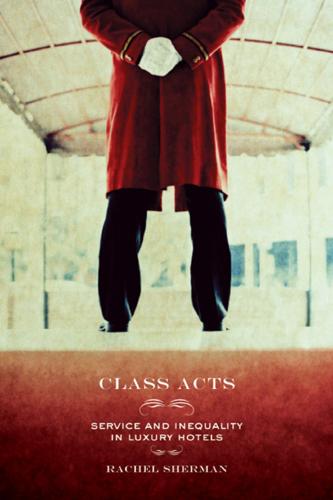
Class Acts: Service and Inequality in Luxury Hotels
by
Rachel Sherman
Published 18 Dec 2006
While managerial rhetoric sometimes helped workers to see guests as “above” them, it also brought UC_Sherman (O).qxd 178 10/3/2006 2:01 PM Page 178 chapter four the guest “down” to the worker’s level, encouraging her to see the guest as “just human,” with basic needs similar to her own. Alice invoked Abraham Maslow’s “hierarchy of needs” in more than one training session I attended, thus framing the guests’ desires as objective, fundamental needs.20 In the same vein, she emphasized in the orientation that clients might be lost in an unfamiliar city or tired after an arduous journey. Even after acknowledging that guests were very wealthy—”probably not me or you or our friends”—she said, “The things money can’t buy for them are great service and quiet.”

The Rational Optimist: How Prosperity Evolves
by
Matt Ridley
Published 17 May 2010
Blackden, C.M. and Wodon, Q. 2006. Gender, Time Use and Poverty in SubSaharan Africa. World Bank. p. 40 ‘the Shire River in Machinga province’. http://allafrica.com/stories/200712260420.html. p. 41 ‘not just the services you need but also those you crave.’ The distinction between needs and wants, as expressed by Abraham Maslow’s hierarchy of needs, is a mischievous one: people evolved to be ambitious, to start exaggerating their social status or sexual worth, long before they have satisfied their basic needs. See Miller, G. 2009. Spent. Heinemann. p. 41 ‘the entire concept of food miles is “a profoundly flawed sustainability indicator”’.
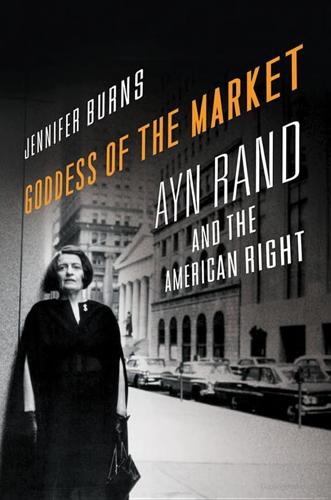
Goddess of the Market: Ayn Rand and the American Right
by
Jennifer Burns
Published 18 Oct 2009
Nathaniel Branden, The Psychology of Self Esteem (Los Angeles: Nash, 1969). Branden described his later therapeutic practice as eclectic and experimental, drawing on gestalt therapy, Alexander Lowen’s bioenergetic therapy, and his own sentence-completion methodology. Other approaches of interest to Branden were those of Wilhelm Reich, Arthur Janov, Abraham Maslow, and Thomas Szasz. “Break Free! An Interview with Nathaniel Branden,” Reason, October 1971, 4–19. Branden’s connections to and influence upon New Age psychology, which one commentator identifies as “the quest for the higher self,” are well worth exploring. Richard Kyle, The New Age Movement in American Culture (Lanham, MD: University Press of America, 1995), 137.
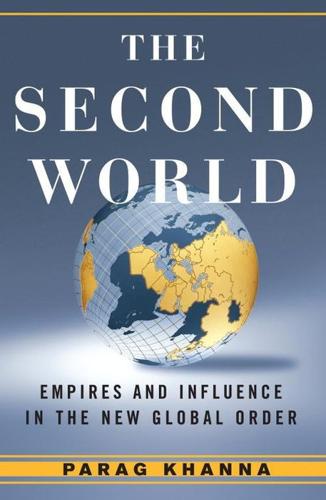
Second World: Empires and Influence in the New Global Order
by
Parag Khanna
Published 4 Mar 2008
As Alexander Wendt neatly put it, “States are people too.”33 Human psychology and state psychology have innumerable parallels. An arms race is like a competition among rival gangs for bigger weapons; the historical memory of a country, which forms its national identity, is passed down through generations like family histories and photo albums. And most fundamentally, both people and nations obey Abraham Maslow’s “hierarchy of needs,” prioritizing deficit needs (the physiological demands of satisfying hunger and thirst), then security needs (shelter and stability), and finally being needs (the sense of belonging, love, respect and recognition).34 Democratic governance falls into this latter category, for meeting basic survival and economic needs is what gives people the means to participate actively in democratic politics.35 Pure democracy is like haute couture: One can admire it, but it is not practical for everyday use.
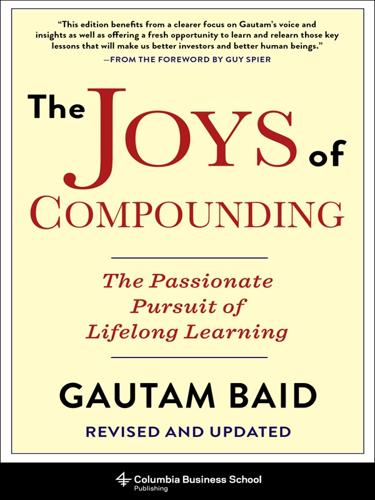
The Joys of Compounding: The Passionate Pursuit of Lifelong Learning, Revised and Updated
by
Gautam Baid
Published 1 Jun 2020
—Naval Ravikant According to Gordon Matthews, professor of anthropology at the Chinese University of Hong Kong, how people understand ikigai can, in fact, often be mapped to two other Japanese ideas—ittaikan and jiko jitsugen. Ittaikan refers to “a sense of oneness with, or commitment to, a group or role,” while jiko jitsugen relates more to “self-realization.” Self-realization is closely linked to the concept of self-actualization, best known in the field of psychology in the context of Abraham Maslow’s hierarchy of needs. Self-actualized people are those who are fulfilled and are doing all that they are capable of. Maslow described the good life as one directed toward self-actualization, the higher need. Self-actualization occurs when you maximize your potential by doing your best. Maslow shared the names of those individuals he believed to be self-actualized, including Abraham Lincoln, Thomas Jefferson, and Albert Einstein, to elaborate the common characteristics of the self-actualized person.

Site Reliability Engineering: How Google Runs Production Systems
by
Betsy Beyer
,
Chris Jones
,
Jennifer Petoff
and
Niall Richard Murphy
Published 15 Apr 2016
Successfully operating a service entails a wide range of activities: developing monitoring systems, planning capacity, responding to incidents, ensuring the root causes of outages are addressed, and so on. This section addresses the theory and practice of an SRE’s day-to-day activity: building and operating large distributed computing systems. We can characterize the health of a service—in much the same way that Abraham Maslow categorized human needs [Mas43]—from the most basic requirements needed for a system to function as a service at all to the higher levels of function—permitting self-actualization and taking active control of the direction of the service rather than reactively fighting fires. This understanding is so fundamental to how we evaluate services at Google that it wasn’t explicitly developed until a number of Google SREs, including our former colleague Mikey Dickerson,1 temporarily joined the radically different culture of the United States government to help with the launch of healthcare.gov in late 2013 and early 2014: they needed a way to explain how to increase systems’ reliability.

Blueprint: The Evolutionary Origins of a Good Society
by
Nicholas A. Christakis
Published 26 Mar 2019
Morality, insofar as it relates to the making of a good society, which is what makes it possible for us to be fully human, is guided by our evolutionary past. In answering the question of what is a good society, therefore, we must ask, What kind of society is good for us? What do we need from, and what can we offer to, one another? Here, again, the blueprint provides an answer. There is a long tradition, epitomized by psychologist Abraham Maslow, of ordering human needs in terms of those that are necessary for survival and that motivate and animate human actions.64 Maslow arranged these needs from most basic to most advanced, from “physiological needs,” to “safety,” “belonging,” “esteem,” and finally “self-actualization.” In a simplified version of his theory, one moves in one direction through these needs so that, in a particular setting or across a life course, one satisfies physiological needs before safety needs, safety needs before esteem needs, and so on.
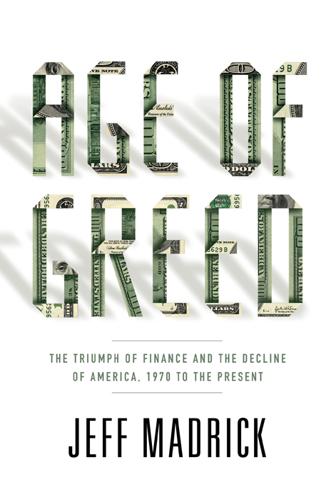
Age of Greed: The Triumph of Finance and the Decline of America, 1970 to the Present
by
Jeff Madrick
Published 11 Jun 2012
He called this managerial approach Theory X. His own view, which he termed Theory Y, emphasized personal creativity and independence, posited that work was both natural to human life and valuable to those who did it. In a 1960 book, McGregor married Mayo’s principles to the influential work of another psychologist, Abraham Maslow, who in the 1950s had emphasized people’s strong desire for self-esteem. If work could provide such self-esteem, businesses would get the most out of their workers. Peters and his co-author, Robert Waterman, absorbed this alternative tradition. In 1982, they published their findings in a book that became a landmark, In Search of Excellence.
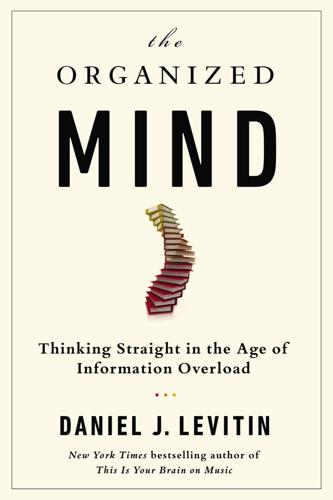
The Organized Mind: Thinking Straight in the Age of Information Overload
by
Daniel J. Levitin
Published 18 Aug 2014
If you’re engaged in any kind of creative pursuit, one of the goals in organizing your time is probably to maximize your creativity. We’ve all had the experience of getting wonderfully, blissfully lost in an activity, losing all track of time, of ourselves, our problems. We forget to eat, forget that there is a world of cell phones, deadlines, and other obligations. Abraham Maslow called these peak experiences in the 1950s, and more recently the psychologist Mihaly Csikszentmihalyi (pronounced MEE-high, CHEECH-sent-mee-high) has famously called this the flow state. It feels like a completely different state of being, a state of heightened awareness coupled with feelings of well-being and contentment.
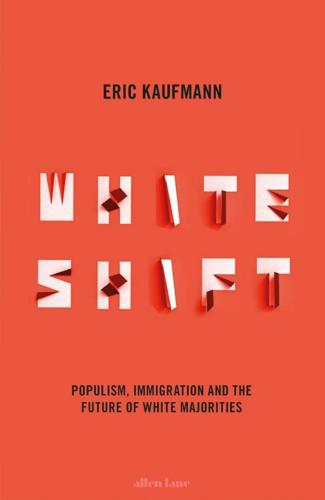
Whiteshift: Populism, Immigration and the Future of White Majorities
by
Eric Kaufmann
Published 24 Oct 2018
Public opinion on immigration tends to sour when numbers increase and sources diverge from the ethnic core of the country. Why? There are three important value-driven segments of the electorate who generally oppose immigration. Pat Dade from the market research firm Cultural Dynamics has been conducting values surveys for three decades based on the ideas of two social psychologists, Abraham Maslow and Shalom Schwarz. Dade fields surveys containing several hundred questions which enable him to map people’s answers in two-dimensional space. These heat maps show how answers to a question such as voting populist correlate with a battery of other questions. From experience, Dade arrays the questions as dots on a map, with questions that tend to be answered similarly positioned close together.
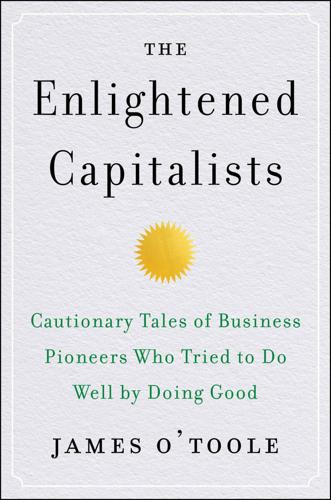
The Enlightened Capitalists
by
James O'Toole
Published 29 Dec 2018
Modern business has reduced the size of that I by ignoring or grossly violating the innate requirements of workers.”37 Taken as a whole, Johnson’s philosophy looks back to the unfulfilled social agenda of the Progressive Era, and forward to the managerial theories of such humanist scholars as Douglas McGregor and Abraham Maslow. Although Johnson was putting in place at J&J the practices he advocated in his book, he made no specific mention of his own company in its pages. For example, he wrote that business leaders needed to adopt an “industrial credo; a statement of responsibility in the strictly business realm,” a list of duties he claimed all companies had to their many constituencies.
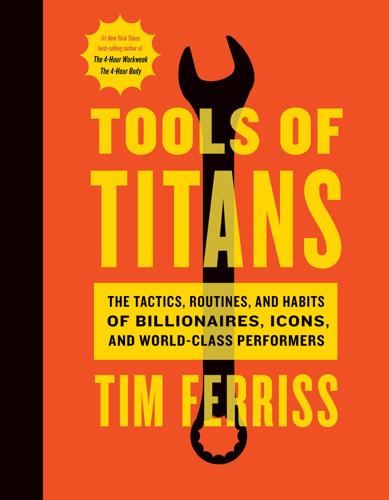
Tools of Titans: The Tactics, Routines, and Habits of Billionaires, Icons, and World-Class Performers
by
Timothy Ferriss
Published 6 Dec 2016
” ✸ Video and YouTube channel recommendation “Did Shakespeare Invent Love?” by Nerdwriter. TF: My favorite podcast is Hardcore History by Dan Carlin (page 285). Nerdwriter can be thought of as a short-form video complement to HH. ✸ Do you have any quotes that you live your life by or think of often? “We are simultaneously gods and worms.”—Abraham Maslow ✸ Advice to your 25- or 30-year-old self? “I would encourage my younger self to just not be afraid, right? To realize that a lot of things that were—I don’t want to say crippling anxieties, but—definitely ever-pervasive fears in my life growing up were unnecessary. A lot of time was wasted, a lot of energy was wasted, being worried.”

Enlightenment Now: The Case for Reason, Science, Humanism, and Progress
by
Steven Pinker
Published 13 Feb 2018
In his book Freedom Rising, the political scientist Christian Welzel (building on a collaboration with Ron Inglehart, Pippa Norris, and others) has proposed that the process of modernization has stimulated the rise of “emancipative values.”36 As societies shift from agrarian to industrial to informational, their citizens become less anxious about fending off enemies and other existential threats and more eager to express their ideals and to pursue opportunities in life. This shifts their values toward greater freedom for themselves and others. The transition is consistent with the psychologist Abraham Maslow’s theory of a hierarchy of needs from survival and safety to belonging, esteem, and self-actualization (and with Brecht’s “Grub first, then ethics”). People begin to prioritize freedom over security, diversity over uniformity, autonomy over authority, creativity over discipline, and individuality over conformity.
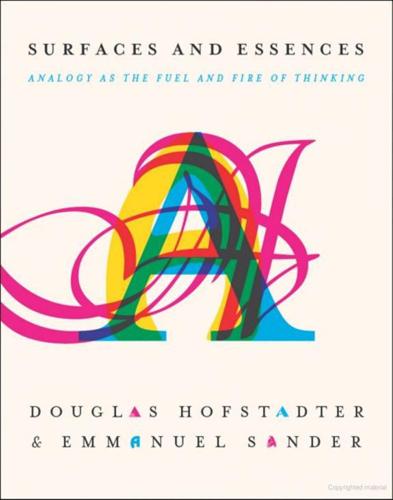
Surfaces and Essences
by
Douglas Hofstadter
and
Emmanuel Sander
Published 10 Sep 2012
Thus starting with the idea that a crown has a volume, he might soon slide to the idea that a door has a volume, then that a chair has a volume, that an animal has a volume, that a person has a volume, that I myself have a volume, that parts of my body have various volumes, that the water that I displace in my tub has a volume… Aha! That’s it! Of Hammers and Nails Obsessions bring out curious connections that no one would dream of otherwise. This is reminiscent of a maxim originated by the psychologist Abraham Maslow: “If the only tool you have is a hammer, it is tempting to treat everything as a nail.” As a high-school student, J. had such a “hammer”, for he was obsessed by pinball machines, playing on them several hours each day. Getting higher and higher scores assumed increasing importance in his life, and suddenly one day he saw every human life as the trajectory of a ball in a pinball machine.
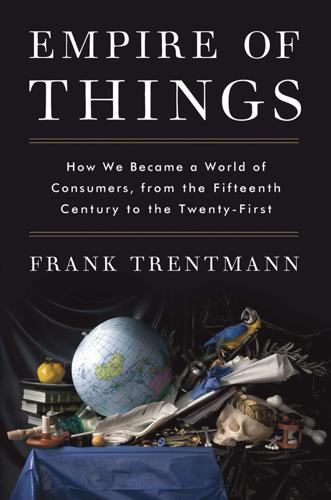
Empire of Things: How We Became a World of Consumers, From the Fifteenth Century to the Twenty-First
by
Frank Trentmann
Published 1 Dec 2015
It jars with the sometimes instinctive assumption that people turn to goods only for identity, communication or sheer fun after they have fulfilled their basic needs for food, shelter, security and health. It is no coincidence that this psychological model of the ‘hierarchy of needs’, initially proposed by the American Abraham Maslow in 1943, gained in popularity just as affluence began to spread. According to this theory, Heidi Simon should have asked to trade in the Vespa for bricks and mortar and perhaps some savings bonds, rather than hoping for an upgrade to the 123cc Lambretta with its sleek single-piece tubular frame.